Vicksburg 160th
Celebrations to Observe the Union Victory were Memorable
By Professor Earnest Veritas Special Correspondent to Civil War News – Western Theater –
The 160th anniversary of the surrender of Vicksburg, Miss., by General John C. Pemberton to General Ulysses S. Grant was observed on July 1st and 2nd, last, at the National Military Park with the paradox of roaring cannon, contrasted with quiet talks from the soldiers camped on the battlefield around the Shirley house in the sweltering heat of a Mississippi July. Visitors to the park that weekend were also treated to the dynamic story of how the siege came to a quick and merciful end without a final assault on Confederate lines as was planned. That very brief sequence of events was told in the visitor center auditorium in presentations from the two opposing commanders, Gen. Ulysses S. Grant (Curt Fields) and John C. Pemberton (Morgan
Gates). The generals came together and explained how the surrender was worked out in less than one day in their presentation “Vicksburg: Just 24 Hours,” which was given in the morning and afternoon of both days.
Cannon firing demonstrations were given throughout both days by a Federal gun crew at the visitor center and a Confederate gun crew at the 2nd Texas Lunette (at tour stop 12). They had alternating schedules to accommodate the visitors to the park for the 160th observations.
At the visitor center, the Federal gun crew fired at 9, 10, and 11 a.m. on Saturday and Sunday.
The Confederate gun crew could be viewed firing their cannon at Tour Stop #12 (2nd Texas Lunette): 9:15, 10:15, and 11:15 a.m. on Saturday and Sunday. The Confederate crew was visiting from Kennesaw Mountain National Battlefield.

The hardy troops of the 45th Illinois Infantry were encamped

on the grounds around the Shirley House on the battlefield. Their encampment was authentic and most impressive. While they were involved in normal camp-life duties, they talked with various visitors to the park that weekend. In an overview of the Vicksburg
Campaign, a soldier of the 45th explained the importance of Vicksburg, the campaign from 1862–1863, emphasizing the role of the common soldier in camp and combat.
They talked of the particular uses and importance of the equipment they carried as they showed their weapons, uniforms, backpacks, blanket rolls, and other equipment they used.
A soldier spoke of the challenges and hardships faced by Union soldiers as they besieged Vicksburg.
Several soldiers talked about the typical rations they were issued and demonstrated methods for cooking.
Some of the 45th talked about the June 25th mine explosion at the 3rd Louisiana Redan and the desperate attempt to break through the Confederate lines, emphasizing the role of the 45th Illinois in that battle.
Doug Baum brought his Texas Camel Corps to the park for both days of the anniversary observation to represent Old Douglas, the vaunted mascot of the 43rd Mississippi Infantry.
Doug had two camels available for the young (and not so young) visitors to admire, pet, and look at up close. Doug also talked about the story of Old Douglas, the Camel mascot of the 43rd Mississippi Infantry.
Douglas was a hold-over from the 1850’s Texas Camel Experiment. During the War, he carried the regimental band instruments and other camp equipment for the 43rd Mississippi. Sadly, Douglas was killed by a sniper while at Vicksburg. He was buried in the old city cemetery.
For an added treat for visitors to the park, Generals Grant and Pemberton spent time conversing on the famous ‘Surrender Knoll’ where they were on July 3rd, 1863.
For more information about Vicksburg National Military Park, visit www.nps.gov/vick/ index.htm.
Morgan Gates is a licensed Vicksburg battlefield guide and may be reached on his Facebook

Vol. 49, No. 9 40 Pages, September 2023 $4.00 America’s Monthly Newspaper For Civil War Enthusiasts 18 – American Battlefield Trust 34 – Book Reviews 13 – Central Virginia Battlefield Trust 38 – Civil War Trails 30 – Critic’s Corner 32 – Emerging Civil War 39 – Events 28 – The Graphic War 22 – The Source 24 – This And That 10 – The Unfinished Fight 20 – Through the Lens H Vicksburg . . . . . . . . . . . . see page 4
Reenactors of the 45th Illinois Infantry at Vicksburg’s 160th anniversary. (Buddy Secor)
Union artillery fire their 12-pounder Napoleon during the event. (Buddy Secor)
Civil War News
Published by Historical Publications LLC
2800 Scenic Drive, Suite 4-304, Blue Ridge, GA 30513 800-777-1862 • Facebook.com/CivilWarNews mail@civilwarnews.com • civilwarnews.com
Advertising: 800-777-1862 • ads@civilwarnews.com
Jack W. Melton Jr. Publisher C. Peter & Kathryn Jorgensen Founding Publishers
Editor: Lawrence E. Babits, Ph.D.
Advertising, Marketing & Assistant Editor: Peggy Melton
Columnists: Craig Barry, Salvatore Cilella, Stephen Davis, Stephanie Hagiwara, Gould Hagler, Chris Mackowski, Tim Prince, and Michael K. Shaffer
Contributor & Photography Staff: Greg Biggs, Curt Fields, Michael Kent, Shannon Pritchard, Leon Reed, Bob Ruegsegger, Carl Sell Jr., Gregory L. Wade, Joan Wenner, J.D., Joseph Wilson
Civil War News (ISSN: 1053-1181) Copyright © 2023 by Historical Publications LLC is published 12 times per year by Historical Publications LLC, 2800 Scenic Drive, Suite 4-304, Blue Ridge, GA 30513. Monthly. Business and Editorial Offices: 2800 Scenic Drive, Suite 4-304, Blue Ridge, GA 30513, Accounting and Circulation
Offices: Historical Publications LLC, 2800 Scenic Drive, Suite 4-304, Blue Ridge, GA 30513. Call 800-777-1862 to subscribe. Periodicals postage paid at U.S.P.S. 131 W. High St., Jefferson City, MO 65101.
POSTMASTER: Send address changes to: Historical Publications LLC 2800 Scenic Drive Suite 4-304 Blue Ridge, GA 30513

Display advertising rates and media kit on request. The Civil War News is for your reading enjoyment. The views and opinions expressed herein are those of its authors, readers and advertisers and they do not necessarily reflect the official policy or position of Historical Publications, LLC, its owners and/or employees. P
:
Please send your book(s) for review to: Civil War News
2800 Scenic Drive Suite 4-304 Blue Ridge, GA 30513
Email cover image to bookreviews@civilwarnews.com. Civil War News cannot assure that unsolicited books will be assigned for review. Email bookreviews@civilwarnews.com for eligibility before mailing.
ADVERTISING INFO:
Email us at ads@civilwarnews.com Call 800-777-1862
MOVING?
Contact us to change your address so you don’t miss a single issue. mail@civilwarnews.com • 800-777-1862
SUBSCRIPTION RATES
U.S. Subscription rates are $41/year, digital only $29.95/year, add digital to paper subscription for only $10/year more. Subscribe securely at CivilWarNews.com
Current Event Listings
To see all of this year’s current events visit our website at: HistoricalPublicationsLLC.com
Terms and Conditions
The following terms and conditions shall be incorporated by reference into all placement and order for placement of any advertisements in Civil War News by Advertiser and any Agency acting on Advertiser’s behalf. By submitting an order for placement of an advertisement and/or by placing an advertisement, Advertiser and Agency, and each of them, agree to be bound by all of the following terms and conditions:
1. All advertisements and articles are subject to acceptance by Publisher who has the right to refuse any ad submitted for any reason. Mailed articles and photos will not be returned.
2. The advertiser and/or their agency warrant that they have permission and rights to anything contained within the advertisement as to copyrights, trademarks or registrations. Any infringement will be the responsibility of the advertiser or their agency and the advertiser will hold harmless the Publisher for any claims or damages from publishing their advertisement. This includes all attorney fees and judgments.
3. The Publisher will not be held responsible for incorrect placement of the advertisement and will not be responsible for any loss of income or potential profit lost.
4. All orders to place advertisements in the publication are subject to the rate card charges, space units and specifications then in effect, all of which are subject to change and shall be made a part of these terms and conditions.
5. Photographs or images sent for publication must be high resolution, unedited and full size. Phone photographs are discouraged. Do not send paper print photos for articles.
6. At the discretion of Civil War News any and all articles will be edited for accuracy, clarity, grammar, and punctuation per our style guide.
7. Articles can be emailed as a Word Doc attachment or emailed in the body of the message. Microsoft Word format is preferred. Email articles and photographs: mail@civilwarnews.com
8. Please Note: Articles and photographs mailed to Civil War News will not be returned unless a return envelope with postage is included.
2 CivilWarNews.com September 2023 2 September 2023 CivilWarNews.com
UBLISHERS
Deadlines for Advertising or Editorial Submissions is the 20th of each month. Email: ads@civilwarnews.com Digital Issues of CWN are available by subscription alone or with print plus CWN archives at CivilWarNews.com Advertisers In This Issue: Ace Pyro LLC 27 American Battlefield Trust 26 Artilleryman Magazine 12 Ashley R. Rhodes Militaria 28 CWMedals.com, Civil War Recreations 19 Civil War Navy Magazine 29 College Hill Arsenal – Tim Prince 26 Day by Day through the Civil War in Georgia – Book 23 Dell’s Leather Works 23 Dixie Gun Works Inc. 12 Georgia’s Confederate Monuments – Book 17 Gettysburg Foundation 9 Gunsight Antiques 17 Harpers Ferry Civil War Guns 2 Hood’s Defeat Near Fox’s Gap – Book 35 The Horse Soldier 5 James Country Mercantile 38 Jeweler’s Daughter 11 Le Juneau Gallery 5 “I thank the Lord I’m not a Yankee” – Book 31 Mike McCarley – Wanted Fort Fisher Artifacts 23 National Museum of Civil War Medicine 33 N-SSA 23 Regimental Quartermaster 19 Richard LaPosta Civil War Books 35 Shiloh Chennault Bed and Breakfast 12 Suppliers to the Confederacy – Book 26 Ulysses S. Grant impersonator – Curt Fields 12 Events: Chicago Civil War Show 4 Elite Collectors Civil War Show 23 MKShows, Mike Kent 3, 17 Military Antique Show – Virginia 27 Poulin’s Auctions 40 Remembrance Day Ball in Gettysburg 8 Rock Island Auction Company 23
Asheville Gun & Knife Show
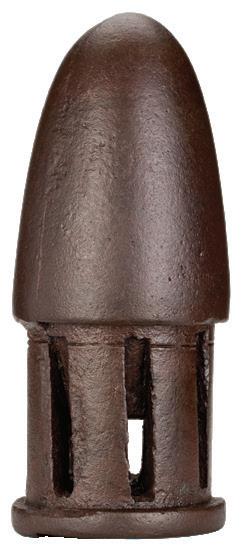


WNC Ag Center 1301 Fanning Bridge Road Fletcher, NC
Oct. 7 & 8, 2023

Myrtle Beach Gun & Knife Show


Myrtle Beach Convention Center 2101 North Oak Street Myrtle Beach, SC 29579


Nov. 4 & 5, 2023

Exchange Park Fairgrounds 9850 Highway 78 Ladson, SC 29456

Mike Kent & Associates, LLC • PO Box 685 • Monroe, GA 30655 770-630-7296 • Mike@MKShows.com • www.MKShows.com Military Collectible & Gun & Knife Shows Presents The Finest Williamson County Ag Expo Park 4215 Long Lane Franklin, TN 37064 Dec. 2 & 3, 2023 Middle TN (Franklin) Civil War Show Promoters of Quality Shows for Shooters, Collectors, Civil War and Militaria Enthusiasts Exchange Park Fairgrounds
SC 29456
9 & 10, 2023 Charleston Gun & Knife Show
9850 Highway 78 Ladson,
Sept.
Show
Nov. 25 & 26, 2023 Charleston Gun & Knife
page: Morgan Gates. One may also contact him directly through the park.
Also, visit Friends of Vicksburg National Military Park and Campaign.
Professor Veritas would like to thank the Vicksburg National Military Park staff and the park website for the valuable assistance of both for information in the preparation of this report.
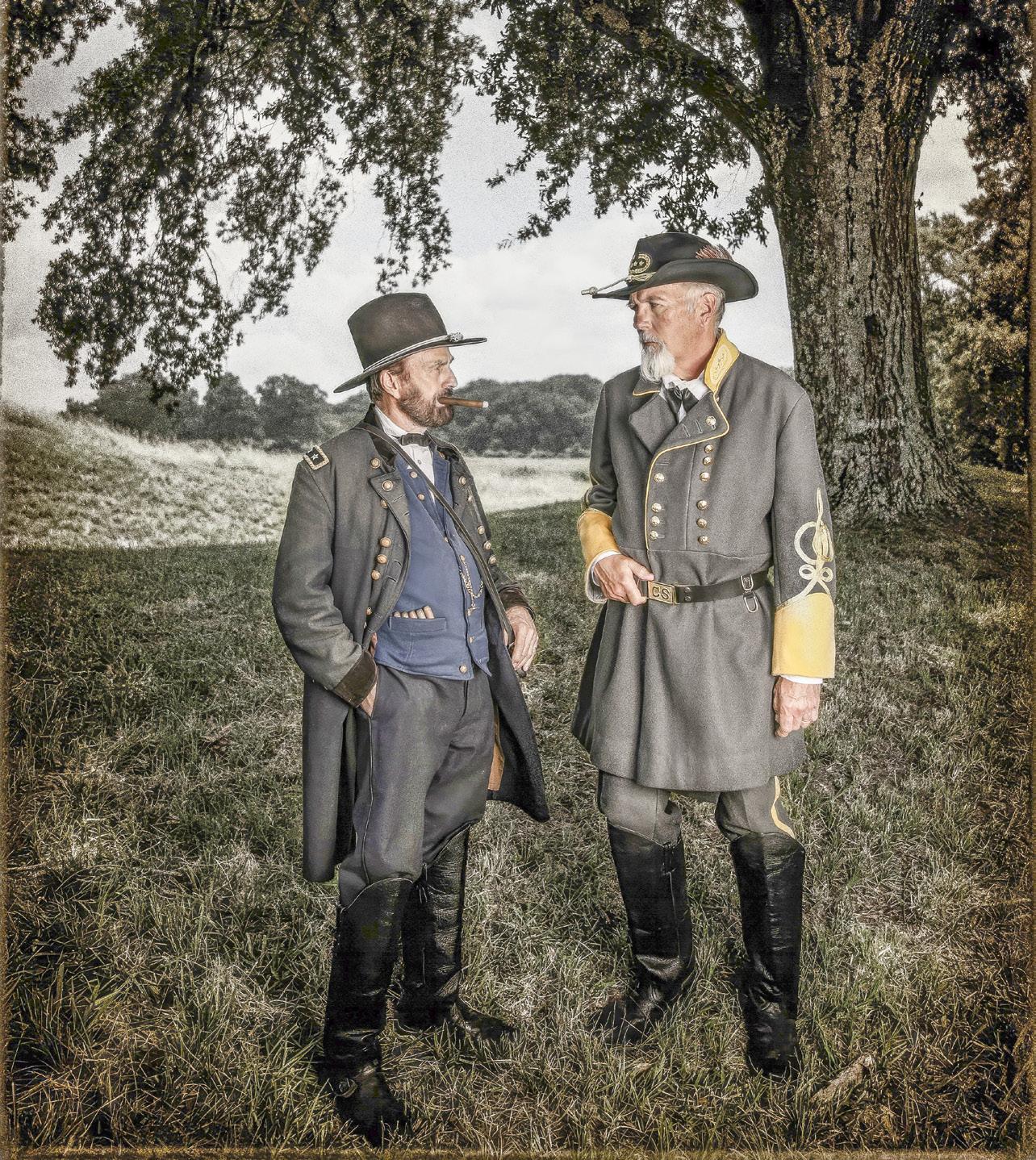

“Simply put: tell the simple truth, simply.” – Professor E. Veritas
About the Surrender
The Surrender at Vicksburg, which took place during the American Civil War, was a pivotal
event that significantly impacted the outcome of the conflict. It marked a turning point in the war and had profound implications for the Union’s ultimate victory.
Vicksburg is located on the bluffs overlooking the Mississippi River, was a strategic stronghold for the Confederacy. The city’s location made it a critical point of control over the river, and its capture became a top priority for the Union forces. General Ulysses S. Grant was determined to take Vicksburg as part of his broader plan to gain control of the Mississippi River and split the Confederacy in two.
The siege of Vicksburg began in May 1863 and lasted for over six weeks. The Confederate forces,
led by General John C. Pemberton, held out bravely, but they were ultimately overwhelmed and surrounded by the Union army. The relentless bombardment and lack of supplies took a toll on the Confederate defenders, leading to their eventual surrender on July 4, 1863.
The fall of Vicksburg was a significant blow to the Confederacy. It effectively cut off their access to the Mississippi River, severing vital supply lines and dividing the Confederacy geographically. This victory also boosted Northern morale and solidified General Grant’s reputation as a skilled military leader, eventually leading to his promotion to Lieutenant General

and command of all Union forces.
The surrender at Vicksburg came one day after the Confederate defeat at Gettysburg, making the 4th of July a doubly joyous day for the Union. The combined victories at Vicksburg and Gettysburg bolstered Northern support for the war
effort and further demoralized the Confederacy.
In conclusion, the surrender at Vicksburg was a critical moment in the American Civil War. It significantly weakened the Confederacy and helped pave the way for the Union’s ultimate triumph. The capture of Vicksburg
4 CivilWarNews.com September 2023 4 September 2023 CivilWarNews.com 1,000’s of Civil War Treasures! Plus! Revolutionary War • Spanish-American War Indian Wars • Mountain Men • Bowie Knife Collector Arms • Fur Traders • World Wars I & II Civil War & Military Show 9 - 4 / $10 • Early Buyer’s 8am / $25 • Free Parking September 23 2023 • Fall Show • Saturday
The Confederate gun crew from Kennesaw Mountain National Battlefield. (Mike Talplacido)
Confederate General John C. Pemberton portrayed by Morgan Gates. (Buddy Secor)
General Grant and Pemberton discuss the terms of surrender on “Surrender Knoll.” (Buddy Secor)
by General Grant’s forces was a strategic and symbolic victory that turned the tide of the war in favor of the Union.
Grant at Vicksburg
Union General Ulysses


S. Grant led the assault on Vicksburg with the intention of gaining control of the Mississippi River and cutting off Confederate supply lines. The campaign was a challenging one, as the city was heavily fortified and protected by skilled Confederate forces under General John C. Pemberton.
Grant’s troops initially attempted to take Vicksburg by direct assault, but they faced fierce resistance and suffered heavy casualties. Recognizing the difficulty of a direct approach, Grant shifted his strategy and decided to lay siege to the city. His forces encircled Vicksburg, cutting off its supply lines and subjecting its inhabitants to relentless bombardment.
During the 47-day siege, both sides endured harsh conditions and constant danger. Civilians sought shelter in caves and endured food shortages, while soldiers on both sides faced the physical and psychological tolls of war. Despite the hardships, Grant’s determination and strategic acumen prevailed.
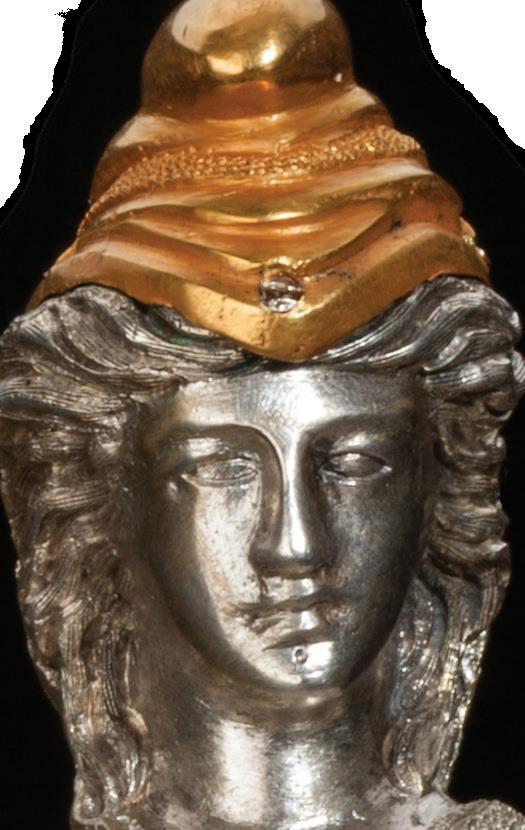
Pemberton at Vicksburg
John C. Pemberton’s role at Vicksburg during the Civil War was significant, as he found himself in command of a crucial Confederate stronghold that held strategic importance in the Mississippi River region. Born in 1814, Pemberton was a West Point graduate and a veteran of the Mexican-American War, possessing military experience that would prove valuable during the impending conflict.
In May 1863, Pemberton was appointed to command the Confederate forces at Vicksburg. He faced immense pressure from Union forces, led by General Ulysses S. Grant, who sought to gain control of the Mississippi River, cutting the Confederacy in two. The city’s high bluffs and formidable defenses made it a formidable obstacle for the Union army.
Pemberton, however, faced numerous challenges during his tenure. He struggled to maintain morale among his troops, as they faced shortages of food, supplies, and ammunition. Additionally, his relationship with his subordinate officers was often strained, leading to communication issues and coordination problems within
the Confederate ranks.

During the 47-day Siege of Vicksburg, Pemberton’s men valiantly defended the city against relentless Union assaults. Despite their resilience, the Confederate forces were ultimately overwhelmed, and

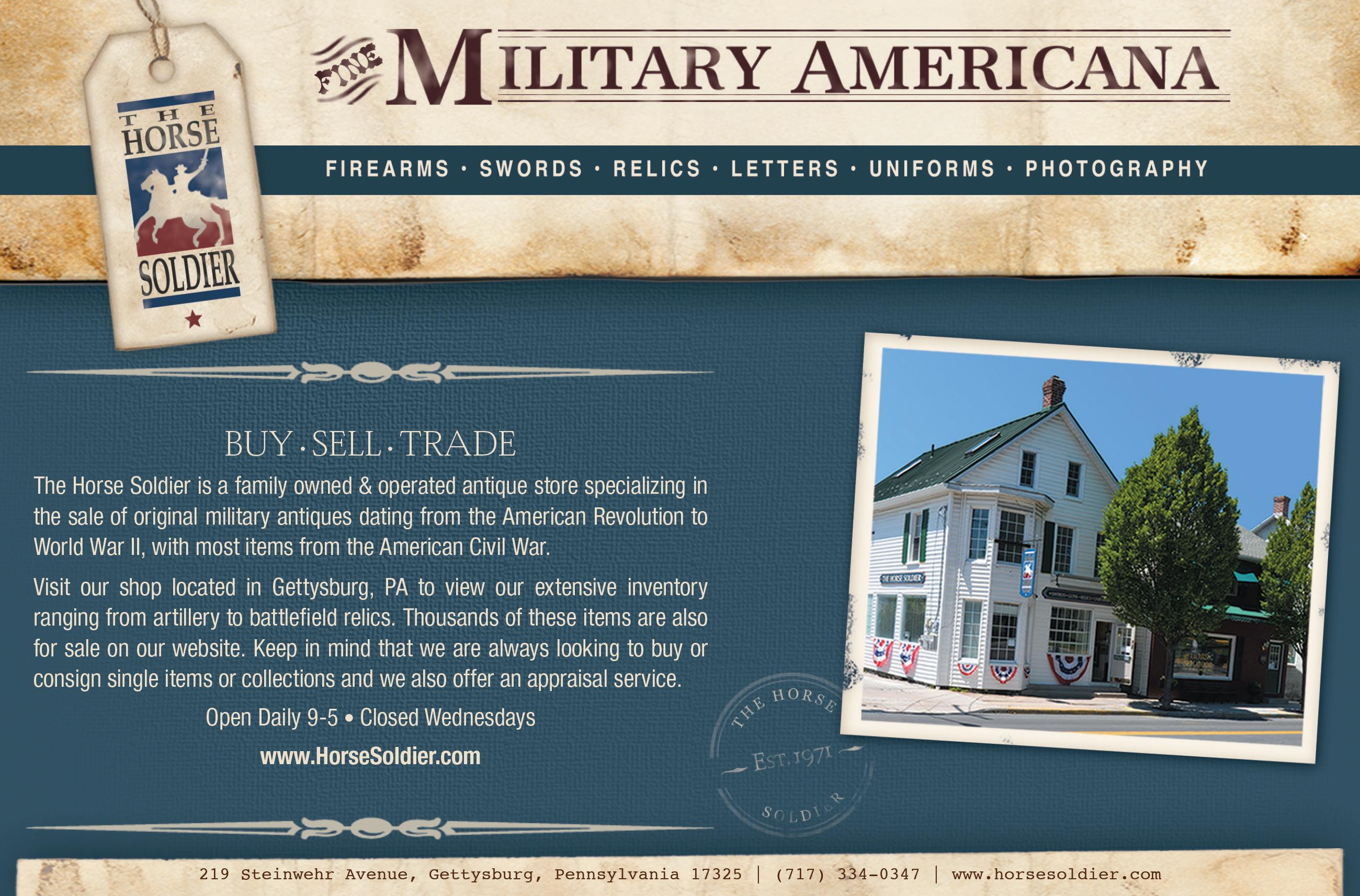
Vicksburg fell to the Union on July 4, 1863. This pivotal loss was a severe blow to the Confederacy, as it not only granted the Union control of the Mississippi River but also boosted Northern morale and further weakened Southern resolve.
After the defeat at Vicksburg, Pemberton’s military career suffered a setback, and he was reassigned to less prominent roles for the remainder of the war. Following the Confederate surrender in 1865, he returned
to civilian life and later moved to Virginia. John C. Pemberton’s legacy remains tied to his command at Vicksburg, where he faced enormous challenges and contributed to shaping the outcome of the Civil War.

5 September 2023 5
2023 CivilWarNews.com CivilWarNews.com Buying and Selling The Finest in Americana 11311 S. Indian River Dr. • Fort Pierce, Florida 34982 770-329-4985 • gwjuno@aol.com George Weller Juno
September
Union General Ulysses S. Grant portrayed by Curt Fields. (Buddy Secor)
By Jeffry D. Wert
The Union assault on the Confederate position known as the Mule Shoe near Spotsylvania Court House, Virginia, on May 12, 1864, began a hellish ordeal without parallel in the four-year conflict. The Federals charged at 4:35 a.m., pouring over the salient’s breastworks and routing the Rebel defenders. What ensued after the breakthrough was relentless combat between the foes at the length of a rifle barrel amid downpours of rain for some twenty-two hours.
For these veteran troops on both sides, the fearful struggle surpassed anything in their collective experience.
The fighting around the crossroads village of Spotsylvania Court House was the second major engagement of the Overland Campaign. The renewal of active operations in the war’s fourth spring began when Union General-in-chief Ulysses S. Grant ordered the 119,000-man Army of the Potomac across the Rapidan River against General Robert E. Lee’s 66,000-man Confederate Army of Northern Virginia on
The Mule Shoe Struggle
May 4. It was a bright spring day that heralded darkness.
The ensuing two days, May 5 and 6, witnessed a furious engagement between the old nemeses in the “demonic” Wilderness, as a Yankee soldier called the forbidding landscape.
Another soldier described the fighting as “a blind and bloody hunt to the death, in bewildering thickets, rather than a battle.”
The Confederates held the battlefield after two days, with total casualties exceeding 29,000.

On May 7, Grant ordered the army southeast toward Spotsylvania Court House and more open terrain. Both armies raced throughout the night and the next day. The Confederates arrived first by the narrowest of margins, seized Laurel Hill, and began repulsing the initial Federal attacks. Throughout May 8 and into the night, the armies converged on what became a sprawling 12-day battlefield.

One of the final Confederate units to arrive on the field was the 4,000 officers and men of Edward Johnson’s Division. Johnson halted his veteran infantrymen in the darkness on a slight
ridge. This position was part of Neil McCoull’s “Woodshaw Farm.” Johnson instructed his men to erect fieldworks, but the exhausted infantrymen lay down and slept.
Lee visited Johnson’s position the next morning as the troops were constructing log and dirt breastworks. A Georgian depicted the crescent-shaped defenses as “an awkward and irregular salient to the northward.” When finished, the “horse shoe” or “mule shoe,” in the words of its defenders, covered some 250 acres, a half mile deep and roughly 1,160 yards, less than three-fourths of a mile wide. The completed works stood four feet high, with a head log and firing slot, and a twofoot-deep trench on the inside. The Rebels built steps to stand on whten firing from the position.
When Lee saw the trench line’s shape, he knew the salient could be subjected to enemy fire from three sides, he allegedly declared: “This is a wretched line. I do not see how it can be held.” The army’s Second Corps commander, Richard S. Ewell, argued with Lee that Johnson’s men held the higher ground and, if the position were abandoned, it
6 CivilWarNews.com September 2023 6 September 2023 CivilWarNews.com
One of a series of seven maps depicting the Battle of Spotsylvania Court House of the American Civil War. Drawn by Hal Jespersen, http://www. posix.com/CWmaps/.
Three African American men at the water pump in front of the Spotsylvania County Court House. (Library of Congress)
would be seized by the Yankees. Lee relented reluctantly, directing twenty-nine cannon into the salient as support for the infantry.
The Federals knew about the Confederate position but never learned the vulnerable shape of the defenses or how many enemy troops and artillery batteries manned the works. Nevertheless, when Union Colonel Emory Upton proposed an attack on the enemy lines, Grant and army commander George G. Meade approved. Upton requested a dozen regiments to be formed in four lines, three regiments abreast, with the support of an infantry division and artillery batteries.
Georgians of George Doles’ brigade charged at 6:30 p.m. on May 10, striking a slight bulge in the Mule Shoe’s western face known as Doles’s Salient for the Georgians George Doles’s brigade. The Yankees penetrated the salient’s main works and overran a Rebel battery. Upton’s 4,500 officers and men clung to
the captured works for an hour before Confederate reserves drove them back across open ground. The expected support from the reserve infantry division failed to appear.
When Grant learned of Upton’s initial success, he thought an assault on a larger scale might break Lee’s lines. He ordered attacks across the army’s front, with a renewal of attacks on Laurel Hill and an advance by Ambrose Burnside’s IX Corps on the Mule Shoe’s eastern face. Grant assigned the 20,000 officers and men of Winfield Scott Hancock’s II Corps to the main thrust against the Mule Shoe. He designated the offensive to start at 4 a.m., Thursday, May 12.

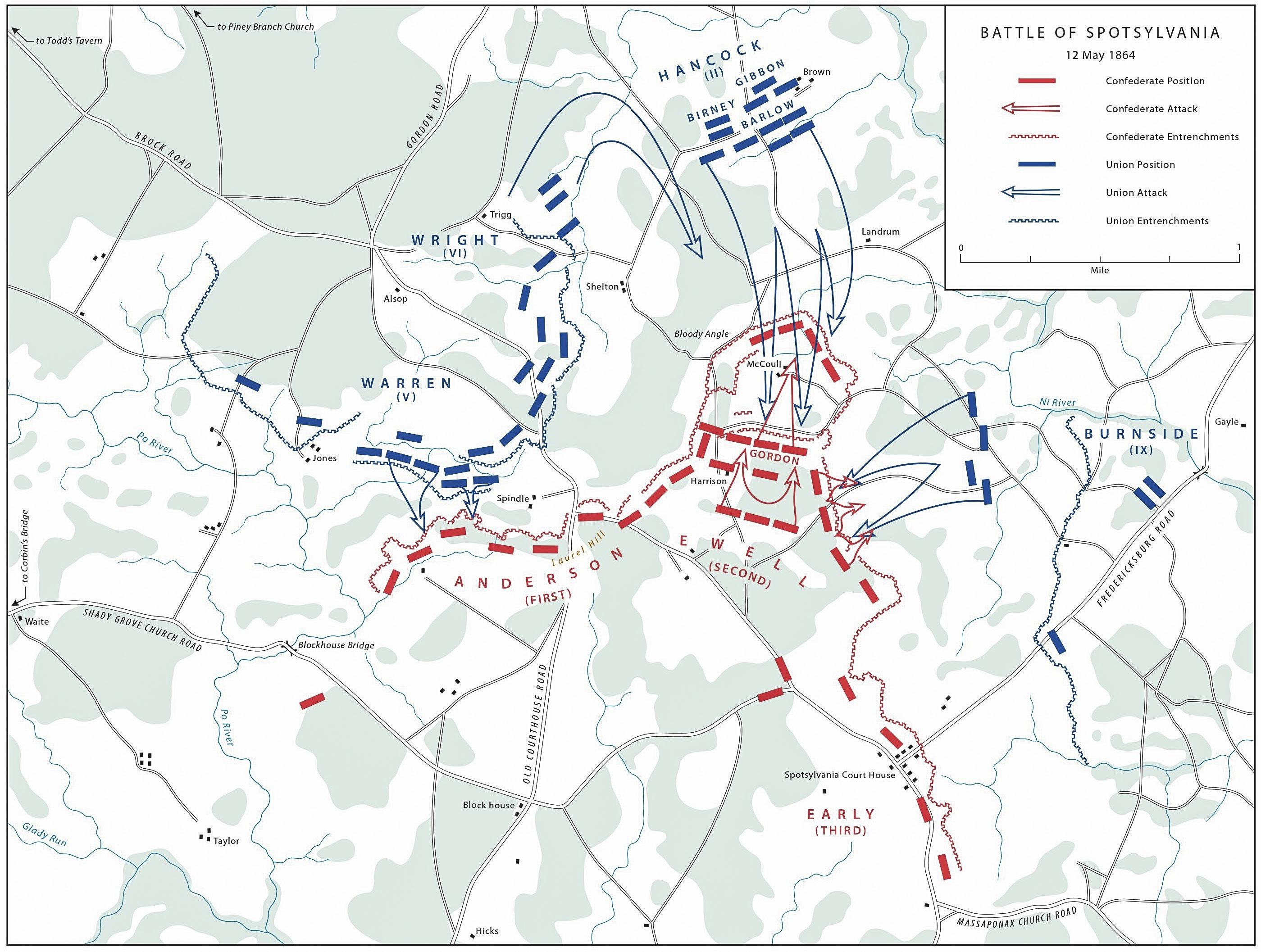
Lee, meanwhile, received a message from his son, cavalryman William H. F. “Rooney” Lee. Referring to Burnside’s units, the younger Lee reported: “There is evidently a general move going on. Their trains are moving down the Fredericksburg road, and their columns are in motion.” If his
opponent were marching south again, Lee wanted to pursue, either interdicting the movement or barring its route. Lee could not know if the intelligence was correct, but he needed to prepare a counter-movement.
Lee ordered the twenty-nine cannon removed from the Mule Shoe to expedite a possible march. His willingness to hold the salient had been predicated on these guns posted within the defenses. E. Porter Alexander, artillery commander of the army’s First Corps, observed later, “The withdrawal of these guns was the one fatal Confederate blunder of this whole campaign.”
To be sure, Lee miscalculated, but his decision was based on intelligence he had received. He left the infantry divisions of Johnson and Robert E. Rodes in place until the next morning and ordered a pair of four-gun batteries into the salient.
Hancock’s blue-coated officers and men marched overnight toward their assembly point on
7
2023 7 September 2023 CivilWarNews.com CivilWarNews.com
September
8-21,
Situation May 12.
Battle of Spotsylvania Court House (May
1864).
General Emory Upton. (Library of Congress)
the farm of John and Elizabeth Brown, located three-fourths of a mile north of the Mule Shoe’s apex. “Of all our many night marches,” grumbled an enlisted man, “this one took the cake.” Rain fell, and another soldier remembered, “It was so dark that it could almost be felt.” A dense morning fog settled in, delaying the assault until 4:30 a.m. All Hancock and his division commanders knew was that “a large white house [McCoull’s] known to be inside the enemy’s works.”

To the south, meanwhile, Confederate pickets lying along the Willis Landrum farm lane heard the Yankees gathering on the Brown farm. They alerted Johnson, reporting that the enemy was preparing to attack. Johnson ordered his veterans into the trenches an hour before daylight. Union bands had been playing songs for hours, the sounds filtering through the rain and fog to the Confederates. At last, the music ceased. Before long, a staff officer reported to Johnson,
“General, they are coming!”
Hancock’s infantrymen struck the Mule Shoe’s eastern face and 300-yard-long apex, overwhelming the defenders. The Confederates had built numerous traverses inside the salient to protect their inner flanks if an enemy breached the works. Described as twelve to fifteen feet three-sided works, the Rebels likened them to “pig pens” or “horse stalls.” Along the trenches and in the traverses, Johnson’s veterans resisted briefly before being overwhelmed by the many Yankees, who captured upwards of 3,000 officers and men, including Johnson and Brigadier General George Steuart.
The enemy had gouged a threequarter mile gap in Lee’s lines northwest of Spotsylvania Court House. A disorganized mass of Federals began penetrating deeper into the Mule Shoe. In front of the surging Federal attack stood 4,600 Rebels, the three brigades of John B. Gordon, who admitted later “that the situation was critical.” An instinctive
fighter, Gordon counterattacked with one brigade and advanced the other two brigades toward the salient’s base, where a second line of works had been built earlier on Lee’s orders.
Before the Virginians and Georgians stepped forward, Lee joined Gordon. The army commander appeared as if he might want to lead a counterattack, but Gordon promised that his men would not fail. A Virginia sergeant took the reins of Traveler, Lee’s horse, and led the general to the rear. Gordon’s men surged toward the works, arriving almost simultaneously with the Yankee host. The Rebels triggered volleys of musketry; the Federals staggered, and then turned rearward. Gordon’s veterans pursued and, joined by the third brigade, reached the eastern side of the original salient. The momentum of the assault had been blunted.
The Federals held the apex, the east and west angles where the works bent slightly south, and the traverses. Lee decided the
broken lines had to be retaken while a second line of works was being erected by fugitives from Johnson’s Division farther south. He ordered counterattacks by Confederate brigades drawn from other defensive sectors. Lee needed a tactical stalemate in the Mule Shoe, but for those already there and for those who would be drawn in, ahead loomed a testing unlike any before in the conflict.
During the next three hours, six Confederate infantry brigades entered the struggle, which became in a Union private’s words, “a seething, bubbling roaring hell of hate and murder.”
Two brigades from Rodes’s Division, Cullen Battle’s Alabamians and Stephen Dodson Ramseur’s North Carolinians, led the counterattack. While Gordon’s troops fought along the Mule Shoe’s eastern face, the Alabamians and North Carolinians angled toward the western face. “This was a serious time with us,” recalled one of Ramseur’s veterans, “and would have been more so, if we would
have really realized our position.” The Confederates crossed a reserve or inner line of works, then charged into the trenches along the main breastworks. They drove the Federals in a handto-hand melee over the works, where the foes continued to kill and maim each other on opposite sides of the parapet. The Yankees lunged over the works, trying to retake the trenches. “We pitched many of them with the bayonet right over the ditch,” declared a North Carolinian.
William Wofford’s Georgians and Abner Perrin’s Alabamians came up next, filing into the trenches to the left or south of Battle and Ramseur. Like their comrades before them, Wofford’s and Perrin’s veterans charged into a wall of musketry from Yankees holding the apex and some traverses. The rifle fire struck Perrin as he leaped his horse over the inner works, mortally wounding the general. The musketry was relentless, coming in waves like a “very river of death,” according to a Rebel.
8 CivilWarNews.com September 2023 8 September 2023 CivilWarNews.com
Outside the entrenchments, brigades from the Union VI Corps joined in the fury.
Finally, the last pair of Confederate brigades, Nathaniel Harris’s Mississippians and Samuel McGowan’s South Carolinians, charged into the fray, a clawing advance from traverse to traverse. They reached the breastworks along a section of the apex and where the entrenchments bent south at the west angle. By roughly 9 a.m., the fighting had dissolved into a bloody stalemate. “The deathgrapple of the war,” claimed a Yankee.
So, it would continue without cessation, hour after hour into the afternoon and evening. The combat was, thought a New Englander, “so bloody, and had such an aspect of savagery about it.” A lieutenant in a South Carolina regiment admitted, “The question became, pretty plainly, whether one was willing to meet death, not merely run the chances of it.” A North Carolinian declared, “At noon the water so bloody in the ditches, that one inexperienced would have taken it for blood entire.”
Men on both sides leaped onto the breastworks, firing down into their enemy faces while
comrades passed them loaded rifles. Few survived such acts.
A lieutenant in a Pennsylvania regiment remembered these men and wrote, “I never during over four years of active service in the army witnessed so many individual acts of daring and foolhardiness on the part of soldiers as on this day.”

Thunderstorms rolled in late in the afternoon, adding to the misery. Still, the butchery continued. Union regiments and brigades rotated in and out of the fearful struggle, but the graycoated defenders were trapped. Reports reached the Confederates that the new line of works should be completed by 6 p.m. when they could begin withdrawing. The hour passed, however, with no orders to abandon the Mule Shoe. A Mississippi private described the shared ordeal better than anyone when he declared: “I don’t expect to go to hell, but if I do, I am sure hell can’t beat that terrible scene. Indeed I am sure that the hell on earth is a pledge for the hell after death.”
About midnight a red oak tree behind the west angle crashed to the ground. The hours of musketry and artillery fire sawed it off five feet above the ground. The stump measured 22 inches
in diameter and 61 inches in circumference. No place in this carnage-steeped field was the area grislier than around the west angle, which the Confederates were already calling the “Bloody Angle.”
At three o’clock on the morning of May 13, the Mule Shoe’s defenders began quietly evacuating, retiring to a new position. On a ridge nearly threefourths of a mile south of the Bloody Angle, pioneer troops and Johnson’s fugitives had finished a new line of fieldworks. The Federals never detected their enemy’s withdrawal. One of the Rebels noted: “We looked like a lot of painted devils. We could hardly tell one another apart.” When he and his comrades halted, many of them lay down and slept. When daylight revealed the empty trenches, a Union brigade conducted a reconnaissance, halting when it came upon the new Confederate works. Details began collecting the wounded and burying the dead. The Federals finished the gruesome work that day, followed by Confederate details on May 14. Upwards of 55,000 Americans, 38,000 Northerners; 17,000 Southerners, had fought at the Mule Shoe. The killed, maimed, and captured
amounted to 17,500, the most casualties on a single day of fighting in the East between July 3, 1863, at Gettysburg, and April 9, 1865, at Appomattox.

Grant’s army-wide offensive failed, except for the initial penetration at the salient. On Laurel Hill, more Federals fell before the rifle and artillery fire of its defenders. On the Mule Shoe’s eastern face, Burnside’s attack went forth hours late and succeeded in briefly occupying a small section of the Confederate works before being repulsed. In the afternoon, Rebel troops attacked Burnside’s flank, nearly capturing a Union battery.
In turn, Lee had been spared a possible crippling defeat by the stalwart defense of his
battle-tested officers and men. Thursday, May 12, had been unlike any other during the war both for the proximity of the foes and the duration of fighting. Years later, an Ohioan visited the battlefields around Fredericksburg. Guided by a Confederate veteran, the fellow eventually stopped at the Bloody Angle, remarking, “It is a dark spot.” The former soldier replied, “It is the heart of hell.”
Jeffry D. Wert is a retired high school history teacher and award-winning Civil War historian, whose most recent book is The Heart of Hell: The Soldiers’ Struggle for Spotsylvania”s Bloody Angle.
Loyal Legion of the Confederacy
9 September 2023 9 September 2023 CivilWarNews.com CivilWarNews.com
National Defense Medals & other banned internet items Civil War Recreations WWW.CWMEDALS.COM cwmedals@yahoo.com
Smithbridge Rd., Unit 61,
CSA
1
Chester Heights, PA 19017
Private Orrin Cook, 22nd Massachusetts Company B
“Some of our boys got Austrian rifles, some Enfield, and others Springfield.
I got the Enfield, and Bob got the finest arm of the whole lot, a fine United States Springfield rifle. Training in the use of these weapons was startlingly belated and haphazard.” – Diary of Pvt. Orrin W. Cook, Company B. 22nd Regt. Massachusetts Volunteers, November 1863.

Orrin W. Cook was a lumberman in western Massachusetts when the U.S. Civil War began. He
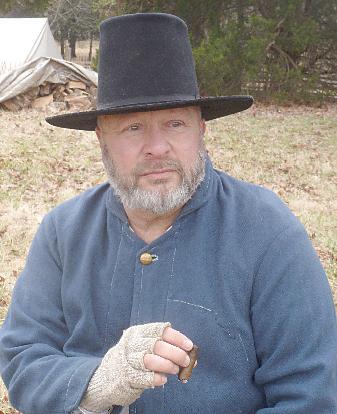
later worked as a billing clerk for Robinson, Marsh & Company, a lumber yard in Springfield, Massachusetts. Cook avoided volunteering for military service until he was drafted during July 1863. Cook’s father offered to pay for a replacement but Cook declined and mustered in to the 22nd Massachusetts and was assigned to Company B. Cook was badly injured in both legs at the 1864 Battle of the Wilderness, then captured by the Confederates, and spent five months recuperating at the hospital in Lynchburg, Va. He was lucky to have survived his injuries.
Cook was also lucky in that he was paroled in one of the
last 1864 prisoner exchanges before General Grant stopped the practice. Pvt. Cook got a surprise though when he learned upon his return that “…the authorities are sending to the field all men that are fit to go.” Cook notes in his diary with a sense of relief that the Assistant Surgeon at the hospital ruled that “…my legs were hardly fit for field duty.” Pvt Cook served out the remainder of the Civil War as a clerk with the Navy in Annapolis, Md., and mustered out in November 1865. The 22nd Massachusetts Regiment entered the war in 1861 as ninety-day recruits. They were assigned to the Army of Potomac (AoP) and fought in the Peninsula Campaign
at Gaines Mills, followed by Second Manassas, Antietam, Fredericksburg, including an illfated charge at Marye’s Heights, and the remaining men were at Chancellorsville although largely held in reserve. Whatever the case, by Gettysburg in July 1863, the 22nd Massachusetts Regiment was down to 127 active soldiers. Rather than create entirely new regiments composed of all new recruits, the AoP command structure began refilling existing regiments. This policy was in effect when Orrin Cook and his fellow recruits arrived during November 1863. The theory was that by mixing new recruits in with seasoned veterans, the learning curve for
the newer soldiers would be greatly reduced. Instead, Cook found the veterans were resentful and largely dismissive of the “fresh fish.” He notes in his diary that he felt somewhat “ill at ease” among them and wonders why he is “so generally regarded with aversion.” It is another good observation recorded by Pvt. Cook and a worthwhile subject for another day.
Also of interest is what Pvt. Cook notes about infantry arms issued to the 22nd Massachusetts, compared to what the records indicate for U.S. and C.S. units in 1864. The appendix of Earl Coates & Dean Thomas, An Introduction to Civil War Small Arms, was compiled by William O. Adams who is extremely reliable. Here is a graphic representation of the totals to summarize the distribution of Union arms in the ranks by 1864:
The table paints a surprising picture, particularly the large number of Union regiments still outfitted entirely with the imported Enfield P53 long rifle as late as 1864, about a year after the U.S. government contracts with Birmingham Small Arms Trade were canceled. The contracts were canceled because of the newly manufactured U.S. M1861s were available in sufficient quantities to replace them. If many still harbor the impression that M1861s were issued en-masse to Union troops as replacements during 1863, it appears this is not the case. This chart also supports the observations of Pvt. Cook in terms of the variety of rifled arms potentially issued to the 22nd Mass Regt in late 1863.
It is understood that due to shortages early in the Civil War, most small arms were issued as they became available. For example, the U.S. Ordnance Department shipped 114 cases to Michigan units, which arrived in on Nov. 4, 1861. If the records are to be trusted, 30 of these cases contained new Enfield P53 riflemuskets and the remainder held what were broadly described as “Prussian muskets.” In all likelihood these “Prussian muskets” were older, large
10 CivilWarNews.com September 2023 10 September 2023 CivilWarNews.com
Firearm Regts Percent Enfield P53 431 39% U.S. Model 255 23% Austrian Rifle (Lorenz) 9 9% U.S. M1842 musket 69 7% Mixed P53 and U.S. M1861 59 6% U.S. M1841 rifle 4 3% Enfield short rifle 13 1%
Five soldiers, four unidentified, in Union uniforms of the 6th Regiment Massachusetts Volunteer Militia outfitted with Enfield muskets in front of encampment. (Library of Congress)
caliber, smoothbore weapons from a number of sources, including Belgium.
Hence, regiments armed on or after Nov. 4, 1861, received a mix of infantry arms consisting of some modern rifle-muskets, and some clunkers. However, to make amends, by mid-February 1863, the U.S. Ordnance department re-issued to these same Michigan units 50,000 new Model 1861 rifle-muskets. As might be expected, those still armed with the obsolete second (or third) class “Prussian muskets” received the new M1861s and those with previously issued Enfield P53 rifle-muskets would have retained them if they were still serviceable. These regiments are no doubt included on the above chart listed among the 6% armed with “mixed P53 and M1861s.” Also, depending on availability, the replacements were not always exclusively M1861 or U.S. model 1863 rifle-muskets until well into the year 1864.
According to Pvt. Cook’s diary, in November 1863, the 22nd Massachusetts Company B was issued a mixture of various type rifled arms including the Austrian rifle Model 1854 (Lorenz), M1861s and P53 Enfield long rifles. The only attempt at standardization if there is any, appears to be a rifled arm in the bore diameter of the U.S. standard .58 (or the close approximate .577) caliber. While the Lorenz could be found in a multitude of bore diameters, most U.S. contracts by 1863 specified .58. At least the same size ammunition would work (in theory) for all these arms, which was something the Confederacy struggled with for the entire war.
It is important to consider the system in place for issuing small arms during the Civil War, and it appears to be virtually the same system for both the U.S. and C.S. Ordnance. When a soldier was injured, killed, or disabled he did not retain his weapon or accoutrements or have them buried with him. These items were government property and returned to the Ordnance Department for reissue. If an injured soldier recovered and subsequently returned to a line unit, he would be issued another stand of arms at that time. In modern parlance, Ordnance was “recycled.”
The decision to re-issue arms was based on two factors. First, the field command had to complete a requisition to the Ordnance Department for replacements. This is the opposite of the Quartermaster Department where items such as jackets, coats, trousers, socks,
boots, tents, and rations were issued on a semi-regular basis. The Ordnance Department did not automatically issue new arms or accoutrements as replacements on any regular basis. Second, the Ordnance Department had to determine whether they could fill the requisition and to what extent. An order for M1861s which had
been previously promised as an inducement to a group of new recruits was sometimes filled with whatever was on hand. John M. Gould noted in History of the First-Tenth-Twenty-ninth Maine Regiment:
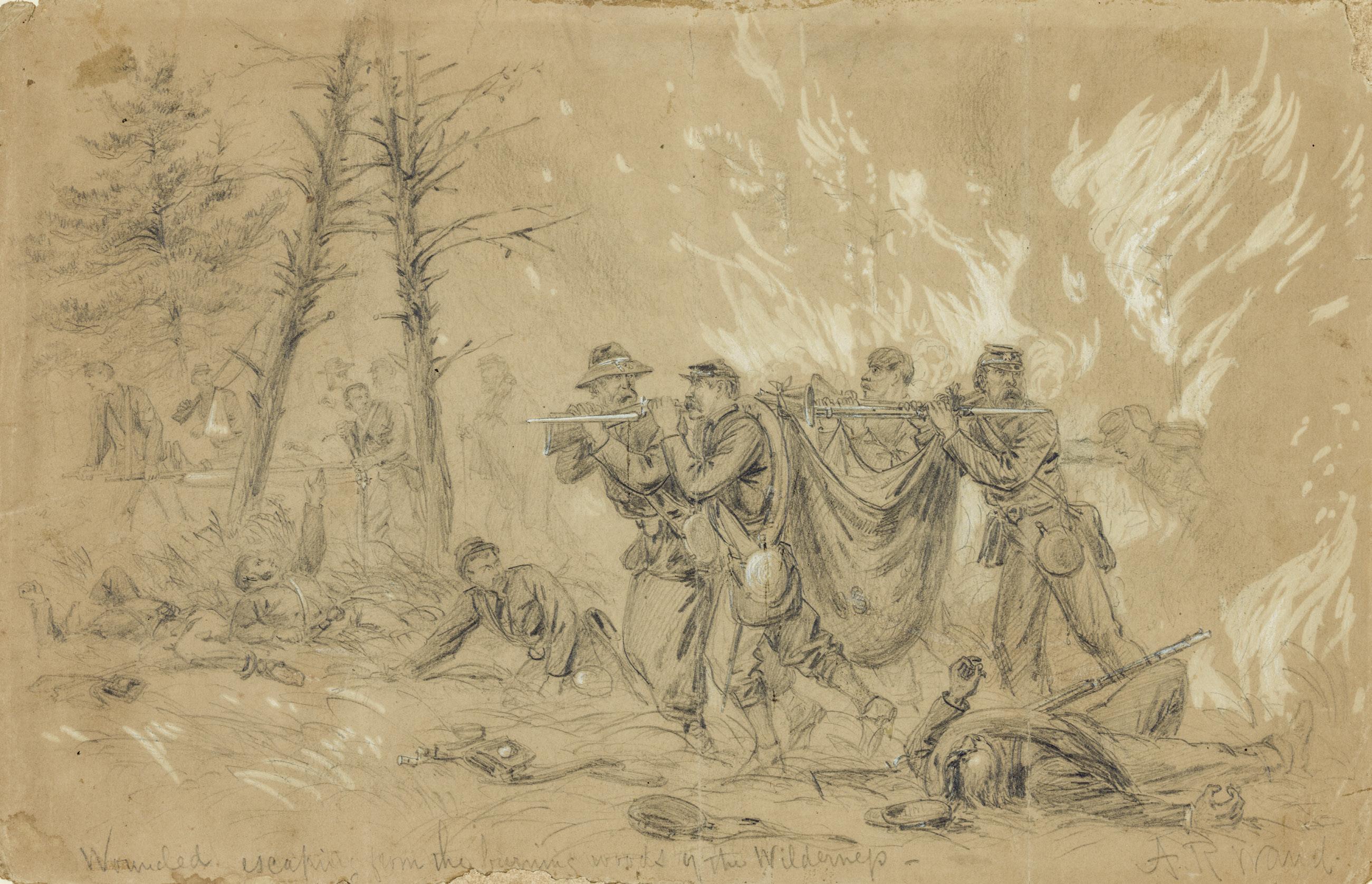
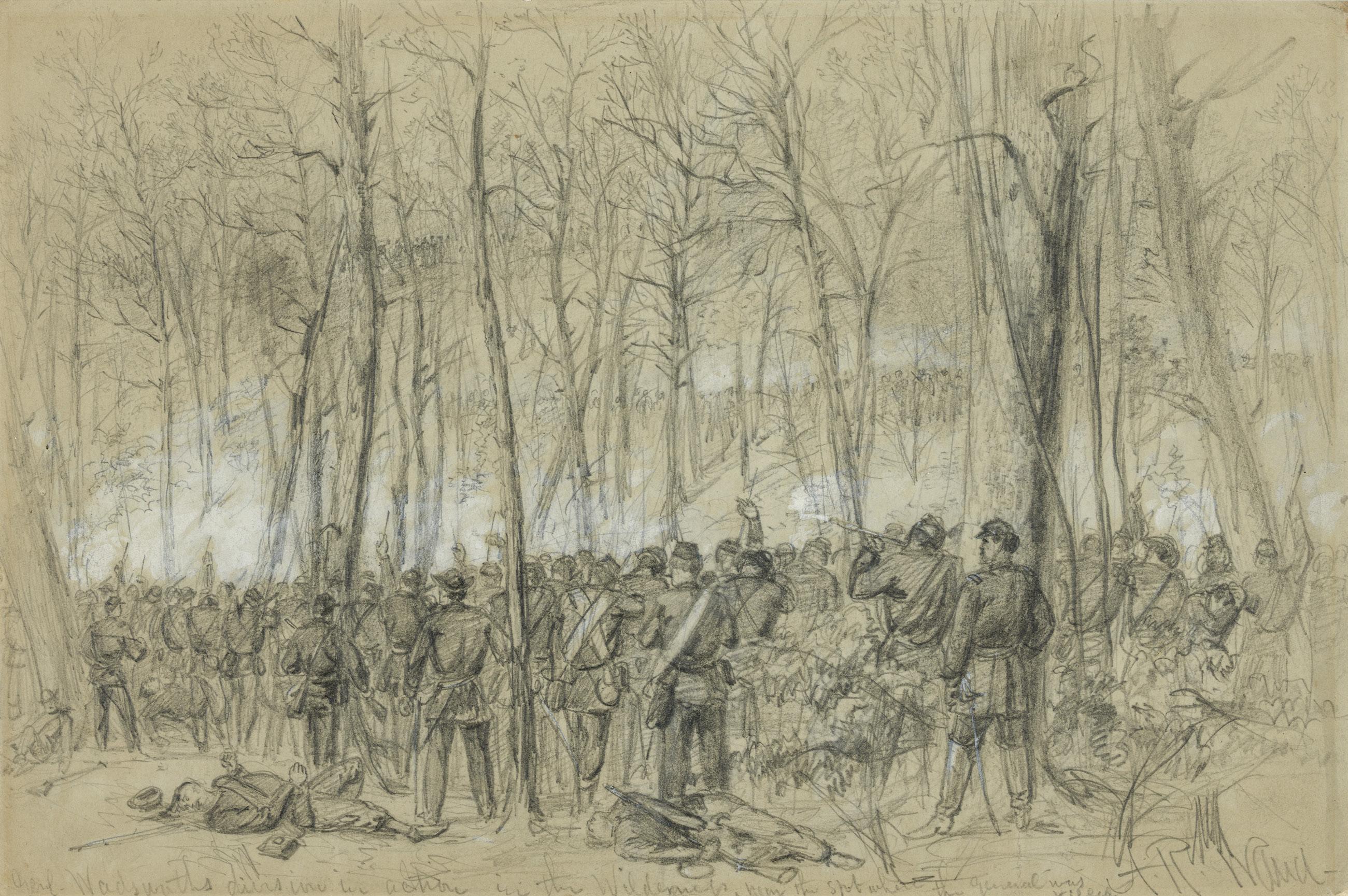
“Oct. 21st, muskets were delivered to the men, and this
furnished another excuse for a hearty growl from the 1st Mainers. “Had we not been promised new blue uniforms and new [U.S. Model 1861] Springfield muskets…look at these Enfield muskets with their blued barrels and wood no man can name.”
In another such instance, an order for new M1861s from General Irvin McDowell received the following response from Chief of Ordnance General James Ripley: “We have no Springfield arms but will send the best of what is in the Washington Arsenal in fifty-eight calibre… the best foreign arms in depot and
11 September 2023 11 September 2023 CivilWarNews.com CivilWarNews.com
Genl. Wadsworths division in action in the Wilderness, near the spot where the General was killed. (Library of Congress)
Wounded escaping from the burning woods of the Wilderness. (Library of Congress)
in New York have been ordered to you.”
Accoutrements were also filled through the Ordnance Department and there are many recorded instances of mismatched sets. For example, a soldier who turned in his .69 caliber
smoothbore musket for a newer model .58 caliber rifle-musket would not simultaneously receive a new matching set of .58 sized U.S. accoutrements. The soldier was expected to keep his old set until it was no longer serviceable, never mind if the smaller size
ammunition fit in the box or the different bayonet fit properly in the scabbard. Hence, we don’t know if all new U.S. model rifle-muskets were requisitioned for the 22nd Massachusetts recruits in late 1863, but most likely it would not have mattered. Pvt Orrin Cook and his comrades ended up with whatever mixture of serviceable weapons were available, some of which would have likely already seen previous action and some which may have been refurbished. Only after the existing stockpiles of returned serviceable small arms were back in the ranks, would recruits in the 22nd Massachusetts receive new arms, the coveted prize which Pvt. Cook refers to as the best arms of the whole lot, “a fine United States Springfield rifle.” There are no documented examples during the Civil War of any soldier on either side discarding a serviceable U.S. M1861 rifle-musket in favor of something else.

Craig L. Barry was born in Charlottesville, Va. He holds his BA and Masters degrees from UNC (Charlotte). Craig served The Watchdog Civil War Quarterly as Associate Editor and Editor from 2003–2017. The Watchdog published books and columns on 19th-century material and donated
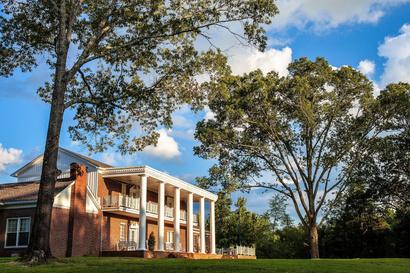
Gun Works, Inc.
The tried-and-trusted choice of today’s blackpowder enthusiasts.
Thousands of blackpowder hobbyists and aficionados, from history buffs and re-enactors to modern hunters and competitive shooters, trust Dixie Gun Works for its expertise in all things blackpowder: guns, supplies, and accessories and parts for both reproductions and antique guns. Whether you’re just getting started or you’re a life-long devotee, everything you need is right here in the 2023 DIXIE GUN WORkS’ catalog.
ORDER TODAY! STILL ONLY $5.00!
PROFESSIONAL SERVICE AND EXPERTISE GUARANTEED

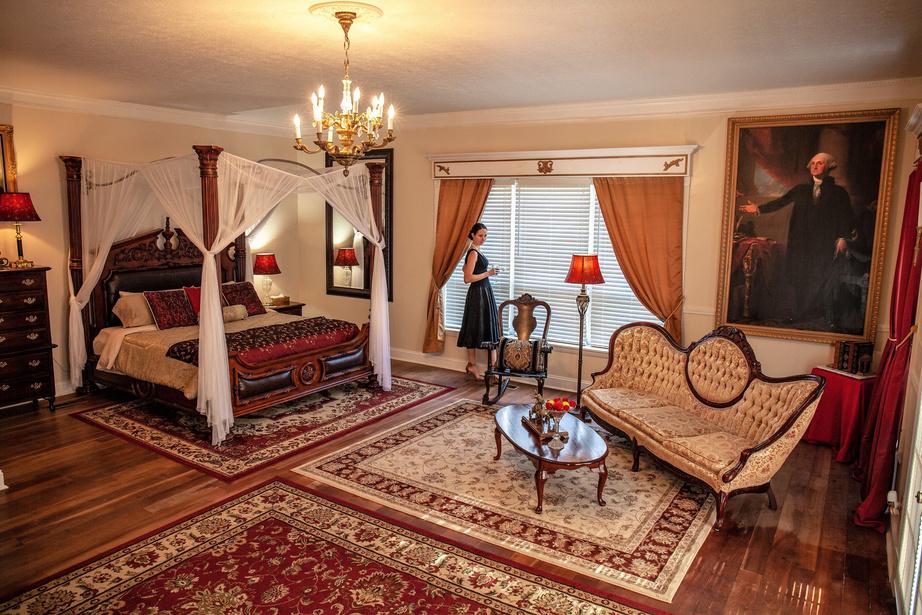
www.dixiegunworks.com

Major credit cards accepted FOR ORDERS ONLY (800) 238-6785

all funds from publications to battlefield preservation. He is the author of several books including The Civil War Musket: A Handbook for Historical Accuracy (2006, 2011), The Unfinished Fight: Essays on Confederate Material Culture Vol. I and II (2012, 2013). He has also published four books in the Suppliers to the Confederacy series on English Arms & Accoutrements, Quartermaster stores and other European imports.


12 CivilWarNews.com September 2023 12 September 2023 CivilWarNews.com CivilWarNews.com Want to Advertise in Civil War News? Call 800-777-1862 or email ads@civilwarnews.com The Artilleryman is a quarterly magazine founded in 1979 for enthusiasts who collect and shoot cannon and mortars primarily from the Revolutionary War, Civil War to World War II. The Artilleryman Magazine 2800 Scenic Dr, Suite 4 PMB 304 Blue Ridge, GA 30513 • 800-777-1862 • mail@artillerymanmagazine.com www.ArtillerymanMagazine.com FOUR INCREDIBLE ISSUES A YEAR
DIXIE GUN WORKS, INC. 1412 W. Reelfoot Avenue PO Box 130 Union City, TN 38281 INFO PHONE: (731) 885-0700 FAX: (731) 885-0440 EMAIL: info@dixiegunworks.com VIEW ITEMS AND ORDER ONLINE!
S. Grant
by E.C. Fields Jr., Ph.D. HQ: generalgrantbyhimself.com E-Telegraph:
generalgrantbyhimself.com
Facebook@
Fields
Ulysses
Portrayed
curtfields@
Signal Corps: (901) 496-6065
Curt
Brig. Gen. William H. Morris: A Forgotten Casualty of Spotsylvania
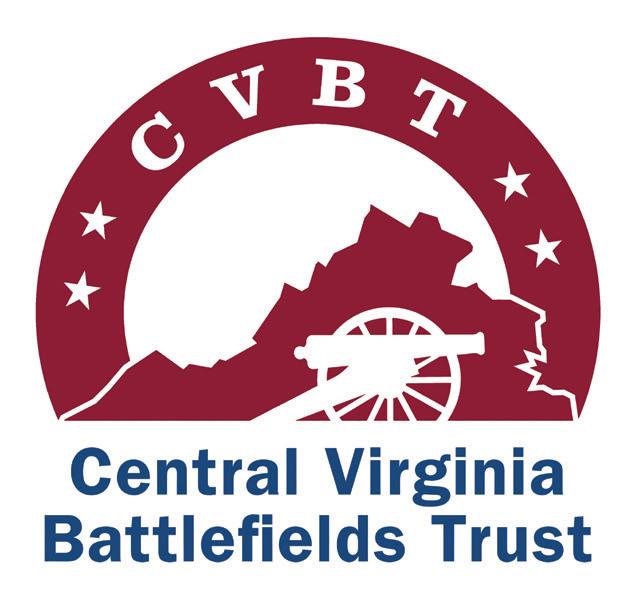 By Tim Talbott
By Tim Talbott
The opening three days of fighting at Spotsylvania Court House proved deadly for several general officers in the Army of the Potomac. On May 9, 1864, VI Corps commander Maj. Gen. John Sedgwick fell victim to a sharpshooter’s bullet. The following day, Brig. Gen. James C. Rice received a mortal wound while commanding his V Corps brigade. In addition, Brig. Gen. Thomas G. Stevenson, who led a division in the IX Corps, still technically independent from the Army of the Potomac at this time, fell on May 10 as well. Interestingly, each of these men killed in action was later honored by the naming of three forts at Petersburg for them that were all in close geographical proximity to each other.
In addition to those killed or mortally wounded during the opening days at Spotsylvania were the woundings of V Corps divisional commander Brig. Gen. John C. Robinson on May 8, and Brig. Gen. William Hopkins Morris, who commanded a brigade in James Ricketts’ division in the VI Corps on May 9. Morris is probably the least remembered of these five general officer casualties.
Born in New York City in 1827, William Hopkins Morris came from a family with deep ties to American history. His lineage included two ancestors who signed the Declaration of Independence. As a young man, Morris seemed to have an affinity for military matters. He enrolled as a cadet at West Point in 1846 and graduated 27th out of 51 in his class of 1851.
Serving in the U.S. Army as a second lieutenant, Morris spent time at Fort Columbus and Fort Wood in New York and then transferred west to Fort Yuma, California, until he resigned his commission in 1854. That year Morris returned to the Empire State to help his father edit the New York Home Journal newspaper. Morris also copatented the Conical Repeating Rifle with partner Charles L. Brown in 1859, which proved to be an unsuccessful attempt as an inventor.
When the Civil War erupted, Morris enlisted and initially helped man the defenses of Washington D.C., serving on the staff of Gen. John J. Peck as assistant adjutant general. Peck’s brigade eventually received orders to participate in the Peninsula Campaign. As part of the IV Corps, commanded by Brig. Gen. Erasmus Keys, Peck’s regiments fought at Yorktown, Williamsburg, and Fair Oaks. Their limited role in the Seven Days’ Battles occurred at Malvern Hill.


On September 1, 1862, Morris became colonel of the 135th New York Infantry, later redesignated as the 6th New York Heavy Artillery. Morris led this unit while stationed at Baltimore until December 1862. Moving to the Harper’s Ferry area that month, Morris received promotion to brigadier general in March 1863, and commanded a mixed infantry, artillery, and engineer brigade there. Although a participant in the Gettysburg Campaign, Morris’ brigade remained in a reserve role. That fall, they were involved in the Army of the Potomac’s movements between the Rapidan River and northern Virginia and back.
also added, “The enemy made repeated attempts to advance in front of the brigades of General Morris and Colonel Keifer, but were repulsed each time with heavy loss.”
Fighting in the Wilderness, but now in one of two brigades in James Ricketts’ Third Division of the VI Corps, Morris’ brigade saw little action on May 5. After being shelled early in the day and losing three killed and 19 wounded, Morris received orders from Sedgwick to support the right end of the corps line that had been flanked, “I changed front so as to face to the right, in order to injure the enemy as much as possible with my fire as he advanced,” Morris reported. Later, while repositioning after a discussion with Sedgwick, Morris noted that in doing so, “The shells of the enemy were severe upon us...” May 7 and 8 were primarily days of movement and maneuvering for the brigade. They left the Wilderness battlefield on the night of May 7, marching toward Spotsylvania. Morris noted their route as “along the pike and plank road to Piney Branch Church, through Chancellorsville. We were on the march fifteen consecutive hours.” They arrived at Spotsylvania on the afternoon of May 8 and went to support the V Corps. Being positioned and reposited several
Morris wrote several books on tactics, including the second volume of his Infantry Tactics, published in 1865. (Public domain)
Later transferred to the Third Corps, Morris’ brigade participated in the fighting at Mine Run. Morris did not file an official report on his brigade’s actions at Mine Run, but they did receive mention in division commander Joseph Carr’s report. Carr explained that he ordered Morris’ brigade “to charge and drive them from it [fence], which he did, driving the enemy through the fields beyond.” Morris and his brigade performed well, as Carr
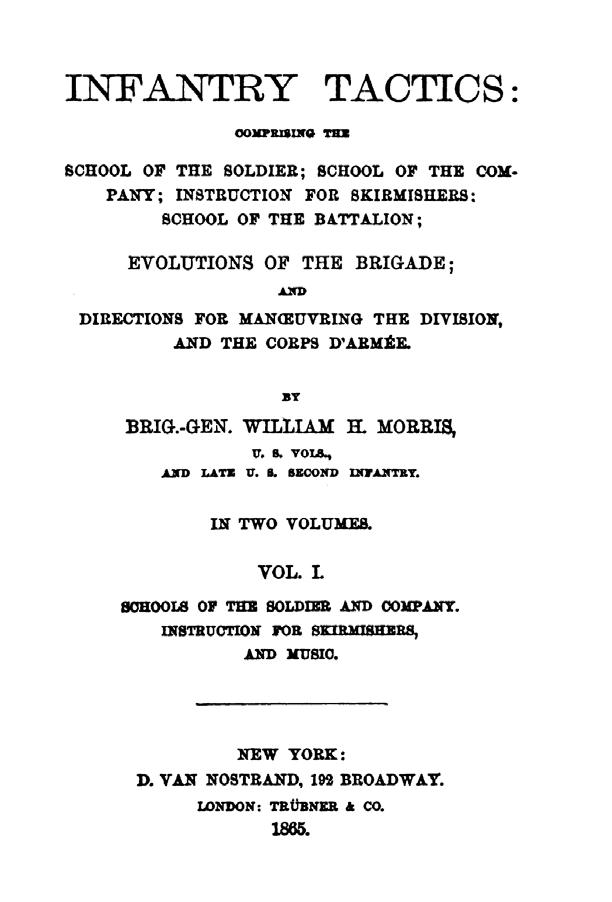
13 September 2023 13 September 2023 CivilWarNews.com CivilWarNews.com
This photograph shows Morris as colonel of the 6th New York Heavy Artillery. (National Archives)
Capt. William Hopkins Morris began his Civil War career on the staff of Brig. Gen. John J. Peck. Morris appears third from the right in this photograph of Peck and his staff. (Library of Congress)
times during the day must have annoyed Morris and his men.
On May 9, following orders to realign a couple of his regiments and while riding along his line, Morris “was wounded by a rifleball and rendered unfit for service in the field.” The shot apparently struck him near the right knee. Morris was still at the divisional field hospital the following morning, May 10, where he wrote his brigade’s official report
that covered the Battle of the Wilderness to his wounding at Spotsylvania.
A Confederate sharpshooter, or sharpshooters, made life along the VI Corps line particularly miserable on May 9. The marksman, or marksmen, made it dangerous for Battery H, 1st New York Artillery to operate their guns. A soldier in the 15th New Jersey noted that, “a rebel rifleman was posted on our right,
in a tree. He seemed to kill at almost every shot and was said to have taken twenty lives.” One of the victims was the color sergeant for the 15th New Jersey, Samuel Rubadeau, who was shot through the chest. The same bullet also wounded Sgt. Israel Lum in the thigh.
Was the harassing Confederate marksman who shot Brig. Gen. Morris the same one who shot these men and soon after killed
Sedgwick? It is difficult to know definitively, however, Sgt. Berry Benson, a sharpshooter in the 1st South Carolina Infantry, hinted in his memoirs of who he thought it was. Benson explained that a soldier named Ben Powell (officially a member of the 12th South Carolina), who was also in Gen. Samuel McGowan’s brigade but operated independently as what we would today call a sniper, came in from his day’s work on May 9 and said that “he had killed (or wounded) a Yankee officer.”
Powell utilized a long-distance shooting Whitworth rifle with a telescopic sight for his work. Benson noted that “[Powell] had fired at long range at a group of horsemen he recognized as officers. At his shot, one fell from his horse, and the others dismounted and bore him away.”
Benson speculated that Powell’s officer victim was Sedgwick and left it at that. However, several pieces of evidence indicate that Sedgwick was standing, not mounted, when killed; but Morris was riding, and his staff probably helped carry him to get medical attention. McGowan’s brigade was not in the area on May 9, but if Powell operated independently, as Benson explained, Powell might have wounded Morris.
the field, serving instead on court martials in Washington D.C. until he formally left the service in August 1864. A doctor’s report on January 1, 1865, noted that Morris’ wound still “has not healed, and the limb remains swollen and painful.”
After leaving the army, Morris stayed busy writing. He published Infantry Field Tactics in 1864 and Infantry Tactics (two volumes) in 1865. He also served in the New York Constitutional Convention in 1866. Morris received a brevet major general of volunteers rank from Congress in 1867. In addition, Morris continued editing the New York Home Journal. In 1879, Morris published another tactics book for troops using breechloading and repeating weapons. Dying at age 73 in 1900, Morris rests in Mountain Avenue Cemetery in Cold Spring, N.Y.
The repeating rifle that William Morris and Charles L. Brown developed before the Civil War never went into production. Charles L. Brown became major of the 34th New York Infantry and was killed at Malvern Hill on July 1, 1862. (Public domain)
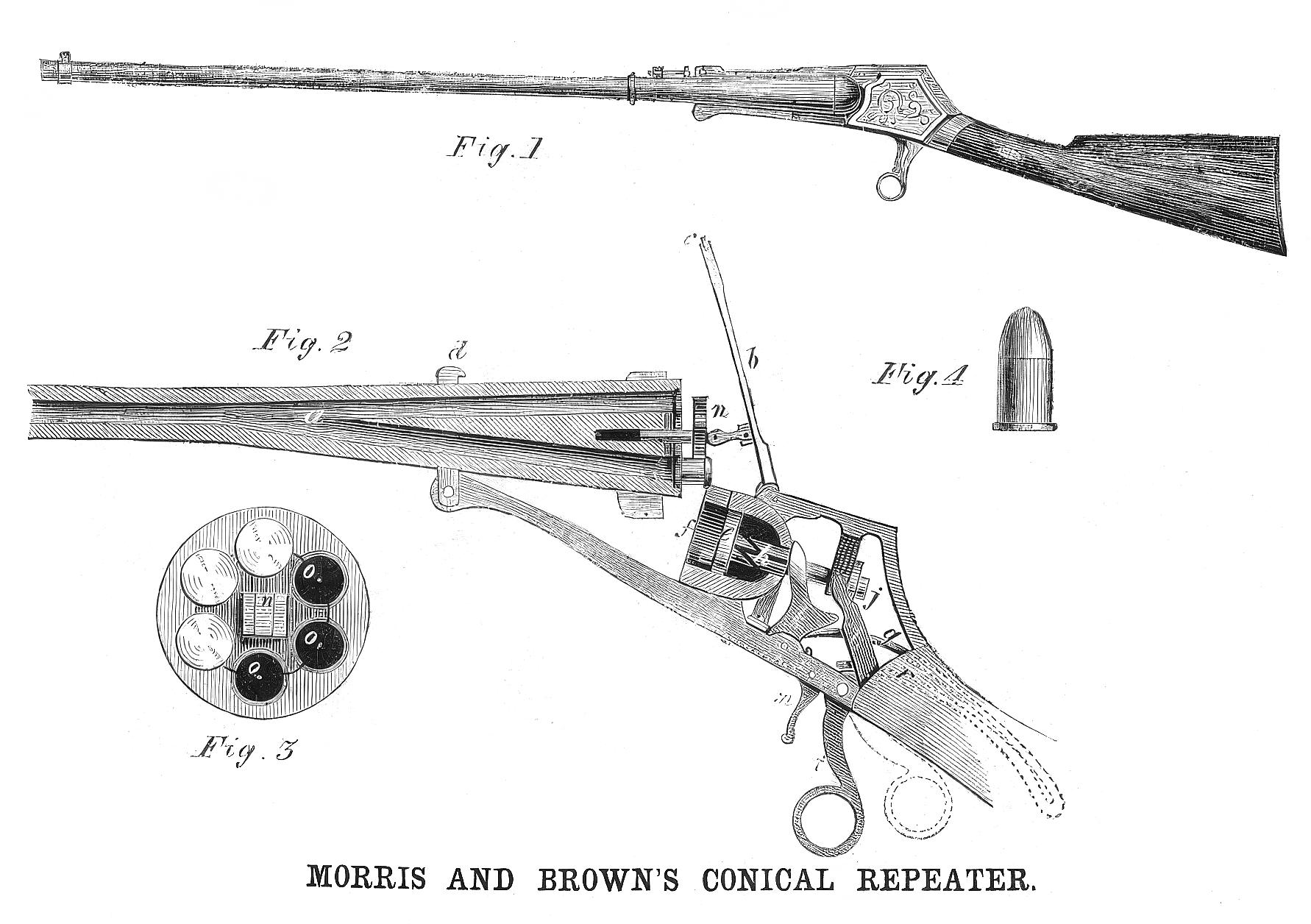
Morris spent several months recuperating from his painful wound. Although not requiring an amputation, he did not return to
CVBT has helped save over 150 acres of Spotsylvania battlefield land. The mission of CVBT is to preserve land associated with the four major campaigns of Fredericksburg, Chancellorsville, Mine Run, and the Overland Campaign, including the Wilderness and Spotsylvania Court House. To learn more about this grassroots preservation non-profit, which has saved over 1,700 acres of hallowed ground, please visit: www.cvbt.org.
General Sedgwick A Short Note
On May 9, 1864, during the Battle of Spotsylvania Court House in Virginia, General Sedgwick met his untimely end. He was standing with his staff and troops when Confederate sharpshooters began firing at them from a distance of about 1,000 yards. As the soldiers sought cover, Sedgwick reportedly showed characteristic bravery and dismissed the danger, declaring, “They couldn’t hit an elephant at this distance.” Tragically, those were his last words, as moments later, a bullet struck him just below the left eye, killing him instantly.
The news of Sedgwick’s death spread rapidly, sending shockwaves throughout the Union ranks and eliciting profound grief from soldiers and civilians alike. He had been a highly respected and effective leader, known for his calm demeanor, strategic acumen, and genuine concern for his men’s welfare.

14 CivilWarNews.com September 2023 14 September 2023 CivilWarNews.com
Tim Talbott is the Chief Administrative Officer of the Central Virginia Battlefields Trust.
This sketch by Alfred Waud shows the spot where Maj. Gen. John Sedgwick was killed. Morris was wounded nearby on the same day, May 9, 1864. (Library of Congress)
Col. Abraham Charles Myers, CSA and the Quartermaster Service of the Confederacy
by Lloyd W Klein
Abraham C Myers was the first quartermaster general of the Confederate States Army. He is not as well-known as Lee nor as illustrious as Stuart, but for the first three years of the War, no one had a more critical job, acquiring supplies necessary for the army and conveying them to the front. As the Quartermaster General, Myers was responsible for managing and supplying the Confederate Army with provisions, food, clothing, and equipment.
Background
Myers was born in Georgetown, South Carolina on May 14, 1811. He was the son of Abraham Myers, a Charleston attorney who had fought in the South Carolina Militia during the Revolutionary War.1 Myers was accepted to the United States Military Academy and entered in 1828; after repeating his freshman year, he graduated in the 1833 class.2 During the Second Seminole War (1841–1842) he served as an assistant quartermaster in the United States Army, and was promoted to captain in 1839. He then was in service at Fort Moultrie. During the Mexican
War he was brevetted to lieutenant colonel for “gallant conduct,” which is highly remarkable for someone in the quartermaster service. General Taylor was so impressed that Myers rose to command all quartermaster operations in his army.3 From 1848 to 1861, he served in the Quartermaster Department under Quartermaster General Joseph E. Johnston. He held numerous important administrative posts in several forts throughout the Southern United States.4 Myers was the quartermaster for the Army’s Department of Florida5 in 1850; Fort Myers, Fla., was named after Abraham Myers.
The Onset of the Civil War
In January 1861, Myers was stationed in New Orleans as chief quartermaster of the Southern Department.5,6 When Louisiana passed the Ordinance of Secession, several Federal officers immediately resigned.
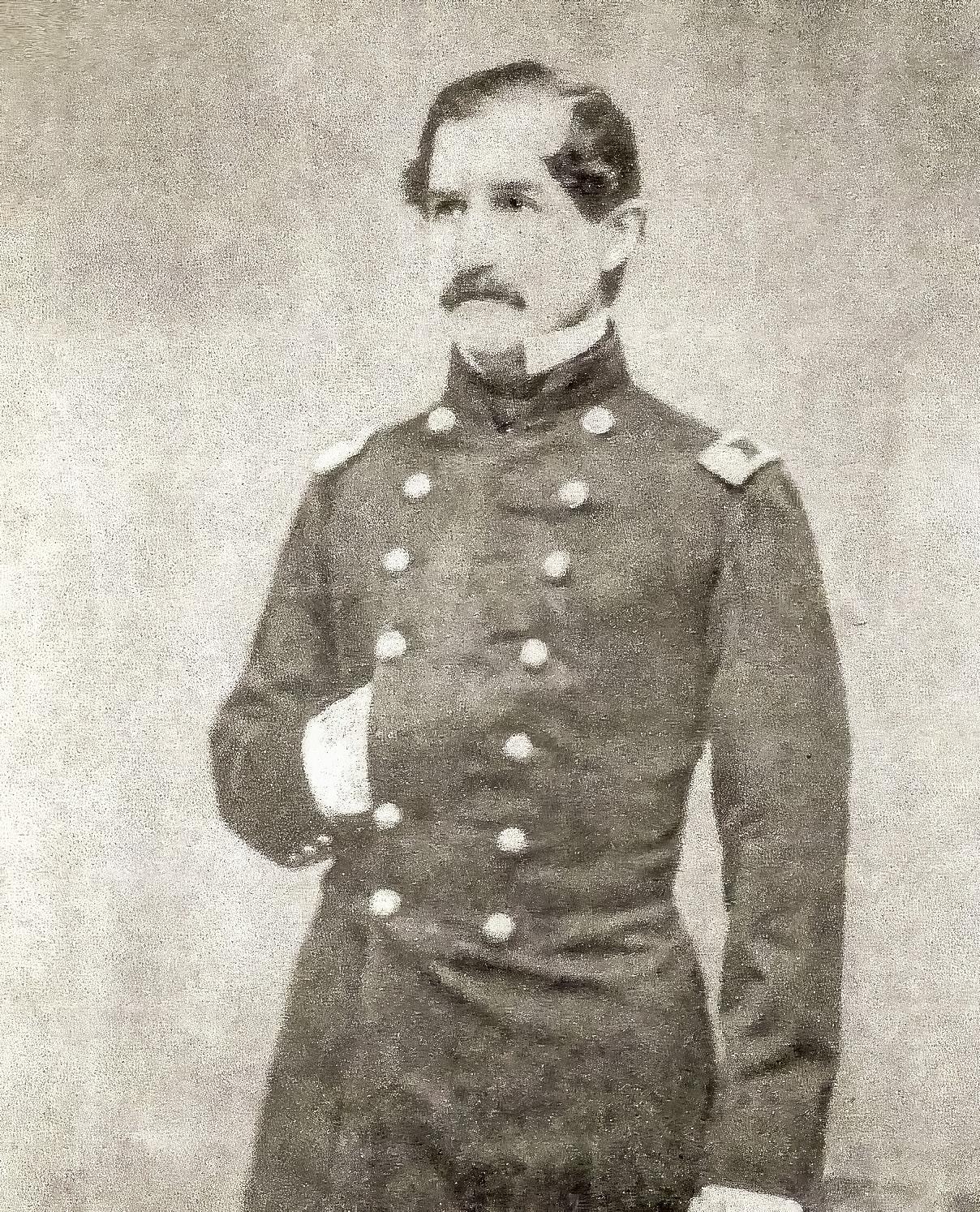
Maurice Grivot, Adjutant General of Louisiana, carrying out orders issued by Governor Moore, moved to sequester the remaining Federal property in the state.7 Myers, a secessionist and man of Southern heritage, promptly resigned his commission from
the United States Army and personally turned the supplies over to Confederate authorities. He was immediately named Quartermaster General of Louisiana.8
The Confederate Quartermaster Department
Myers actively sought the position of Quartermaster General of the Confederate Army. After the Confederate Congress created the position of Quartermaster General, Myers made his official nomination February 15, 1862. It was passed February 17 (see figure 1).9 Myers served as the first Quartermaster General for the Confederate States of America.
When the Confederate capital moved from Montgomery to Richmond, Myers’ bureau grew into an extensive administrative arrangement. The Quartermaster Bureau had its offices on the second floor at the southwest corner of 9th and Main Streets. The staff would eventually become the largest in the Confederacy’s supply administration, including 88 members.
The role of the Quartermaster General was crucial in maintaining the logistics and efficiency of the Confederate military operations. Abraham Myers played a significant part in ensuring Confederate forces were adequately equipped and provisioned throughout the war. The CSA faced numerous challenges due to limited resources; blockades imposed by the Union impacted their ability to sustain their war effort. The Confederate government lacked nearly all manufactured production and had little capacity to generate them. Most industry and transportation facilities in the United States were in the North. Along with its lack of manufacturing, the South had to contend with a formidable blockade of its ports, which severely hampered the Southern economy. Myers, who like most Southerners thought the war would be a short one and that the South would prevail, did not initially believe these were insurmountable problems.
His experience prewar southern postings and his prewar contacts were especially valuable. Myers sent agents into
the domestic market, contracting with local manufacturers, and paying competitive rates. The department bought cotton, woolen cloth, and leather goods. He also established shops for making clothing, shoes, tents, wagons, and other equipment, and purchased livestock at market prices for as long as possible. During the first few months the South had sufficient supplies to cobble together a supply chain.10
A quartermaster department is responsible for creating a supply network for the army; in particular, the procurement, maintenance, and transportation of military materiel, facilities, and personnel. It is the functional bridge between economics and tactical operations. To operate optimally, the logistical network must connect the combat forces with the strength and capabilities of the society it defends. It is not merely an administrative task; it is an enterprise in itself that requires using technological and economic resources to overcome an enemy and sustains military forces by supporting its warfighting readiness.11
The South lacked the infrastructure required to produce and manufacture the required huge quantities of food, shoes, and clothing, and it further was incapable of transporting them long distances in a timely manner. The Confederacy also lacked the machinery and personnel to maintain its existing railroad network, or build new locomotives and railroad cars to replace equipment that wore out.
Settling in for what would be a long war they had not planned for, the supply deficits developed into a crisis as the financial weakness of the country led to runaway inflation. Perhaps even more problematic than limited resources was the “pervasive ineffectiveness that characterized every aspect of Confederate administrative life, especially its logistical and supply arrangements.”12 Creating a new country with a new financial system, revamping its rail system, and developing an industrial capacity posed inconceivable and perhaps impossible problems for a state oriented government system. Trying to accomplish these tasks while being invaded by a much larger, resource rich country bordering its most critical strategic areas was likely beyond anyone’s capacity.
Myers immediately began advertising for tents and other camp equipment from Southern vendors.13 As president of the military board, Myers helped design the first Confederate Army uniform: “a blue flannel shirt, gray flannel pants, a red flannel undershirt, cotton drawers, wool socks, boots, and a cap.”14 Blankets, shoes and wool remained scarce. Quartermaster depots were created at Richmond and Staunton, Va.; Raleigh, N.C.; Atlanta and Columbus, Ga.; Huntsville and Montgomery, Ala.; Jackson, Miss.; Little Rock, Ark.; Alexandria, La.; and San Antonio, Texas.15
Supplying uniforms in bulk in 1861 was a huge problem.16 Myers estimated that he needed 1,600,000 pairs of shoes for the first year, but he could only locate 300,000.17 He also estimated that he would need hundreds of thousands of blankets, socks, and shirts, and almost no industry was present in the South to manufacture them. They would have to be purchased in Europe and brought through the blockade.
It was not enough to purchase these items; they had to be transported to the armies. He devised a system of supply depots; Richmond and Nashville would be the main depots for the two theaters, with multiple satellite storage areas closer to the front.18 Railroads were the primary means of transport; overland wagon routes were slow, roads were bad, and draft animals were required by the military. River traffic provided some relief but the armies did not operate along navigable rivers very often.
Despite a very large department, Myers was hampered by a lack of funds, inflation, and poor railroads, over which he had no control. His department was criticized by field commanders because the South could not obtain supplies to outfit the Army. His inability to provide shoes and uniforms was an especially serious problem.
He set goals and controls for Southern manufacturing throughout the war. By commandeering more than half the South’s produced goods for the military, the quartermaster general, in a counterintuitive drift toward socialism, appropriated hundreds of mills and controlled the flow of Southern factory commodities, especially salt.19
15 September 2023 15 September 2023 CivilWarNews.com CivilWarNews.com
Figure 1. The Acts of the Confederate Congress Establishing Myers as Chief, CSA Quartermaster Department.
Cost of Supply
Understanding the problems that confronted Myers requires a comprehension of the costs of Confederate supply and how the Confederate inflationary spiral altered the War. As a comparison, the U.S. dollar has experienced on average a 2.18% inflation rate per year since 1860. Hence, $1 in 1860 is roughly equivalent to $32.43 in 2023 dollars.20
The inflationary spiral of the Confederate dollar during the War increased costs exponentially: every six months, the value of the Confederate dollar decreased so much that costs were almost incomparable to the previous time frame. The total expenditures of the Confederate government, nearly all of which were for the War Department, increased from $70 million in November 1861 to $329 million in August 1862. That is a dizzying figure to contemplate in retrospect, and impossible to imagine what it was like for Myers, whose job was to administer and develop budgets for his department a year in advance. One example is that the $199 million allocated for the war budget for 1862 ran out by September.21 It’s impossible to operate a functional war machine with inflation at that unsustainable rate.

How did this happen? On April 29, 1862, Commander David Farragut captured the South’s largest port city, New Orleans.22 The fall of New Orleans was a powerful financial disadvantage. For a nation composed of rebellious states to wage war, it must have capital with which to pay for war supplies; weapons, armaments, horses, food, clothing, soldiers’ salaries, etc. The way the Confederacy raised cash to finance the war was to sell bonds to its citizenry. The Confederates issued one round of bonds for $15 million and a second for $100 million. With only six million citizens, and even fewer with real wealth and flexible cash, public financing through bonds sales was a limited prospect. The Confederate
government knew only foreign trading and investment could save it. Foreign investors thought conventional Confederate bonds were a poor investment and would not buy them. Moreover, the Confederacy itself was a poor credit risk. What products did they manufacture? What collateral did they own?
To spark interest in their bonds, the Southern treasury came up with an innovative solution. It involved exploiting the South’s most abundant and important crop, cotton. They would issue 20-year bonds; should they fail to make payments on the 7% coupon, the bondholder could convert them into cotton at the pre-war price of 6 pence/pound (figure 2.) To try and run the price of their bonds up even more, as well as compel Great Britain to recognize the Confederacy, the South imposed an embargo on cotton shipments. British imports of Southern cotton fell from 2.6 million bales in 1860 to just 72,000 in 1862. By late 1862 what the British called “The Cotton Famine” was laying waste to its industry and causing so much unemployment in the textile regions in the north of England that civil unrest was bubbling to the surface. Meanwhile, as the Southerners hoped, the price of cotton soared, from 6.25 pence/ pound to 27 pence, making their cotton-backed bonds more valuable. This sequence of economic events succeeded in attracting investors in London and Amsterdam, which initially provided some cash to finance the war. The value of the bonds was underpinned by the holders being able to take delivery of physical cotton at the discounted price should the South fail to make interest payments. Collateral is only good if a creditor can take control of it.
That’s why the Union Navy’s capture of New Orleans was so critical. It choked off a major Southern cotton export gateway. By 1863, after Britain had found new sources of cotton in India, Egypt, and China, investors lost faith in the Southern bonds. The
effect on the Southern economy was catastrophic. With the domestic market exhausted, and no European buyers of their bonds, the Confederacy was forced to print unbacked paper money. Eventually the South printed at least $1.7 billion in paper money. The North did too, but at war’s end their “greenbacks” were still worth 50¢ in gold, whereas the “graybacks” were worth just 1¢. Making things worse, Southern states and municipalities printed paper money of their own adding to the supply of unbacked bills. The resulting budgetary pressure had consequences all along the administrative path. In 1862, Myers saw his estimated budget cut from roughly $27 million/month to $19 million. He informed the cabinet that the current actual expenditure was $24.5 million/month, and with rising inflation would clearly become much higher. Myers lobbied Congress for more appropriations to keep the war effort on track. The Congress then passed a supplementary expenditure of $127 million to pay for just the three months of December 1862 to February 1863.23
Increasing Problems as the War Continued
By the spring of 1862, Myers was forced to resort to impressing necessary supplies. The scarcity of goods in the domestic market drove up prices, and combined with the insufficient funds provided him, made purchases to supply the war effort ineffectual. Added to this was the devaluation of currency and poor railway transportation of those supplies that were available. As the war progressed, Southern armies became short of all supplies. Many troops were barefoot or relied on boots taken from dead soldiers. Food, horses,
and supplies of all types were woefully inadequate.24
The spring 1862 battlefield setbacks had a catastrophic effect on the Quartermaster Department. Loss of cities like New Orleans, Nashville, and Memphis, with their river access, warehouses, and manufacturing, was irreplaceable. Surplus stocks were lost in the storage. Even more deplorable were supplies wasted by soldiers who discarded them in critical amounts.25
The loss of the Virginia Peninsula resulted in losing several depots with supplies that could not be replaced easily. Although the Peninsula Campaign and the Seven Days battles are considered great strategic victories, implications of the supply system impacts are overlooked. By moving to meet McClellan’s threat in the east, Johnston had to abandon his position in northern Virginia, which opened territory east of the Shenandoah north of the Rappahannock to Union control. This was prime flour and beef farming land, all lost to Union operations.26
By mid 1862, Myers was unable to fulfill requisitions for 40,000 uniforms. Commanding generals of both major armies blamed Myers for the lack of supplies. Bragg dismissed the chief quartermaster assigned to his army and replaced him with someone untrained in the business; Myers protested to Secretary George W. Randolph.27 Although nothing was done then, later that fall orders from the Secretary of War ruled that transportation and distribution of supply was under the command only of the quartermaster service. The 1862 losses in the west were devastating to the Confederate cause, not just from a strategic perspective, but from the logistics viewpoint as well. While 1862 is generally thought of as being

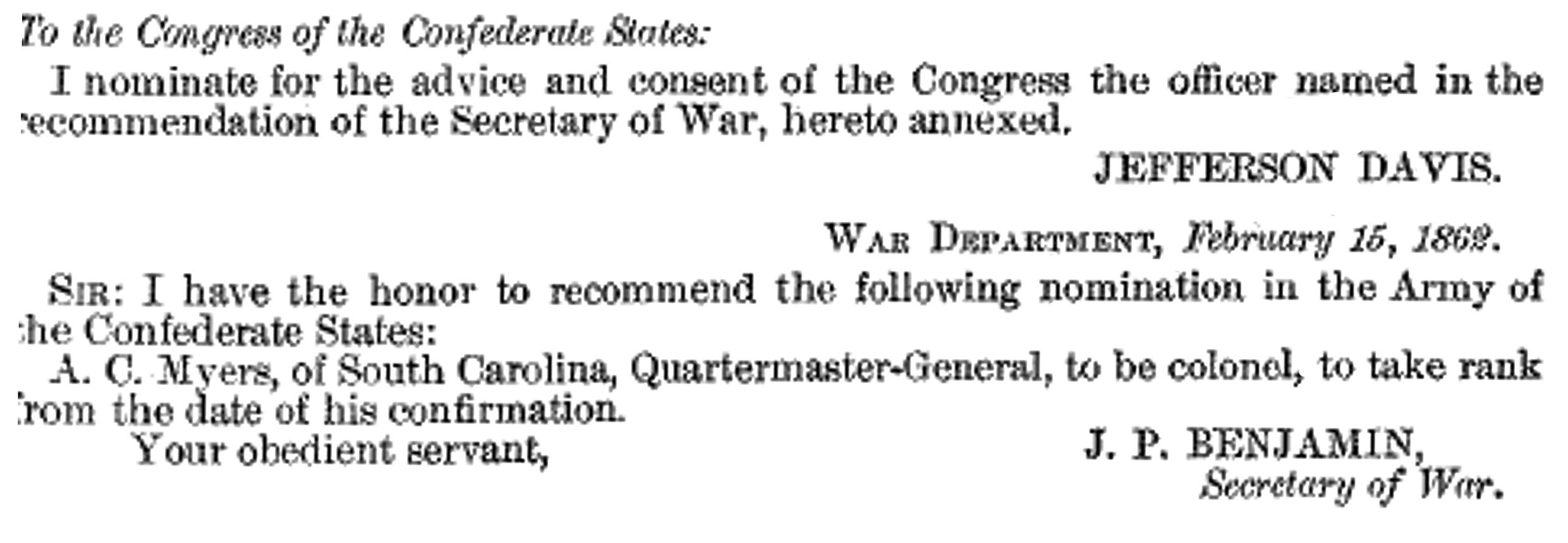
the peak of Rebel strength, the loss of the border states and the Mississippi Valley would have severe logistical repercussions for the next two years. The South lost many reserve supplies in retreats and a left behind large swath of food crops.28 This is a frequently overlooked feature of the war: as the Confederate army retreated, not only was it losing strategic ground but its supply resources as well, further impacting its strategic situation. In many retreats, supply depots and stores were often burned or abandoned, leaving unused, difficult to procure supplies.
Two years into the war, the initial measures taken to allay stresses on the supply chain had long been utilized. Attendant economic and supply consequences had strained the South’s economy and become perceptible both to citizens and the army, with substantial political and military consequences. In 1863, the interconnected economic effects of scarce resources and lost food producing territory had become an irresolvable conundrum.
The Union blockade decreased imports, reducing the amount of collectable customs duties. The blockade also limited Southern agricultural exports; thus, farmers and planters had less income to pay taxes. State’s rights made the central Confederate tax collections ineffective, even as the states were unable to contribute enough to support national war costs. The existence of slavery in the South and the diminishing likelihood of Confederate victory made foreign governments generally reluctant to loan money to the Confederacy.
General Lee felt that his army was never adequately supplied and experienced numerous problems due to the lack of supplies.29 Resort to impressing shoes by Lee’s soldiers became necessary. The
16 CivilWarNews.com September 2023 16 September 2023 CivilWarNews.com
Figure 2. A 7% Confederate Cotton Bond.
Proposed February 15, 1862. Passed Feb. 17, 1862.
inefficient redistribution system compounded the depletion of supply. The disparate groups granting contracts, submitting requisitions, and having a central authority, with no actual control or presence in the army units were conspicuous flaws in the process.
Myers was given permission to send his own agent, Major J.B. Ferguson, overseas to purchase stores. He also assumed some control over domestic leather, wool, and textile industries. By mid-1863, Myers had established an extensive organization of purchasing agents, local quartermasters, shops, and supply depots. It was still insufficient, and the Confederacy soon resembled a rag-tag army, particularly in clothing and footwear. The quartermaster department soon became the target of much criticism, and in spite of his personal efficiency, he was unable to overcome the laxity and carelessness of remote subordinates. There was a considerable black-market operation, as well.30
Removal from Office
Complaints about Myers, some of which were based on his religious background, led to him being replaced in the summer 1863. Inadequate supplies, especially clothing and shoes, had reached a crisis point. Tents, uniforms, blankets, shoes, horses, and wagons remained
scarce, requiring scavenging and impressment throughout the war. Although manufacturing improved during this time, it remained woefully inadequate.31
Myers was an excellent administrator but he could not create supply lines without purchasing power. Despite these supply problems, he was well regarded among his colleagues and contemporaries, who understood that the supply deficits were not due to his malfeasance.
Conclusion
Abraham Myers’ role as the Quartermaster General was important in supporting the Confederate war effort by overseeing army supply and logistics. His successor was even less successful than Myers in supplying the Confederate armies as the war went on, territory was lost, and the blockade took
Endnotes:
1. Burke, Walter E. Quartermaster: A Brief Account of the Life of Colonel Abraham Charles Myers, Quartermaster General C.S.A. W.E Burke Jr, 1976. Rosen, Robert N. (2000). Chapter 3: Hebrew Officers and Israelite Gentlemen. The Jewish Confederates Columbia: University of South Carolina Press. https:// muse.jhu.edu/book/85577. 2021, pp. 89–161. Kabakoff, Jacob. The Tombstone of the Reverend Moses Cohen. Accessed at https:// kevarim.com/wp-content/uploads/2018/10/Rev-Moshe-HaCohen.pdf
2. Burke op cit. Allardice, Bruce S. Confederate Colonels. A Biographical Register. Columbia: University of Missouri Press. 2008. Goff, Richard D. Confederate Supply Durham: Duke University Press. page 8. Warner, E. J. Generals in Gray: Lives of the Confederate Commanders. Baton Rouge: Loui-
increasing effect.
siana State University Press, 1959.
3. Elliot, Ellsworth Jr. West Point in the Confederacy. New York: G. A. Baker & Co., 1941. Page 401.
4. The Twiggs-Myers Family Fix Bayonets Blog. (hereafter: Fix) https://fixbayonetsusmc. blog/2019/03/29/the-twiggs-myersfamily-part-iii.


5. Colonel Abraham Charles Myers Jewish Military History Blog. https://jewishmilitary.org/f/colonel-abraham-charles-myers.
6. Goff op cit page 8.
7. Edwin C Bearrs. The Seizure of the Forts and Public Property in Louisiana Louisiana History 2:401-409, 1961). http://penelope.uchicago.edu/Thayer/E/Gazetteer/Places/America/United_States/ Louisiana/_Texts/LH/2/4/Seizure_of_the_Forts*.html. The War of the Rebellion: A Compilation of the Official Records of the Union and Confederate Armies, Series I, Vol. I, 495. Washington: Government Printing Office (Hereafter: OR). https://ehistory.osu.edu/ books/official-records/001/0495.
8. Rosen op cit. Chapter 1: The Free Air of Dixie. pp. 9–55. Bearrs op cit and OR pages 492-3. https:// ehistory.osu.edu/books/official-records/001/0492. Journal of the Congress of the Confederate States of America, 1861–1865 [Volume I] THURSDAY, February 21, 1861] accessed https://www.loc. gov/item/05012700. Journal of the Congress of the Confederate States of America, 1861–1865 [Volume I] THURSDAY, February 21, 1861. https://www.loc.gov/ item/05012700. Nomination in congress March 16, 1861, page 154. Hereafter: JCCSA. Wilson, Harold S. Confederate Industry Manufacturers and Quartermasters in the Civil War. Town: University Press of Mississippi. 2005.
9. Pages 841, 844 JCCSA; Wilson op cit.
10. Goff op cit pages 15-17 and Fix, op cit.
11. Wissler, John E. Logistics: The Lifeblood of Military Power Heritage.org. https://www.heritage. org/military-strength-topical-essays/2019-essays/logistics-the-life-
blood-military-power.
12. Hess, Earl J. Civil War Supply and Strategy. Baton Rouge: Louisiana State University Press, 2020.

13. Goff op cit pages 15-16.
14. Goff op cit page 16.
15. Goff op cit page 16.
16. Goff op cit page 33.
17. Goff op cit page 34.
18. Goff op cit page 35.
19. Lonn, Ella. Salt as a Factor in the Confederacy. New York: W. Neale, 1933 and Davis, William C. Look Away: A History of Confederate States of America. New York: The Free Press,, 2002. See especially Chapter 10.
20. Consumer Price Index Calculator. https://www.in2013dollars.com.
21. Goff op cit page 90.
22. Ferguson, Niall. The Ascent Of Money. A Financial History of the World. 10th Anniversary Edition. New York: Penguin, 2009.
23. Goff op cit pages 90-91 and 47-49.
24. Davis op cit Chapter 7.
25. Goff op cit page 66.
26. Goff op cit page 55.
27. Goff op cit page 66.
28. Goff op cit page 54.
29. OR, Series 1, Vol. 19, Part 2, p. 614. https://leefamilyarchive.org/9family-papers/741-robert-e-leeto-abraham-charles-myers-1862september-21. Keith S. Bohannon, Dirty, ragged, and ill-provided for: Confederate logistical problems
in the 1862 Maryland campaign and their solutions in Gary W. Gallagher (ed.) The Antietam Campaign, pp. 101–142, Chapel Hill: University of North Carolina Press, 2012.
30. Fix op cit; Goff op cit 68-70.
31. McPherson James M. To Conquer A Peace: Lee’s Goals In The Gettysburg Campaign. https:// www.historynet.com/conquerpeace-lees-goals-gettysburg-campaign.
32.
Dr. Lloyd W. Klein is Clinical Professor of Medicine in the Cardiology Division of the University of California, San Francisco. He is a nationally recognized cardiologist, clinical investigator and lecturer with forty years’ experience and expertise in managing myocardial infarction and individual tailoring of coronary revascularization strategies. He is also an amateur historian who has published extensively on the Civil War. His particular interests include political and military leadership and their economic ramifications. His book, Civil War Q&A, will be published by McFarland Publishers later this summer.
GEORGIA’S
CONFEDERATE MONUMENTS

lIn Honor of a Fallen Nation
Gould B. Hagler, Jr.
This unique work contains a complete photographic record of Georgia’s memorials to the Confederacy, a full transcription of the words engraved upon them, and carefully-researched information about the monuments and the organizations which built them. These works of art and their eloquent inscriptions express a nation’s profound grief, praise the soldiers’ bravery and patriotism, and pay homage to the cause for which they fought.
17 September 2023 17 September 2023 CivilWarNews.com CivilWarNews.com Subscribe online at CivilWarNews.com
www.mupress.org 866-895-1472 toll-free
lPromoters of Quality Shows for Shooters, Collectors, Civil War and Militaria Enthusiasts Mike Kent and Associates, LLC • PO Box 685 • Monroe, GA 30655 (770) 630-7296 • Mike@MKShows.com • www.MKShows.com December 2 & 3, 2023 Middle TN (Franklin) Civil War Show
Mike@MKShows.com • www.MKShows.com Admission Coupon To Any MKShows Event $1 Off 770-630-7296
Veer the Trust Toward Victory, Protect 32 Acres Tied to the Vicksburg Campaign
In Mississippi, the Trust recently launched a campaign to save 32 acres of hallowed ground connected to the Vicksburg Campaign — at Chickasaw Bayou and Champion Hill. The acreage, made up of 12 different parcels, will help fill significant holes in the core of the battlefield landscapes. While the Trust has already helped preserve more than 1,200 acres at Champion Hill, this campaign marks only the second preservation opportunity at Chickasaw Bayou.
Altogether, the total cost of this preservation opportunity is more than $2.1 million. However, with federal and state grants — some already awarded and some still pending — the Trust is left to raise $327,825 to finalize the deal. Each dollar contributed is expected to be multiplied by $6.50.
Often referred to as the turning point of the Civil War, the Vicksburg Campaign saw some of the most consequential moments of the conflict. Why? Because of the Mississippi River — the primary conduit for supplies and communication through the south
and a vital lifeline for goods going north.
At Chickasaw Bayou, in December 1862, the Confederate victory impeded the Union’s attempt to capture Vicksburg, which was key to controlling the Mississippi River. The 11 acres we can save here are divided into eight parcels, each with a different owner. With every owner at the table and ready to sell, this is a prime opportunity for preservation.

By the summer of 1863, war had landed upon the doorstep of the Champion family. Acknowledged by historians as the most decisive battle of the most crucial campaign of the Civil War, the Battle of Champion Hill concluded in a Union victory, which, combined with the following day’s success at Big Black River, weakened the Confederates’ position at Vicksburg. Eventually, the fall of Vicksburg marked a turning point in the war from which the South never recovered. Today, amid the 160th anniversary year of Champion Hill, the Trust has an opportunity to preserve 20 contiguous acres across six parcels.
To learn more about this, and other preservation opportunities, visit https://www.battlefields. org/2023VicksburgCampaign.
Achievement
Unlocked: Trust Meets 57,000-Acre
Milestone
As Americans celebrated the anniversary of the nation’s independence on July 4th, the Trust lauded recent preservation victories at two Revolutionary War battlefield sites. The success is comprised of four acres saved at Eutaw Springs, S.C., and more than a half-acre of land at Guilford Courthouse, N.C., pushing the

Trust’s preservation total to more than 57,000 acres. Furthermore, this additional acreage aids the Trust in its goal to protect 2,500 acres of Revolutionary War battlefield land for the upcoming 250th anniversary of America’s founding conflict — currently, 1,400+ out of the 2,500 acres have been saved.
“The permanent preservation of 57,000 acres of hallowed ground is a remarkable tribute to the soldiers who fought for our freedoms, whose memory educates and inspires future generations,” said Trust President David Duncan.
The half-acre at Guilford Courthouse played a role in the March 1781 battle, when British General Charles Lord Cornwallis’s army of 2,300 men engaged a larger force under Major General Nathanael Greene. The land lies within the Historic Landmark Boundary of Guilford Courthouse National Military Park in the middle of the British advance in the battle. With its purchase, the park aims to better tell a holistic story of the battle.
preservation advocates with the organization’s annual preservation leadership awards.
Dr. Carroll Van West, state historian and longtime director of the Middle Tennessee State University Center for Historic Preservation, received the State Preservation Leadership Award, and the Tennessee Wars Commission received the Brian C. Pohanka Preservation Organization Award. These leaders were recognized for their efforts in helping advance history and preservation in the Volunteer State.
The Tennessee Wars Commission was presented with the Trust’s Brian C. Pohanka Preservation Organization Award in recognition of its work in advancing the study of military history in Tennessee. Together, the Trust and the Tennessee Wars Commission have saved hundreds of acres across the state and worked to administer grants related to interpretation and restoration work.
Dr. Carroll Van West was recognized for his work in
Meanwhile, the four newly protected acres at Eutaw Springs played host to soldier encampments and fighting during August 1781. It also retains a witness tree that has stood sentinel for centuries.
“We won’t rest with this new milestone reached. Indeed, it only encourages us to carry on and continue our work to save more,” said Duncan.
Leaders in Battlefield Preservation Recognized at Annual Conference
At its 2023 Annual Conference in Franklin, Tenn., the Trust recognized two top battlefield
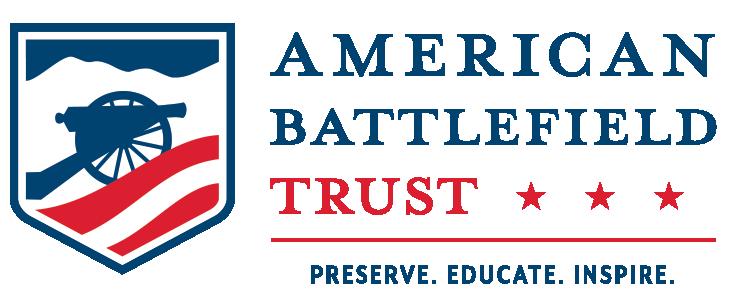
championing Civil War history and preservation in Tennessee. As the gubernatorially appointed state historian, Dr. Van West has been a strong voice for preservation across Tennessee.
Calling for Support to Advance Advocacy Efforts Across Battlefield Communities
Last year, a threat crystallized in Orange County, Va., the likes of which battlefield preservation has never seen before. The “Wilderness Crossing” megadevelopment would cover 2,600 acres of the historically sensitive landscape with residential units,
18 CivilWarNews.com September 2023 18 September 2023 CivilWarNews.com
Champion Hill Battlefield in Hinds County, Miss.
Photo by Mike Talplacido.
Eutaw Springs Battlefield in Eutawville, S.C.
Photo by Ryan Montgomery
commercial and industrial space, data centers and distribution warehouses.
Despite community opposition and serious concerns raised by historic preservation groups and the National Park Service, among others, the Orange County Board of Supervisors voted 4-1 to approve the project in late April. After weighing options and consulting with specialist counsel, on May 24, the Trust filed a legal challenge seeking to overturn this rezoning — joined by allies at the Central Virginia Battlefields Trust (CVBT) and Friends of Wilderness Battlefield (FOWB), which also own and manage land set to be impacted by the project, as well as local citizens.
The suit identifies numerous failings in the process through which the proposed development was considered and in the resulting rezoning, which cleared the way for 5,000 residential units, plus vast commercial and industrial development spread over 800 acres. For example — just before the final vote — the developers revised their proposal again, removing the five-millionsquare-foot cap on data center and distribution warehouse volume, allowing them to build as much industrial use as can be crammed into 750 acres. This was done without any analysis of the impact on historical resources.
As a steward of historic landscapes, the Trust saw a responsibility to advocate boldly on their behalf through this suit. But legal proceedings are expensive, and the organization does not wish for this work to detract from its core land acquisition mission. As a result,

in battlefield communities across the country.
The Trust has often sought win-win solutions, working with officials and developers to find a proper balance between development and historic preservation. However, when arguments fall on deaf ears or the process is circumvented to prevent consideration, the organization remains willing to fight.
To learn more, visit www.battlefields.org/ wilderness-crossing.
Gettysburg 160: OnField and On-Screen
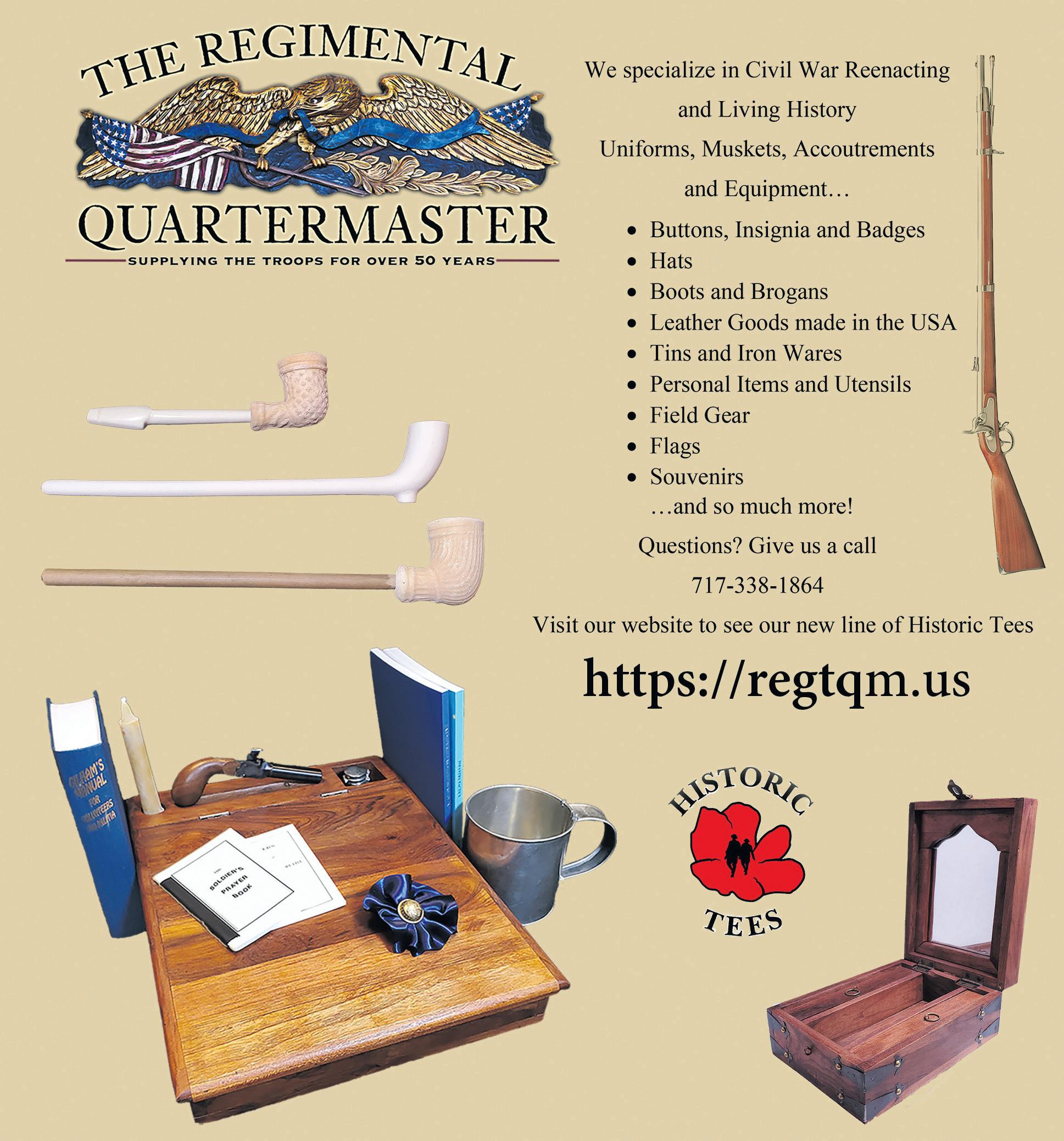

To mark the 160th anniversary of the Battle of Gettysburg, Trust staff ventured into the field July 1-3, for the 7th rendition of “Gettysburg Live” — a series of videos that explore and give context to the battle from a variety of angles. Trekking across the battlefield, the Trust entertained with a plethora of video content shared across Facebook and YouTube. To add even more excitement, the crew was joined by special guests AND special artifacts brought onto the field. To view the series, be sure to check out the Trust’s YouTube channel.
But even before Gettysburg 160 started, the Trust invited families, with their young history enthusiasts, to a “Generations” program at General Lee’s Headquarters. More than 120 participants embraced handson history and sparked an excitement for more educational programming to-come.
19 September 2023 19 September 2023 CivilWarNews.com CivilWarNews.com www.HistoricalPublicationsLLC.com Publishers/Authors Send your book(s) for review to: Civil War News 2800 Scenic Dr, Suite 4 PMB 304, Blue Ridge, GA 30513 bookreviews@civilwarnews.com
Trust President David Duncan presents representatives of the Tennessee Wars Commission with the Pohanka Award. Photo by Buddy Secor. the Trust asks for donations earmarked for advocacy efforts like this, as well as other grassroots activism
Chief Historian Garry Adelman leads “Generations” program participants in an activity in the field. Photo by Noel Kline.
We Are As Good As Ten Thousand Battle of South Mountain – Part I
“Here is a paper with which, if I cannot whip Bobby Lee, I will be willing to go home.” – U.S. Gen. George McClellan, Army of the Potomac
On September 3, 1862, C.S. Gen. Robert E. Lee, Army of Northern Virginia, sent a message to Confederate President Jefferson Davis, that he intended “to enter Maryland.” Within ninety days of assuming the command on June 1, Lee had driven U.S. Gen. George McClellan’s Army of the Potomac away from the Capital of the Confederacy, Richmond, Va., to the outskirts of Washington D.C. Aware that his men did not have the strength to defeat Washington’s formidable fortifications, Lee looked North. Maryland’s crops would soon
be ready to harvest. More to the point, Lee hoped for a victory on Union soil. By September 7, all of Lee’s men had crossed the Potomac.
U.S. Col. Rutherford B. Hayes, 23rd Ohio, had spent September 7 marching from Washington to Maryland as part of Col. Eliakim Scammon’s brigade, Kanawha Division. The future U.S. President was beloved by his men due to his diligence in looking out for his soldiers. Into camp rode his IX Corps. Commander Gen. Jesse L. Reno. Reno was “in towering passion because some of the men were taking straw or wheat from a stack.” Reno objected to pilfering in a loyal state and asked for the men’s colonel. Hayes, a civilian lawyer, presented himself. During the conversation, Reno had placed his hand on his pistol. The Ohioans began to handle their arms. Hayes, who appreciated Reno’s “gallantry and skill,” had defused the situation until
he remarked, “‘Well, I trust our generals will exhibit the same energy in dealing with our foes that they do in the treatment of their friends.’ He asked me, as if offended, what I meant by that. I replied. ‘Nothing—at least, I mean nothing disrespectful to you.’” The men cheered as Reno rode away. Reno was offended. “He spoke to Colonel [Hugh] Ewing of putting colonels in irons if their men pilfered!”
On September 9, Lee met with his generals. Blocking Lee’s ability to establish supply lines through the Shenandoah Vallely, Va., were 3,000 Federal troops at Martinsburg and 10,000 men at Harpers Ferry. Lee divided his force into five parts to capture the Federal garrison at Martinsburg and “intercept such as may attempt to escape from Harpers Ferry.” Lee issued Special Order No. 191 detailing his operational plan, including the location of every command.

On September 13, a signed



copy of Lee’s orders was found by Federal soldiers in a meadow. The “Lost Dispatch” was wrapped around three cigars in an envelope addressed to C.S. Gen. Daniel Harvey Hill. The envelope was quickly delivered to U.S. Gen. George McClellan, Army of the Potomac. McClellan proclaimed, “Now I know what to do!” He told Gen. John Gibbon, “Tomorrow we will pitch into his centre, and if you people will only do two good, hard days’ marching, I will put Lee in a position he will find hard to get out of.” McClellan divided his army into three wings to march through the passes up to South Mountain, Md,. on September 14 for a big fight on the 15.
On September 14, at 6 a.m., Gen. Jacob D. Cox accompanied Scammon’s 1,500 men with Capt. James McMullin’s, Ohio Light Artillery, 1st Battery, six 10-pdr. Parrotts leading the advance. They soon came across Col. Augustus Moor, Cox’s brigade commander, who had been captured two days earlier. Moor, learning of their destination, involuntarily exclaimed, “My God! Be Careful!” Honor-bound by the terms of his parole, Moor turned away, saying nothing more. Cox immediately returned for his Second Brigade and sent warnings to expect trouble on the mountain.
On September 14, before the Battle of South Mountain,
Md., began, Hill climbed the mountain’s summit and saw the Federal’s “marching columns extended back far as eye could see…many of the troops had already arrived and were in double lines of battle, and those advancing were taking up positions as fast as they arrived. It was a grand and glorious spectacle, and it was impossible to look at it without admiration.” Hill’s plan was to use his 2,300 men to delay McClellan until he could be reinforced.
Hill sent “the most fearless man I ever knew,” 31-yearold Gen. Samuel Garland to hold Fox’s Gap. Garland had graduated from Virginia Military Institute in 1849, and pre-war, the successful lawyer had been active in the state militia. Garland deployed his 1,100 men off the Old Sharpsburg Road over 1,300 yards. Scattered through the line were Capt. John Pelham’s two guns from Col. Thomas Rosser’s, 5th Va. Cavalry, and Capt. James Bondurant’s, “Jeff Davis Artillery,” two 12-pdr. Napoleon’s and two 3-inch rifles. Bondurant’s gunners began lobbing shells at Scammon’s men marching up Old Sharpsburg Road’s steep ascent. Instead of continuing the two miles to the summit, Scammon turned off onto the loop road to sweep around the Confederate right and rear.
At 9 a.m., Hayes’s 23rd
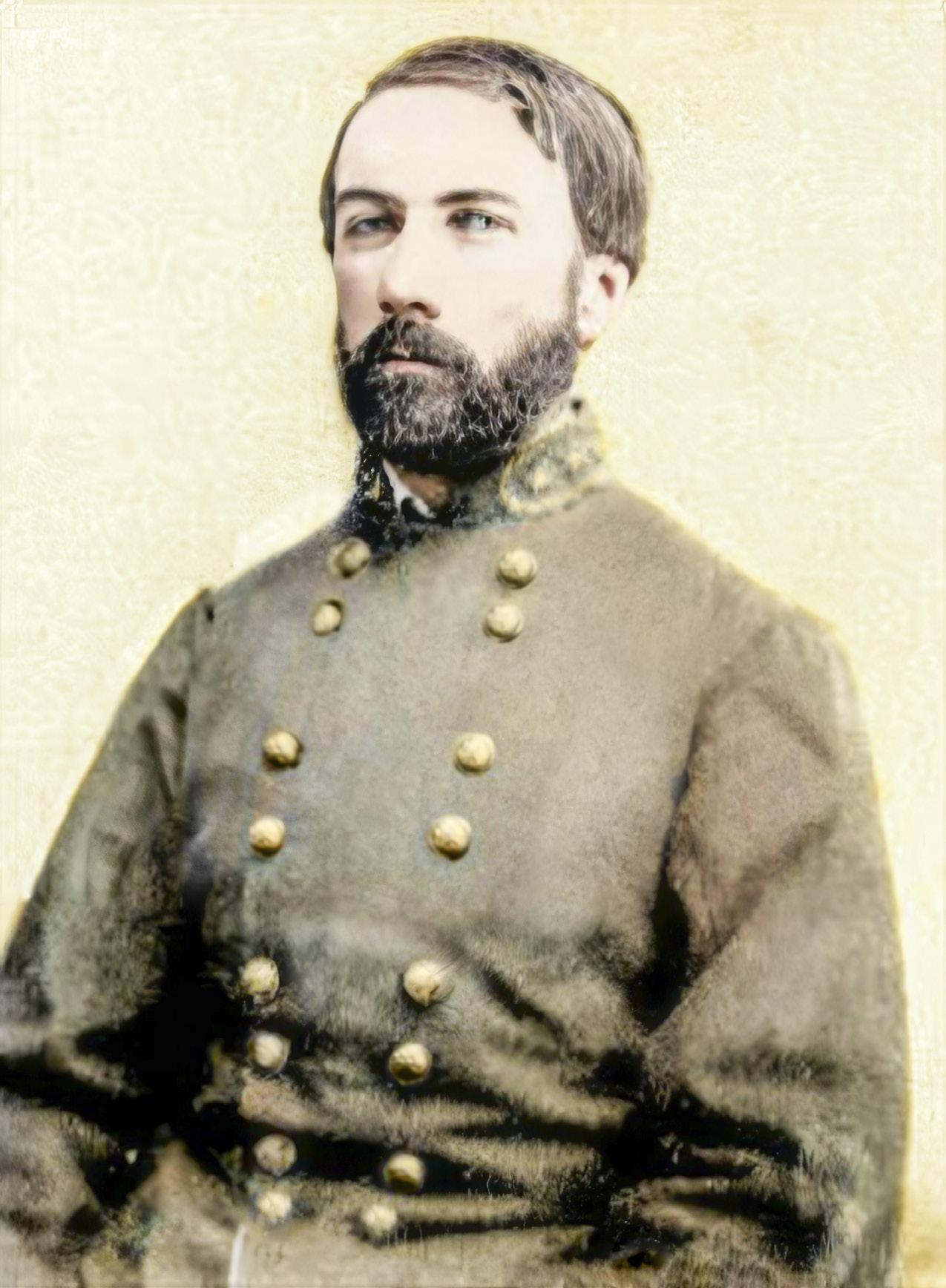
20 CivilWarNews.com September 2023 20 September 2023 CivilWarNews.com
Gen. Daniel H. Hill, C.S.A. Colorization © 2023 civilwarincolor.com, courtesy civilwarincolor.com/cwn. (Public Domain)
Antietam Cemetery in foreground, South Mountain in background – gap shows location of Signal Station during battle. View taken after the war. (Library of Congress)
Ohio led the attack up the mountainside through the thick wooded terrain. Garland ordered an entire regiment to support his skirmishers. The Ohioans “pushed through bushes and rocks over broken ground towards the enemy; soon received a heavy volley, wounding and killing some.” Fearing his line may break, Hayes yelled, “Now boys, remember you are the TwentyThird and give them hell! In these woods, the Rebels don’t know, but we are ten thousand; and… we are as good as ten thousand, by God!”
Hayes ordered a charge, pushing back the Confederates. The Confederates reformed and halted the Federal advance. The Ohioans fought their way to a stone wall. Rosser’s dismounted cavalry with Pelham’s two guns joined the attack on the Federals. Hayes believed their only chance was another charge. As he gave the command, Hayes felt a “stunning blow.” He had been shot in his left arm above the elbow. Fearing a cut artery, Hayes had a soldier tie his handkerchief above the wound. Weak and sick in the stomach, he sank to the ground. Hayes continued to direct the 23rd while in terrible pain and heavy fire hitting the ground around him. He ordered a company to wheel backward to face the threat, leaving Hayes between the two lines of battle, where he had a “jolly and friendly” talk with a wounded Confederate soldier lying nearby. An attempt to retrieve him renewed the heavy fire. Hayes ordered them back, “telling them they would get me shot and themselves too.” Eventually, Hayes was brought back through the lines and taken by ambulance to Middletown. Known for leading from the front, Garland rode over to where the firing was the heaviest to watch the battle near Ruffin.
Ruffin asked, “General, why do you stay here? You are in great danger.” Garland responded, “I may as well be here as yourself.”
Ruffin replied, “No, it is my duty to be here with my regiment, but you could better superintend your brigade from a safer position.” Before Garland could reply, Ruffin was shot in the hip. Garland turned in his saddle to give an order and was mortally shot in the chest. Col. Duncan McRae, 5th N.C., assumed brigade command.

Garland would be the first general to die at Fox’s Gap that day. According to Hill, Garland was “pure, gallant and accomplished Christian soldier … who had no superiors and few equals in service.” Soon it would be the Federals’ turn to lose a highly regarded general.


Sources:
Koptak, John David. The Battle of
South Mountain: The History Press, 2011.
Sears, Stephen W. Landscape
Turned Red: The Battle of Antietam: First Mariner Books, 2003
Williams, Charles Richard. (Ed.) The Diary and Letters of Rutherford B. Hayes, Vol. II: Ohio State Archaeological and Historical Society, 1922.
Hill, Daniel H. “The Battle Of South Mountain, Or Boonsboro. Fighting For Time At Turner’s And Fox’s Gaps.” In Battles & Leaders of the Civil War. Vol. 2 New York: The Century Company, 1887–1888.
Stephanie Hagiwara is the editor for Civil War in Color.com and Civil War in 3D.com. She also writes a column for History in Full Color.com that covers stories of photographs of historical interest from the 1850’s to the present. Her articles can be found on Facebook, Tumblr, and Pinterest.
21 September 2023 21 September 2023 CivilWarNews.com CivilWarNews.com Deadlines for Advertising or Editorial Submissions is the 20th of each month.
ads@civilwarnews.com
Gen. Rutherford B. Hayes. Colorization © 2021 civilwarincolor.com, courtesy civilwarincolor.com/cwn. (National Archives)
Gen. Samuel Garland, C.S.A. Colorization © 2023 civilwarincolor.com, courtesy civilwarincolor.com/cwn. (Public Domain)
MI Since 1979 Military Images magazine Showcase. Interpret. Preserve. MilitaryImagesMagazine.com | Facebook.com/MilitaryImages America’s only publication dedicated to historic photographs of soldiers and sailors. Or send a check payable to: Military Images PO Box 50171 Arlington, VA 22205 Subscribe online: MilitaryImagesMagazine.com SUBSCRIBE NOW 4 quarterly issues, $24.95
Edward and Henry T. Anthony & Co.


Civil War researchers have become familiar with famed wartime photographer Mathew Brady, but the names Edward and Henry T. Anthony may not immediately flash one’s camera. The Anthony brothers started a business photographing and publishing cartes-de-visite and stereographic views in 1847. Their success enabled the pair to fund the efforts of Brady as he worked to train and send out teams of photographers to capture images from various Civil War battlefields. Later in life, Brady gave the Anthony’s duplicates of his photographs; the brothers produced an album containing select views in 1865. Researchers can view many of these images online thanks to the Getty Museum. Begin your quest at https://www.getty.edu/art/ collection/group/103KPP.
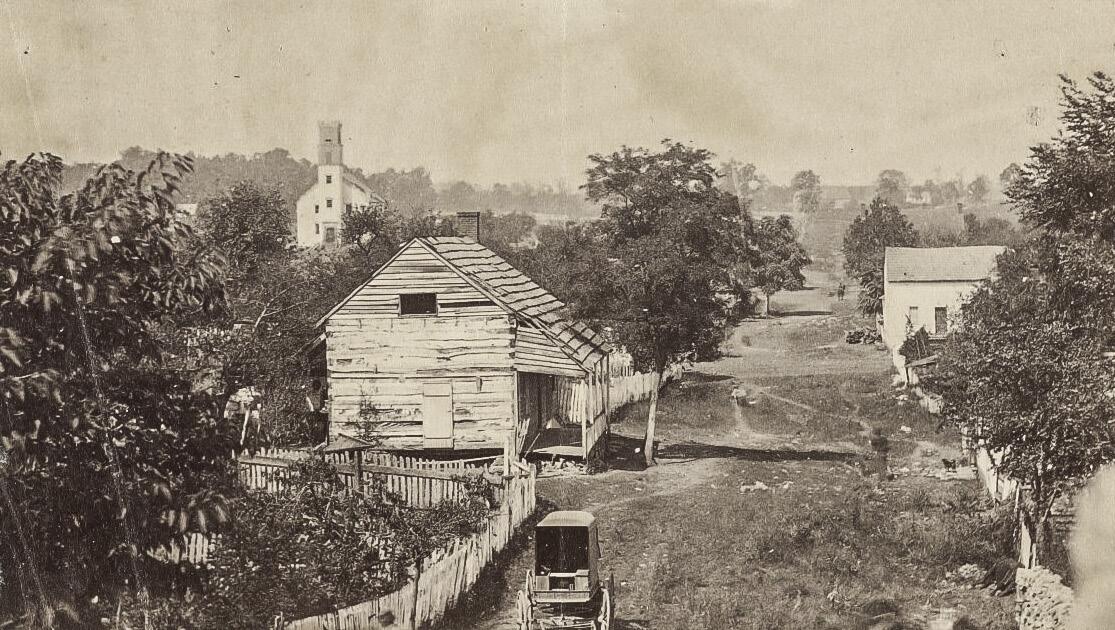


Users can search through the 1,144 images using keywords. As one example, a search of ‘Atlanta’ netted several results, including the scene along Marietta Street shown right. A query from Sharpsburg, Maryland, yielded results, bottom of page.
While using the Getty site, check out a helpful search tool: Union List of Artist Names, accessible at https://www.getty. edu/research/tools/vocabularies/ ulan/. Good luck in researching the American Civil War!


Michael K. Shaffer is a Civil War historian, author, lecturer, and instructor who remains a member of the Society of Civil War Historians, Historians of the Civil War Western Theater, and the Georgia Association of Historians. Readers may contact him at mkscdr11@gmail.com or request speaking engagements at www.civilwarhistorian. net. Follow Michael on Facebook, www.facebook.com/ michael.k.shaffer, and Twitter @ michaelkshaffer.

22 CivilWarNews.com September 2023 22 September 2023 CivilWarNews.com Subscribe online at CivilWarNews.com Want To Advertise In Civil War News? Email us at ads@civilwarnews.com Call 800-777-1862 Vol. 48, No. 48 Pages, September 2022 $3.50 America’s Monthly Newspaper For Civil War Enthusiasts 36 Central Virginia Battlefield Trust 34 The Graphic War 20 Through the Lens ST. BONAVENTURE, School of Communication, Trust the largest nonprofit Civil War battlefields, the and heritage tourism initiatives, The trust recognized “Chris has been great partner in presenting the award. “He his appearances on our videos. David N. Duncan, president of talented historians,” Duncan Mackowski Receives Outstanding Service Award from American Battlefield Trust Chris Mackowski among them. has worked closely YouTube and Facebook pages, with number of preservation my privilege serve cause and annually attracts hundreds of museum tours, and guest lectures first century. Teacher Institute, Mackowski intersection between technology, June, Mackowski traveled July 23 event in Mobile, Ala. Revolutionary War and Civil War Mackowski has taught chief and co-founder Emerging edited nearly two dozen books on War magazines. Mackowski preservation organization based (NC) Civil War Roundtable— battlefield in central Virginia.
Marietta Street view in Atlanta.
One of the sterographic images in the Getty collection.
Visit our website at CivilWarNews.com and it will take you to HistoricalPublicationsLLC.com. The events calendar is online and an updated before the print issue. Free to subscribers/$50 non-subscribers To submit an event send it to: ads@civilwarnews.com
Sharpsburg, Maryland scene.
September 2023
7thAnnual
Show & Sale
The Elite Civil War Collectors The Elite Civil War Collectors The Elite Civil War Collectors Civil War Military Collectors





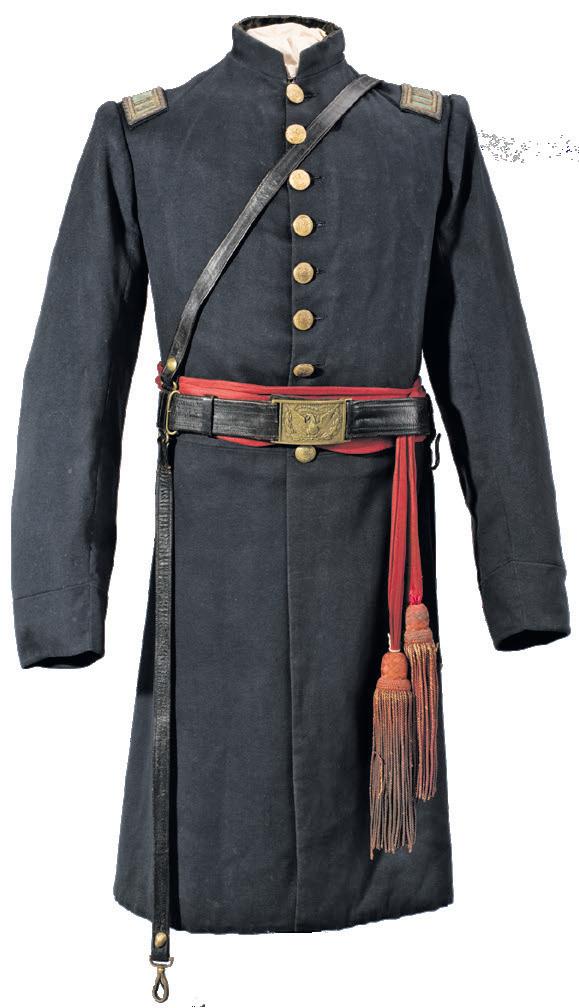
October 7 & 8, 2023
Show Hours:
October 7, Saturday: 9 a.m. – 4 p.m.

October 8, Sunday: 9 a.m. – 2 p.m.
Sponsored by Fort Donelson Relics & Fleischer’s Auctions.




Admission:
$5 Admission Per Person, Kids Under 12 Free
Come see some of the finest Civil War displays in the country hosted by The Elite Civil War Collectors Facebook Group. Collectors from all over the mid-South will be on hand to discuss and share their collections and history.

Show location: Stewart County Visitors Center 117 Visitors Center Lane Dover, TN 37058

For information contact john@fortdonelsonrelics.com

– MAKER –
(845) 339-4916 or email sales@dellsleatherworks.com

Until now, a daily account (1,630 days) of Georgia’s social, political, economic, and military events during the Civil War did not exist. In Day by Day through the Civil War in Georgia, Michael K. Shaffer strikes a balance between the combatants while remembering the struggles of enslaved persons, folks on the home front, and merchants and clergy attempting to maintain some sense of normalcy. Maps, footnotes, a detailed index, and bibliographical references will aid those wanting more.
February 2022 • $37.00, hardback
Michael K. Shaffer is a Civil War historian, instructor, lecturer, newspaper columnist, and author. He is a member of the Society of Civil War Historians, Historians of the Civil War Western Theater, and the Georgia Association of Historians. Contact the author: mkscdr11@gmail.com
War in Georgia www.mupress.org • 866-895-1472 toll-free

September 2023
The N-SSA

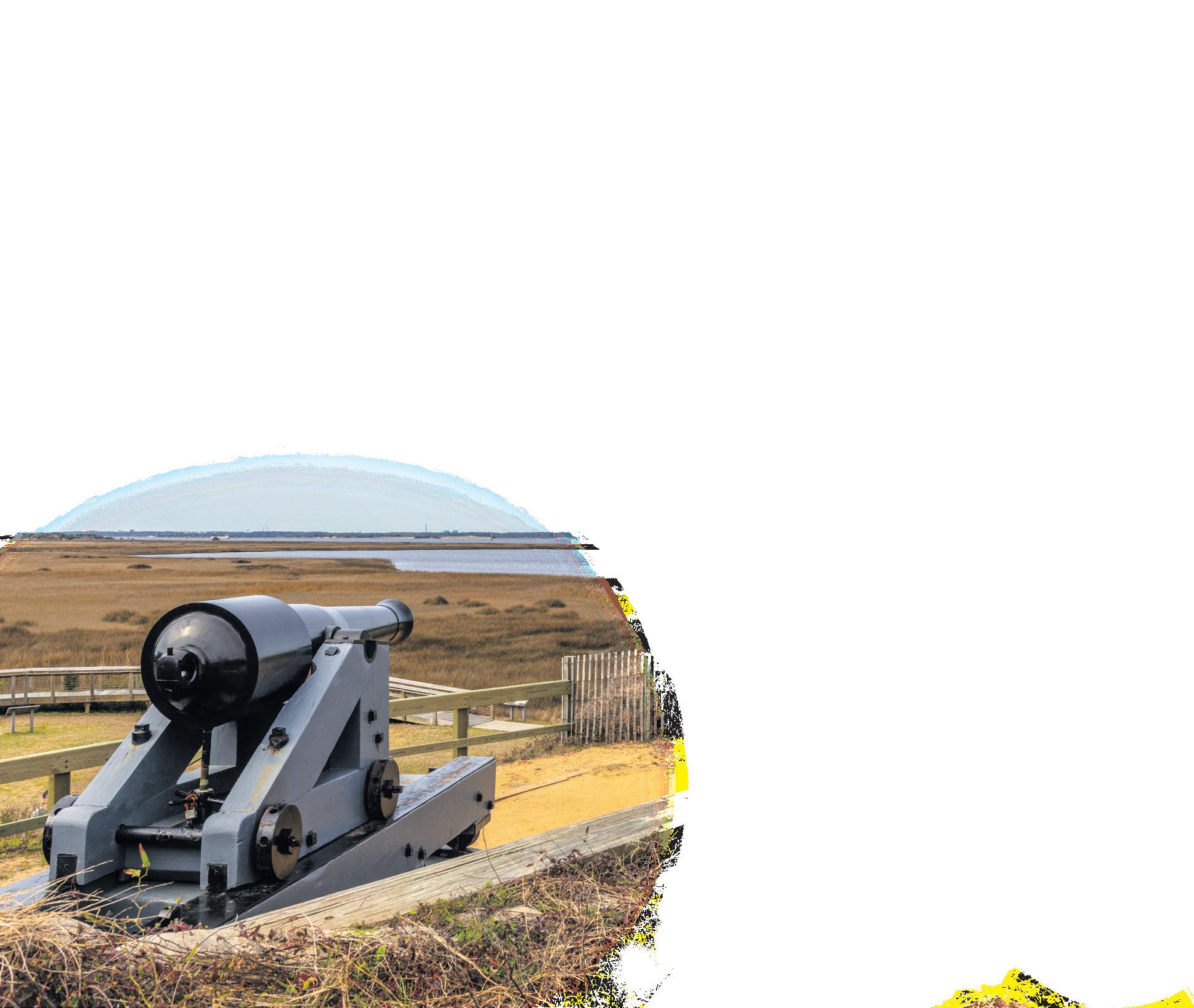
shooting sports organization. Competitors

original or approved reproduction muskets, carbines and revolvers at breakable targets in a timed match. Some units even compete with cannons and mortars. Each team represents a specific Civil War regiment or unit and wears the uniform they wore over 150 years ago. Dedicated to preserving our history, period firearms competition and the camaraderie of team sports with friends and family, the N-SSA may be just right for you.
For more information visit us online at www.n-ssa.org
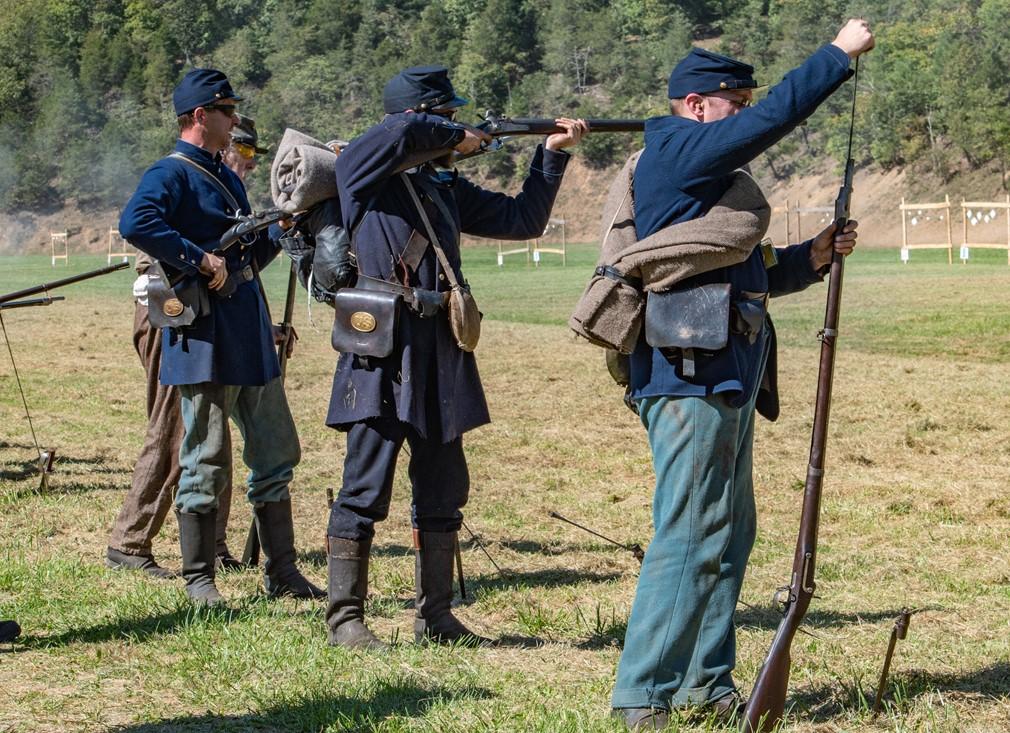
23
23
CivilWarNews.com CivilWarNews.com
by Day through the
Publishers/Authors Send your book(s) for review to: Civil War News 2800 Scenic Dr, Suite 4 PMB 304, Blue Ridge, GA 30513
Day
Civil
LEATHER WORKS
DELLSLEATHERWORKS.COM Contact Mike at: 910-617-0333 • mike@admci.com Provenance a Must! Fort Fisher items wanted
WWW.
is America’s
and
Civil War
oldest
largest
shoot
The War Before the War, Part 3: Captain Lee

Robert E. Lee’s record in the Mexican War is probably better known than the records of other officers who were to win fame in the later internecine conflict. Douglas Southhall Freeman’s four-volume biography of Lee covers his subject’s experience in Mexico in detail, with five chapters and nearly 100 pages devoted to this phase of Lee’s career.
Lee graduated from West Point in 1829, almost two decades before Thomas Jackson and
George McClellan, the subjects of the first two columns in this series. He held the rank of captain when the war began. Officers who were superior to Lee in Mexico were mostly out of the service by the time the next war commenced; those who were younger and lower in rank played a less prominent role in this war than did the future Confederate leader.


Capt. Lee’s service in the Mexican War began in September 1846 when he arrived in San Antonio. Lee and the other engineers attached to the division commanded by Brig. Gen. John Wool made maps, improved roads and bridged streams used
by Wool’s men as they marched to the Rio Grande and beyond into northern Mexico. For the rest
of the year and into the next these troops clocked several hundred miles marching to and fro over the engineers’ roads and bridges. However, they saw no combat. The theater had become quiet since Maj. Gen. Zachary Taylor’s victories at Palo Alto, Resaca, and Monterrey. However, rumors of trouble popped up from time to time. Once, acting upon intelligence of a nearby Mexican force with a threatening intent, Lee went off to reconnoiter. He found nothing more threatening than some shepherds and their flocks.
Another major battle was to be fought in February 1847, at Buena Vista, but Lee and much
of Taylor’s force would by then be transferred. They went south to join Maj. Gen. Winfield Scott’s attack aimed at the port of Veracruz and inland toward Mexico City. This move made military sense, and it also made political sense for Scott: the Veracruz route was a better way to Mexico City and possibly a better way to the White House as well. (Scott got Mexico City but Taylor got the White House.)
The transfer presented a big opportunity for Lee. He was leaving a theater that would become a backwater for the center of the action under the Commanding General of the Army. He would become a
24 CivilWarNews.com September 2023 24 September 2023 CivilWarNews.com
Captain Robert E. Lee. (Library of Congress)
General Scott at Cerro Gordo. Print shows General Winfield Scott, full-length portrait, wearing military uniform, facing left, riding on horseback at the battle of Cerro Gordo, Mexico, with soldiers in the background. (Library of Congress)
member of Scott’s inner circle and would play a significant part in the upcoming campaign.
The landing at Veracruz was unopposed. Once ashore, Scott decided to take the fortified

city by regular approaches.
The work was therefore largely an engineering job. Freeman described the task and Lee’s role. Lee “had a hand in most of the work of the engineers,
who laid off the lines, located the batteries, and directed the preparation of the platforms for the heavy ordnance.” Among his other duties Lee was assigned the work of siting the navy’s six large
guns, each weighing in at more than three tons.
On March 24, the defenders discovered the batteries just as they were ready to open. When the Mexicans began to shoot,
Robert E. Lee was in combat for the first time. The guns did the work in short order. The Mexican commander asked for a truce on the 26th and surrendered the following day.
Moving west toward the capital, 250 miles distant, Scott’s army next encountered a Mexican force under caudillo Manuel López de Santa Anna. Santa Anna, with 8,000 men and 95 cannon, held a strong position blocking the National Road. A direct assault would be very costly, possibly disastrous. The Mexicans’ right flank, protected by steep bluffs and a river, was all but impregnable. Their left was also a strong position, but perhaps a way could be found to get at the enemy from this direction. Scott ordered a study of the terrain on this flank to find out.
Lee would make a significant contribution to the major victory Scott’s forces won here, the Battle of Cerro Gordo. With other officers he scouted out the route around the enemy’s left on April 15. At one point Lee avoided capture by hiding under a log for several hours while Mexicans soldiers relaxed at a nearby spring. Then, groping his way through the dark, he returned to Scott’s headquarters with the necessary intelligence.
The following day he led a work party to cut a trail suitable for infantry and artillery. On the 17th he led the attacking division to the jumping off point for the assault. That night he directed the placement of artillery on Atalaya Hill to support the infantry attacking Cerro Gordo on the 18th. While this attack was underway he guided a brigade which raced to block the Mexicans’ only escape route. Over 3,000 of the enemy were captured. Remnants escaped in disorder. “Santa Anna himself barely escaped on muleback,” wrote Freeman, “leaving his carriage, his headquarters equipment, his correspondence and money chest to fall in to the hands of the Americans.”
Freeman wrote that Scott was much impressed by the 40-yearold captain and afterwards “leaned more and more on him.”
After Cerro Gordo, the army paused in Puebla, waiting for supplies and reinforcements, before resuming the march to Mexico City. What lay ahead for the invaders as they marched toward the objective? The job to find out about the approaches to Mexico City was given to the chief topographical engineer, Maj. William Turnbull, and Capt. Lee. Gathering information from travelers and local residents, Turnbull and Lee produced
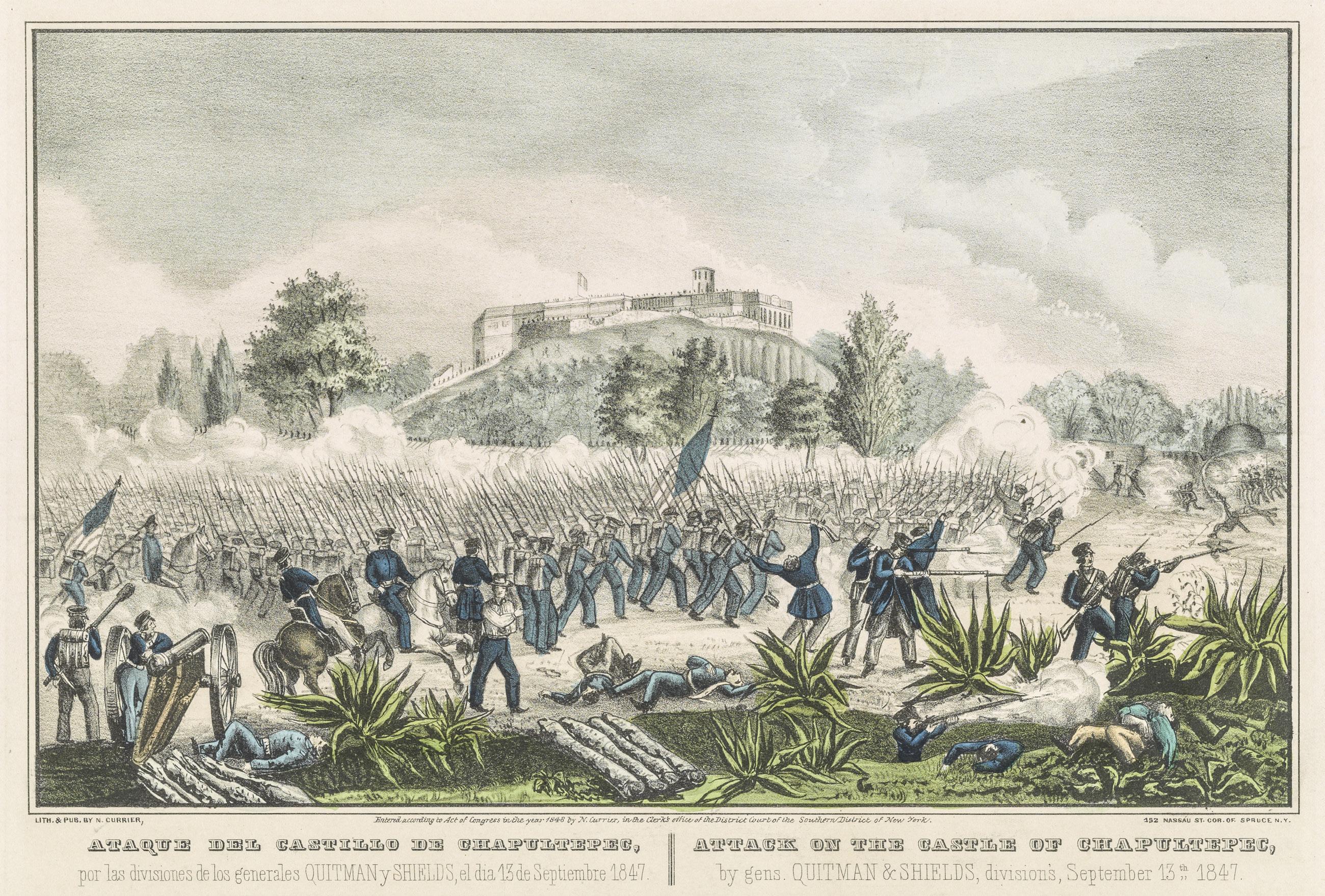
25 September 2023 25 September 2023 CivilWarNews.com CivilWarNews.com
Chapultepec Castle. Attack on the Castle Chapultepec / Ataque del Castillo de Chapultepec. (Library of Congress)
Cerro Gordo, The Flight of Santa Anna. Flight of Santa Anna—At the Battle of Cerro Gordo / lith. & pub. by R. Magee. (Library of Congress)
a serviceable map for the commander’s use as he weighed his options.
Scott, believing that a direct approach from the east would be extremely difficult, directed the two officers to make a careful investigation of the southern approaches to the city. This would be Scott’s choice, and this would be another opportunity for Lee to contribute substantially to the army’s success.

The approach from the south, though preferable to the other option, nevertheless presented a challenge. The main road, protected by artillery, ran along a narrow passage between two lakes. Further to the enemy’s right the way was blocked by a vast lava field, the Pedregal. Could an army pass through the Pedregal and find a better route into the city? Scott sent Lee to find out.
Lee played a key role in this important maneuver by which the U.S. force again flanked the enemy and avoided the bestdefended road. On August 18 Lee led a reconnaissance force into the Pedregal. He ascertained that the route, though difficult, was feasible. At dawn on the 19th Lee went in again, this time with a team of engineers and 500 workers drafted from the infantry. As the work party improved the narrow path, infantry and artillery followed.
In the next 36 hours Lee would cross the lava field three times, twice in the dark and with virtually no rest, overseeing the road work, bearing messages to Scott and guiding troops to the far end of the unearthly landscape.
While this route was better than the narrow passageway between the lakes, it was defended by infantry and artillery. The U.S.
forces had to fight to get through. In addition to all else he had done, Lee was in the three engagements fought in the Pedregal and on the roads beyond. In Scott’s report, Lee was cited for his “exceedingly valuable services rendered throughout the whole of these operations.”
Capt. Lee would soon be Col. Lee, as later he was breveted lieutenant colonel, as of August 20.
The movement around the Mexican right had forced another retreat, but the fighting was not yet over. Between the Americans and the Mexican capital was Chapultepec Castle, a formidable position commanding two of the five causeways leading into the city from the south and west. After a council of war, Scott chose this line of attack.
Lee and other engineers worked to bring up the heavy artillery, site the batteries and reconnoiter the approaches to the castle. Artillery bombarded the Mexican position on Sept. 12 and resumed on the

morning of the 13th prior to the infantry assault.
Chapultepec was the decisive battle of the campaign and the war. The castle quickly fell; its defenders retreated; American infantry and artillery pursued the enemy along the causeways up to the cities fortified gates. At 4 a.m. on the 14th a delegation from the city arrived at Scott’s headquarters to advise the commander that Santa Anna had evacuated the capital. There would be brief and sporadic fighting in the city after the surrender, but no organized or prolonged resistance. The battle, the campaign and the war were over. A truce was declared; treaty negotiations began; the American army occupied the now-peaceful city.
Lee was not idle during this occupation. He busied himself with surveying, map making and related work, prudent activities considering that there was no certainty that the fighting would not resume. However, the treaty was signed in February and the
war declared over in March 1848. Lee went home in the spring. After the Mexican War, Lee remained with the army, continuing duties as military engineer, serving as superintendent at West Point, and later moving to the cavalry. In 1859 he commanded the force that captured John Brown and put down the insurrection at Harpers Ferry, one of the sparks that ignited the conflagration that erupted in 1861.
Gould Hagler is a retired lobbyist living in Dunwoody, Ga. He is a past president of the Atlanta Civil War Round Table and the author of Georgia’s Confederate Monuments: In Honor of a Fallen Nation, published by Mercer University Press in 2014. Hagler speaks frequently on this topic and others related to different aspects of the Civil War and has been a regular contributor to CWN since 2016. His email is gould.hagler@gmail.com.
26 CivilWarNews.com September 2023 26 September 2023 CivilWarNews.com Publishers/Authors Send your book(s) for review to: Civil War News 2800 Scenic Dr, Suite 4 PMB 304, Blue Ridge, GA 30513
A pick ax of the type used in the Mexican War for such tasks as cutting roads through lava fields. Originally in the Beverly DuBose Jr., Collection. Won as a door prize by Gould Hagler.







27 September 2023 27 September 2023 CivilWarNews.com CivilWarNews.com Want to Advertise in Civil War News? call 800-777-1862 or email us at ads@civilwarnews.com Visit our website at CivilWarNews.com and it will take you to HistoricalPublicationsLLC.com. The calendar is online and an updated before the print issue. To submit an event send it to: ads@civilwarnews.com www.CollegeHillArsenal.com Tim Prince College Hill Arsenal PO Box 178204 Nashville, TN 37217 615-972-2418 www.CollegeHillArsenal.com
The Graphic War highlights prints and printmakers from the Civil War discussing their meaning and the printmaker or artist’s goals.
Every century since the Middle Ages has seen human progress and technological advances. The 19th century was particularly both blessed and cursed with technical innovations. Warfare, probably more than any other phenomenon, produced changes that forever changed the way it was waged. Consider that the Federal government’s decision to replace the long-relied-upon flintlock musket with the Model 1841 Mississippi Rifle. In 1945, Just over 100 years later, the United States dropped the first atomic bombs. Advances in medical practice and procedures began to extend life spans.
In the print world, the 1793 invention of the lithographic process competed with engraving and etching as a means of producing cheaper and cheaper images. Throughout the 1800s, it vied with a newfangled technology called the daguerreotype process. The two processes, print making and photography, on their two separate tracks, were accelerated by the time the American Civil War began. The American public hungered for news and graphic images of the war being waged by their sons, husbands, fathers and brothers. Photographers and
print makers responded to the challenge. Major lithography firms, particularly in large, northern cities saw hundreds of images of war scenes, portraits of generals and political leaders, and sentimental images, roll off their presses. At the same time, small hamlets all over the country witnessed the proliferation of countless photography studios ready, willing, and able to capture your likeness for the enjoyment of family and future generations.
Soldier boys and generals lined up at famous or now-forgotten photographic establishments to sit for their portraits for posterity. At first the south was no exception. Two Northernborn daguerreotypists in the new Confederacy were George W. Minnis (1819–1877) and Daniel Cowell (1831–1890).
Pennsylvanian Minnis started out in Petersburg where he was active from 1847 to 1861 and Richmond from 1852 to 1861. Cowell was active from the 1850s through the 1880s. He began in Baltimore, resettled in Richmond in 1860, and ultimately settled in New Haven Connecticut in 1875. He was the former head operator at Whitehurst’s Daguerrean Gallery in Baltimore.1
Their two most famous sitters were none other than Jefferson Davis and Robert E. Lee. Davis had just turned 53 in June 1861 when he made his way to the new Confederate capital of Richmond. “Davis posed for

two portraits during his visit to Minnis and Cowell. (Visit https:// tinyurl.com/mtkxk4d7) One view pictures him in a rather somber posture, wearing a dark jacket, light vest, and white shirt with high collar. His loosely knotted dark tie rests slightly askew. The

second image shows the tie tight and straight. This view became the engraving on the banknote.”2
It is unknown when, exactly, Lee sat for his photo. Civil War print experts Mark Neely, Harold Holzer, and Gabor Boritt estimate 1862 or ‘63. They call it “One of the most frequently engraved and lithographed Lee photographs” that was “routinely pirated by Southern photographers during the war and by Northern ones as well, notably Brady’s principal publishers, E. and H. T. Anthony, afterward.”3 The New York Public Library holds an original copy. The copy presented here is by engraver Paul Giradet (1821–1893) after Minnis and Cowell (Figure 1); it is in the collections of the National Portrait Gallery, Smithsonian Institution. Others shamelessly copied it, including French engravers Alfred-Leon Lemercier and J. L. Giles (active 1861–1881).
All were straight on copies.
Giles’ copy was probably the crudest. The most creative iteration of Minnis and Cowell’s work came after the war when artist John McRae and publisher John Kelly of New York issued a full-length portrait of Lee in 1867. (Figure 2). Typical of the fusion and confusion of photography and print making, the engraving credits the photographic studio of Mathew Brady for the original image with no mention of Minnis and Cowell. It portrays the heroic, “Marble Man” in high boots, immaculate uniform, sword to his left in a camp setting with the Confederate flag in the rear. Tents and mostly empty save one with soldiers seated at a planning table. Immediately behind Lee is a map prominently displaying the Potomac River. The gentle sweep of Lee’s tent is to his right. Artist McCrae flourished in New York City until his death in 1892 at age 77. His obituary credits the native of Edinburgh
28 CivilWarNews.com September 2023 28 September 2023 CivilWarNews.com
Ashley Rhodes (318) 419-0535 or email luckydog530@yahoo.com Original Colonial, Revolutionary War, Antebellum & Civil War, Documents, General Orders, Newspapers, Images, and Imprints. Visit my eBay store at: www.ebay.com/str/reddevilsmilitaria Over 15,000 sales and 100% Positive Feedback
Ashley R. Rhodes
((Figure 1) Robert E. Lee. Portrait, Engraving after Minnis and Cowell, by Paul Giradet, 1821-1893. Ca 1865. (National Portrait Gallery, Smithsonian Institution)
with learning the art of engraving before coming to America thirtyfive years earlier. “McCrae engraved portraits and subject plates, in both, line and stipple, for New York publishers of 1855. He executed several large and excellent subject plates for framing, and was working as late as 1880.”4 So what we have in McCrae’s engraving is a print taken from a photograph taken by Brady taken from a copy by Giradet or another engraver of Minnis and Cowell’s original photograph.
Minnis faded from the historical scene. Cowell married a Southern woman but she died soon after they relocated to New Haven. Sadly, Cowell committed suicide at age 59. He left one adopted daughter along with five brothers and two sisters. He was buried in New Haven.5
Eventually photography crowded out lithography and engraving.

Today, a comfortable hybrid or new synthesis called “photolithography” produces most of the material we use and see today in advertising, newspapers and special printing jobs.
Endnotes:
1. Directory of Baltimore Daguerreians, A-J compiled by Ross J. Kelbaugh, © Historic Graphics 1998, all rights reserved.
2. Carte de visite by Minnis and Cowell of Richmond, Va. John O’Brien Collection. Copied in folder. September 2023. John O’Brien of Charles Town, W.Va., is a retired journalist and historian from the University of Connecticut, and a contributor to Military Images. The images reproduced here are from his collection.
3. Mark Neely, Harold Holzer, & Gabor Boritt, The

Confederate Image: Prints of the Lost Cause, University of North Carolina Press, Chapel Hill, 1987. 64.
4. David M Stauffer, American Engravers Upon Copper and Steel. Burt Franklin, New York, 1907. 167.

5. https://www.findagrave. com/memorial/58001010/ daniel-t-cowell
After 43 years in the museum field, Cilella devotes his time collecting American prints and maps and writing. His most recent books are Upton’s Regulars: A History of the 121st New York Volunteers in the Civil War (U. P. Kansas, 2009). His two-volume Correspondence of Major General Emory Upton, (U. of Tennessee Press, 2017), received the 2017–2018 American Civil War Museum’s Founders Award for outstanding editing of primary source materials. He
has edited Upton’s love letters 1868-70, Till Death Do Us Part: (Oklahoma University Press, 2020). He has edited the book From Antietam to Appomattox with Upton’s Regulars: A Civil War Memoir from the 121st New York Regiment (McFarland Press, 2023).
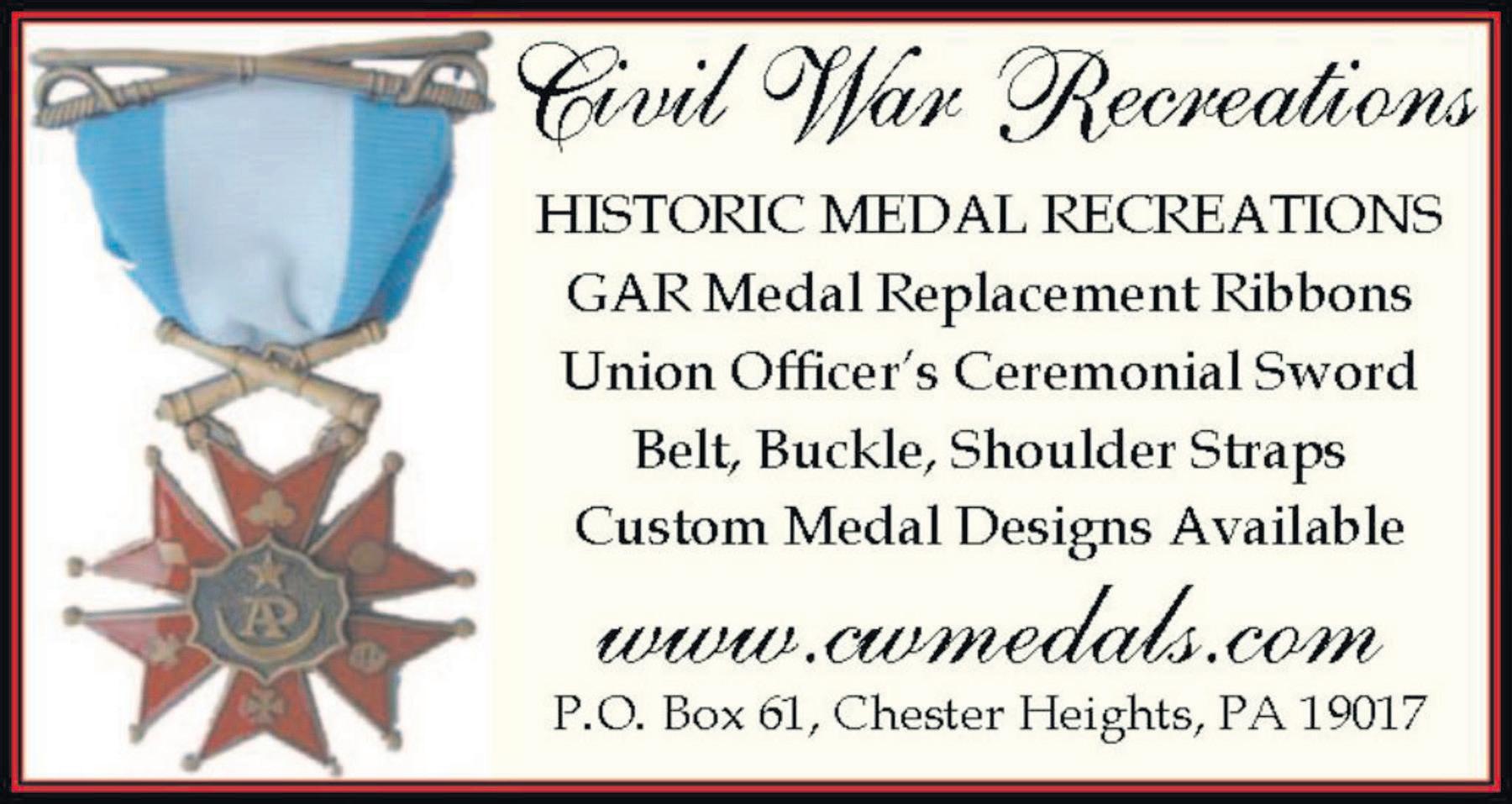
29 September 2023 29 September 2023 CivilWarNews.com CivilWarNews.com Subscribe online at CivilWarNews.com Join the Crew! civilwarnavy.com 1 Year—4 Issues: $37.95 Subscribe Now at civilwarnavy.com Or send a check to: CSA Media, 29 Edenham Court, Brunswick, GA 31523 International subscriptions subject to postage surcharge. (Figure 2) Robert E. Lee. Portrait, John McRae, engraver; J. Kelly Pub., ca 1867. (Library of Congress)
– MAKER –LEATHER WORKS (845) 339-4916 or email sales@dellsleatherworks.com WWW. DELLSLEATHERWORKS.COM
Raphael Semmes’ Memoirs of Service Afloat During the War Between the States (1869)

during the war, allowing him to recall, for instance, the vexatious delta mosquitos (“these little picadores”). He wrote truthfully and voluminously (over 800 pages), as if not even caring whether anyone would read his work at all. In other words, he was writing for himself.
Or maybe not. “The writer has discarded the didactic style of the historian,” Semmes explains in his Preface, “and adopted that of memoir writing, as better suited to his subject.” In this vein Semmes chose to write with something approaching the emotions of wartime. “Feeling is an important element in the real drama that is passing before the eyes of the beholder,” he announces, as he declares that he was writing with the sensibilities of a Southerner. “That his book,” Semmes added, “will be generally read by the Northern people he does not suppose.”1
More to the point, he just didn’t care.
right.” In Montgomery he met with President Davis, who was eager to enlist the services of a tried naval officer. On April 4 he was appointed commander in the infant C.S. Navy. Semmes asked naval secretary Stephen Mallory for a vessel suitable for commerce raiding—seizing Northern merchantmen as prizes—and was given the Sumter, a fivegun cruiser. On June 30, 1861 he sailed the Sumter out of New Orleans and into the Gulf of Mexico. “I reflected upon my mission, to strike for the right! To endeavor to sweep from the seas the commerce of a treacherous friend, who had become a cruel and relentless foe.”

In six months he captured eighteen Northern vessels, burning them at sea when he was denied access to bring them into neutral ports such as Cienfuegos, Cuba. He at first had trouble there; the port authorities “did not know what to make of the newborn Confederate flag.” Sailing across the Atlantic, Semmes took his ship to Gibraltar for repairs. When Union warships blocked the way out, Semmes left the Sumter behind and made his way to London.2

One of the pleasures of—and reasons for—reading the memoirs of participants in important events is to get at their recollections, ongoing thoughts and ruminative feelings. Historians and even biographers have a way of casting filters between “primary sources,” such as autobiographies and reminiscences, and our reading of them. Indeed, the very objectification of the writings of dramatis personae as “primary sources” is to render them as something “scientific,” to be studied like organisms in a Petri dish.
As if aware of this filtering, Confederate Rear Admiral Raphael Semmes (1809–1877) set out soon after the war to compose his memoirs as a life-story that no one could tinker with. At times he drew from a journal he kept
Some memoirs begin with a summary of their writer’s biography. Raphael Semmes chose not to, so it is for us to set the stage. Semmes was born in southern Maryland in September 1809 and grew up in Georgetown, D.C. After being orphaned at the age of nine, he lived with an uncle involved in the merchant marine. Young Semmes thus became enthralled with the sea. Another relative helped him win appointment as a U.S. Navy midshipman at the age of sixteen. The navy had a practice of placing officers on leave without pay, so young Semmes read the law, passed the bar in 1833, and opened a practice in Cincinnati.
But he wanted to be a seaman. Four years later he was a naval lieutenant and husband. Following postings, he moved his family to Pensacola, then Mobile; he came to call the latter place home. There he performed various shore duties. During the Mexican War he commanded four vessels.
A month after Alabama seceded Semmes resigned his commission. When war came Semmes was 53. “I had already passed the prime of life,” he admitted, “but I thanked God, that I had still a few years before me, and vigor enough of constitution left, to strike in defence of the

In England, Cmdr. James Dunwoody Bulloch had arranged for a prominent builder, the William Laird and Sons Company of Liverpool, to construct a warship suited to raiding commercial vessels on the high seas. 290—Laird’s 290th ship-was formally commissioned in August 1862 as the Alabama Semmes took command, hired a crew, and set out. “The great object now,” he recalled, “was to destroy, as speedily as possible, the enemy’s commerce, and to this I devoted all my energies.”3
During its almost two years at sea, Semmes and the Alabama captured/destroyed 54 Northern vessels—“more enemy vessels than any other ship in naval history,” writes Warren F. Spencer.4 At the same time, the captain was scrupulous in following maritime law: if cargo on a commandeered vessel was documented as foreign-owned, he let it alone. On the other hand, “in the absence of sworn proof, the rule of law is imperative, that all property found on board of an enemy’s ship is presumed to belong to the enemy.” Such was the case of the New York bark Olive Jane, which the Alabama ran down on Feb. 21, 1863.5 Semmes kept sharp discipline among his crew (drawn from around the world), except when allowing them to occasionally carouse while in port. Afloat in the evenings, he enjoyed the men’s pitching into song, especially
30 CivilWarNews.com September 2023 30 September 2023 CivilWarNews.com
Rear Admiral Raphael Semmes of the Confederate Navy with Confederate flag. (Library of Congress)
Statue of Rear Admiral Raphael Semmes, Mobile, Ala. (Carol M. Highsmith’s America, Library of Congress)
when “Dixie” came around. “The whole ship would be in an uproar of enthusiasm” he recalled, “sometimes as many as a hundred voices joining in the chorus; the unenthusiastic Englishman, the stolid Dutchman, the mercurial Frenchman, the grave Spaniard, and even the mysterious Malayan, all joining in in the inspiring refrain,—‘We’ll live and die in Dixie!’”6
High seas privateering required a little sneakiness. When approaching a suspected enemy ship, Semmes had the U.S. flag flown until closing in on his prey. In October 1863, the Alabama was cruising the Java and South China Seas when she came upon a New York clipper, the Contest. Hoisting at first the Stars and Stripes, Semmes then hauled it down and ran up the Confederacy’s Second National Flag, the Stainless Banner. “We were now wearing that splendid white flag, with its cross and stars,” Semmes writes, “which was so great an improvement upon the old one” (meaning, the Stars and Bars).7
Semmes and his vessel finally met their match on June 19, 1864 off Cherbourg. There they encountered the U.S.S. Kearsarge, which blocked the channel. “Semmes decided that the ship should fight rather than rot in a French port,” writes Dr. Spencer. After an hour of trading shots, Semmes’ vessel started sinking. “We fought her until she could no longer swim,” Semmes recalled, “and then gave her to the waves.”8

Semmes was proud of his accomplishments. He set out
hoping that his commerce raiding would force the enemy to draw blockading warships from the Southern coast. But he settled on knowing that his preying on Northern merchantmen was driving up insurance rates for them, forcing many to stay at home, cowering in port. In December 1861 he recorded, “the enemy was fast losing his Mediterranean trade, under the operation of high premiums for war risks.” By the spring of 1863, American shippers were avoiding the common transoceanic routes out of fear of the Alabama Even though the Union Navy declined to siphon away from the blockade, “his success against merchantmen,” writes Dr. Spencer, “led merchants worldwide to refuse to ship under the U.S. flag.” Before the war, the American merchant marine was second in the world; it never recovered.9
Semmes wrote proudly of his damage to Northern commerce. During the war, “It went down to zero, and since the war it has not revived.”10
As a good Confederate, Semmes opens his book with a lecture on the constitutional validity of secession. Aside from arguments over slavery and the tariff, Yankees and Southerners were so different in their origins and cultures as to have become “two distinct nations.” Semmes’ unabashed partisanship is shown in this passage from his Memoirs:
The Yankee is certainly a remarkable specimen of the genus homo. He is at once a duck, and a chicken,
and takes to the water, or the land, with equal facility. Providence has certainly designed him for some useful purpose. He is ambitious, restless, scheming, energetic, and has no inconvenient moral nature to restrain him from the pursuit of his interests, be the path to these never so crooked. In the development of material wealth he is unsurpassed, and perhaps this is his mission on this new continent of ours. But he is like the beaver, he works from instinct, and is so avid of gain, that he has no time to enjoy the wealth that he produces. Some malicious demon seems to be goading him on, in spite of himself, to continuous and exhausting exertion, which consigns him to the tomb before his time, leaving a “pile” of untouched wealth behind him.11
Semmes enjoys telling how his vessel ran down enemy ships, “overhauling her enemy, with the ease of a trained courser coming up with a saddle-nag.” As he burns Northerners’ vessels, he is mindful of their government “starving an entire people, women and children included.” “Whenever we heard a Yankee howl go up over a burned ship, we knew that there were fewer dollars left, with which to hire the canaille of Europe to throttle liberty on the American continent.12
For his accomplishments Semmes was promoted to rear admiral in early 1865. He was in Richmond when the capital fell.
As the Confederacy collapsed and President Davis was fleeing the city, he appointed Semmes a brigadier, commanding a small contingent of troops accompanying Davis’ entourage. Semmes thus holds the singular distinction of having served the Confederacy as both navy admiral and army general. He was dispatched to Johnston’s army in North Carolina, where he surrendered and was paroled.
Returning to Mobile, Semmes bean a law practice. In the next few years he composed his lengthy memoir. He left this life in 1877 and is buried in Mobile’s Catholic Cemetery with his wife Anne. The UDC and SCV have dedicated a biographical tribute alongside their grave.13
Semmes ends his reminiscence with commentary of the Reconstruction strife then ongoing between President Johnson and the Congress. He did not sound optimistic: “The form of government having been changed by the revolution, there are still other acts of the drama to be performed.”14 Boy, was he right.
Endnotes
1. Raphael Semmes, Memoirs of Service Afloat During the War
Between the States (Secaucus NJ, 1987 [1869]), 8-9, 112.
2. Warren F. Spencer, “Raphael Semmes” in Richard N. Current, ed., Encyclopedia of the Confederacy, 4 vols. (New York: Simon & Schuster, 1993), vol. 3, 1392-1393; Semmes, Memoirs, 119, 138.
3. Warren F. Spencer, “Laird Shipyards” in Richard N. Current, ed., Encyclopedia of the Confederacy, 4 vols. (New York, 1993), 904; Semmes, Memoirs, 666.
4. Spencer, “Laird Shipyards,” 904.
5. Semmes, Memoirs, 578; William
Marvel, The Alabama & the Kearsarge: The Sailor’s Civil War (Chapel Hill, 1996), 120.
6. Semmes, Memoirs, 455.
7. Marvel, Alabama & Kearsarge, 191; Semmes, Memoirs, 693.

8. Spencer, “Raphael Semmes,” 1394.
9. Semmes, Memoirs, 289; Spencer, “Raphael Semmes,” 1393.
10. Semmes, Memoirs, 697.
11. Semmes, Memoirs, 285, 481-82.
12. Ibid., 576, 614, 623.
13. William C. Davis, “Raphael Semmes,” in Davis, ed., The Confederate General, 6 vols. (Harrisburg, 1991), vol. 5, 141, 143.
14. Semmes, Memoirs, 833.
Like many boys, Steve Davis grew up with the hobby of dinosaurs. (He can still draw a mean tyrannosaurus.)
Since the fourth grade, though, the Civil War has been his passion. In high school he entered an historical essay contest and wrote on Matthew Fontaine Maury—and won a prize!
Of course, at Emory he took Bell Wiley’s Civil War class. A Master’s from Chapel Hill followed, then a Ph.D. at Emory, where he devoted his dissertation to the role of the Civil War in the Southern arts. (A descendant lent him some of Allen Redwood’s drawings; they’re now at the Museum of the Confederacy.)

He’s now written ten books, edited a couple more, and written hundreds of articles and book reviews.
At seventy-five, Steve shows no signs of slowing down. Savas Beatie will publish his The National Tribune Remembers the Atlanta Campaign next year. And watch for that counterfactual coming out from Shotwell Publishing!
February
31 September 2023 31 September 2023 CivilWarNews.com CivilWarNews.com
Eliza Frances Andrews (1840–1931) received a strong education and was a successful writer and educator. Her War-Time Journal of a Georgia Girl surely ranks among the most observant and intelligent wartime memoirs by a Southern woman.
Edited with commentary by Stephen Davis, I Thank the Lord I Am Not a Yankee includes selections of her wartime and postwar journals which are most expressive of her Confederate patriotism and Southern pride.
“I Thank the Lord I Am Not a Yankee...” www.mupress.org 866-895-1472 toll-free www.mupress.org
2023 • $35.00, hardback Stephen Davis is author of ten books on the Civil War, most of which treat the Atlanta Campaign. His two recent volumes on Confederate General John Bell Hood have won several prizes, including the Fletcher Pratt Award of the New York CWRT.
Painting of CSS Alabama by Rear Admiral J. W. Schmidt.
www.emergingcivilwar.com
From the Editor:
The road from Appomattox first let me past a small roadside site labeled “Robert E. Lee Wayside.” Here, following his surrender to Ulysses S. Grant and his departure from Appomattox, Lee spent the night on his return to Richmond. It is one of my favorite sites of the campaign because it offers such a complex context for contemplation. What was going through Lee’s mind on that evening? What road lay ahead for him? Where would he go? Where could he go? Oh, what must have tumbled through
his mind on that evening. Did he wonder if this was the end of the road?
(For more on this, see https://emergingcivilwar. com/2015/04/12/ lee-on-april-12-1865/)
Earlier in the evening, I had spoken at the American Civil War Museum in Appomattox, sharing the story of Grant’s last battle, not Appomattox at all, as it turned out, but a fight against cancer. Facing financial ruin because he had been swindled by a business partner, Grant raced to complete his memoirs before the cancer finished him.
That talk happened on a Thursday evening. From there, the road from Appomattox took me past Lee’s Wayside, eventually to Grant Cottage atop mount McGregor in upstate New York, the site where Grand did, indeed, finish his memoirs just days before his death. The road had taken me there for the Cottage’s “Remembrance Day” ceremony commemorating the anniversary of Grant’s death on July 23. It is an honor for me any time I get to speak at the Cottage, but to do so on Remembrance Day was especially humbling.
By the last few weeks of Grant’s life, throat cancer had mostly denied him his voice, and


so he communicated primarily through pencil on paper. He was surrounded by family, doctors, and well-wishers, so those last weeks were well chronicled in Grant’s own handwriting. But what remained unsaid, or unscribbled, on paper, during those weeks? What was going through his mind as he had neared the end of his own road?
Grant and Lee both ultimately remain unknowable in those moments, yet those same moments of personal struggle, where they confronted their own mortality, where they were at their most human, invite us to try and know them better.
As students of the Civil War, the road from Appomattox is our road, too, and it is for us to consider where that road might take us.— Chris
Mackowski, Ph.D. Editor-in-Chief
The Ninth Annual Emerging Civil War Symposium at Stevenson Ridge

Our symposium sold out by late May (about two weeks earlier than usual, actually). If you missed the chance to get a ticket, there’s always next year. Looking ahead, our annual symposium will be held August 2–4, 2024. We’ll announce our topic and keynote speaker at this year’s event (August 4–6, 2023), and then early bird tickets will be available on the website. Get your tickets early so you don’t miss out!
ECW News & Notes
Sarah Kay Bierle has been at a lot of different historic sites for work or ECW projects this summer: Arlington National Cemetery, Brandy Station, Gettysburg, Chambersburg, New Market, Baltimore, Harpers Ferry, Stafford Camps, Washington, D.C., and Chancellorsville. Then
there is Spotsylvania, Reams Station, Fort McHenry, Antietam, Frederick, and Gettysburg again, still on the schedule before the season is finished. Keeping busy, telling real stories where history happened!
Sheritta and Jared Bitikofer welcomed their first child, Annabelle Clara Bitikofer, into the world on July 7th at 9:22pm. Her middle name is directly inspired by Clara Barton, Civil War nurse and founder of the Red Cross. Sheritta and Annabelle are spending their late-night feeding sessions catching up on American Battlefield Trust videos, staying immersed in history.
the Gettysburg Heritage Center, July 1, Dwight signed copies of the new ECW Tenth Anniversary volume, The Civil War on the Water: Favorite Stories and Fresh Perspectives from the Historians at Emerging Civil War, which he and Chris Mackowski edited Chris Kolakowski recently lectured to the Commemorative Air Force about the Berlin Airlift. The video is at https://m.youtube.com/ watch?v=uapuKO1FmEw&t=1s. Chris also says, “The state budget for this biennium includes $9m to acquire the current site of the Wisconsin Veterans Museum and start development toward a new facility.” Chris is director of the museum.
Neil Chatelain spent a good bit of July exploring Utah, Nevada, California, and Oregon. That makes all 50 states for Neil and his wife Brittany! Not to worry about Civil War related things, though, as there were some unexpected and often overlooked Civil War sites to see so far west that will soon find their way onto the blog!
This month, Doug Crenshaw has led private tours of Cold Harbor and the Seven Days Campaign.
Dwight Hughes recorded a two-part podcast for the U.S. Naval Academy History Department “Tell Me Another” series episodes 44/45, now available at their website. “Clash of the Ironclads” tells the story of USS Monitor and the battle of Hampton Roads based on his ECW Series book, Unlike Anything That Ever Floated. On Battle Anniversary Weekend at
Chris Mackowski presented “An Intro to the O.R.s: The Official Records of the War of the Rebellion” at the American Battlefield Trust’s National Teacher Institute in Baltimore, Md., on July 13 and 14. He and Kevin Pawlak also co-led a bus tour of Washington, D.C.’s monuments, Ford Theater, and Arlington National Cemetery. On July 24, he presented “Abraham Lincoln as a Writer” for the Trust’s Virtual Teacher Institute.
ERW historian Mark Maloy was interviewed in the Florida Daily about the Rev War in the southeast, including in the Sunshine State: https://www. floridadaily.com/an-interviewwith-historian-mark-maloyabout-the-american-revolutionin-the-southeast-includingflorida.


Derek Maxfield had a great time with the kind folks at the Charlottesville CWRT July 11. He spent the following morning exploring Belle Isle in Richmond, Va., site of one of the worst Confederate POW camps. Upcoming speaking engagements include Albany on July 26 and the Old Baldy CWRT in Cherry Hill, NJ, on August 10. Terry Rensel spoke to the Fredericksburg Rotary Club on Thursday, July 20 about Central Virginia Battlefield Trust and battlefield preservation. He also recently discovered 3 ancestors, including a 3x great-grandfather, in the 105th Pennsylvania and another ancestor in the 57th Pennsylvania.
Cecily Nelson Zander starts her new gig as an assistant professor of History at Texas Woman’s University in August, teaching the history survey and a class on Texas history to start. She also had an essay come out in Reviews in American History entitled “Whither The Radicals?” It takes a closer look at the lack of scholarly work on the Radical Republicans in the Civil War era.
32 CivilWarNews.com September 2023 32 September 2023 CivilWarNews.com
Chris Mackowski
Chris Mackowski sits on the spot where US Grant worked on his memoirs during the last days of his life
The latest member of the ECW family: Annabelle Bitikofer.
Neil and Brittany Chatelain celebrate their 50th state.
ECW Bookshelf
Bert Dunkerly and his toy soldiers are excited about his new book with Caroline Davis! Force of a Cyclone: The Battle of Stones River, December 31, 1862–January 2, 1863, is part of the Emerging Civil War Series and is published by Savas Beatie. This book, years in the making, offers a highly readable account of one of the Civil War’s worst battles. Stones River saw the highest percentages of casualties of any battle (3.8 percent killed, 19.8 percent wounded, and 7.9 percent missing/captured out of 76,400 men engaged).

assassination.
We also posted the video versions of our discussion with Jill Newmark and our roundtable with Frank Varney, Nick Sacco, and Dave Powell.
Remembering Meg Groeling
Emerging Civil War is sad to share the news of the death of a treasured member of our community, Meg Groeling.
Meg came to ECW out of the blue with a guest submission posted on September 22, 2011. The post was, fittingly, related to her Civil War crush, Elmer Ellsworth. She taught middle school math at the time, but her work with ECW eventually gave her the courage to go back to school in her 60s to earn her M.A. in military history—a childhood dream her father had dissuaded her from in favor of the math degree that would ensure she got a job. Meg was ever-after grateful to ECW for helping her achieve her life-long goal of history. I’ve always counted that as one of ECW’s biggest successes.
Bert Dunkerly gets a military escort of sorts for the launch of his new co-authored book, Force of a Cyclone: The Battle of Stones River.
Shrouded Veterans
Here’s the latest from Frank Jastrzembski’s “Shrouded Veterans” project: A veteran headstone was placed at Colonel Ignatz G. Kappner’s unmarked grave.
“Colonel Kappner was Austrian, an educated and trained soldier, exiled from his native land for participating in a patriotic effort to overthrow a despotic ruler,” recalled Charles P. Brown, acting assistant quartermaster at Fort Pickering, where Kappner commanded for most of the war. “Six feet tall, well proportioned, courtly and punctilious, he was one of the finest looking military men I ever saw.”
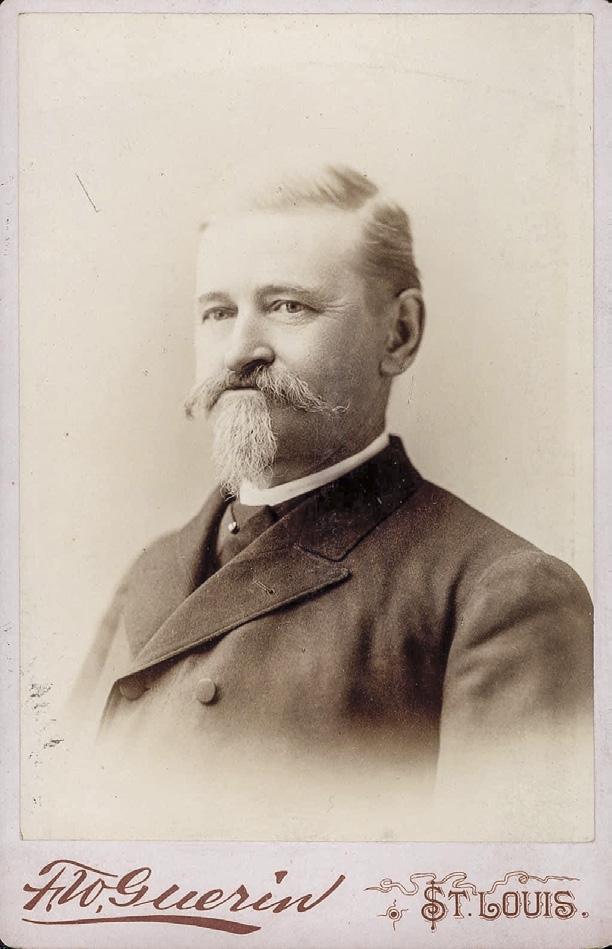
On April 26, 1865, Kappner and soldiers stationed at Fort Pickering assisted in the rescue of the Sultana’s passengers. The following April, Kappner was honorably mustered out. After the war, he was employed as a cashier for the German Savings Bank, served as the city treasurer for St. Joseph, Mo., and worked for Joseph Pulitzer as the business manager of the St. Louis Post-Dispatch. On October 20, 1891, Kappner died at his home and his remains were cremated. His ashes were interred at Mount Mora Cemetery in St. Joseph, beside his wife and daughter.
ECW Multimedia
On the Emerging Civil War Podcast:
We spoke with Jill L. Newmark, author of “Without Concealment, Without Compromise: The Courageous Lives of Black Civil War Surgeons.”

We held a roundtable discussion with historians Frank Varney, Nick Sacco, and Dave Powell about Ulysses S. Grant’s memoirs and memory, based on Frank’s book “Ulysses S. Grant and the Verdict of History.”
In March 2021, Meg shared with ECW readers that she had been diagnosed with lymphoma. After an initial rough spell, she bounced back. “You don’t beat lymphoma,” she told me. “You live with it, and you try to manage it.” Unfortunately, her cancer made an aggressive comeback this summer, catching all of us by surprise. She died on Thursday, July 27, 2023.
Meg was the crazy aunt who comes to Thanksgiving dinner whom no one knows what to do with—with her purple hair, her multitude of cats, and her unquenchable tendency to find good-natured humor all sorts of random stuff. She had an unparalleled generosity of spirit.

Meg served as a constant voice of support for women’s voices, not just at ECW but in Civil War public history in general. She loved to buoy people up. She loved Elmer Ellsworth. She loved baseball, books, and cats. She adored her husband, Robert
Groeling, whom survives. During her time at ECW, Meg wrote more than 500 blog posts, including many book reviews. Her most-read post, “War Chicken,” about Robert E. Lee’s pet chicken during the Gettysburg campaign, remains one of ECW’s most-popular posts of all time. She’s the author of the Emerging Civil War Series book The Aftermath of Battle: The Burial of the Civil War Dead (Savas Beatie, 2015) and First Fallen: The Life of Elmer Ellsworth, The North’s First Civil War Hero (Savas Beatie, 2021). She also contributed book reviews to Civil War News.

The Emerging Civil War Podcast is available through Spotify, Apple Podcasts, and wherever fine podcasts are available. You can also subscribe to our podcast through Patreon (https://www.patreon.com/ emergingcivilwar), where we are now also offering exclusive bonus content for subscribers. For as low as $1.99/month, you can help support ECW. Proceeds go toward defraying the production costs of the podcast.
On the ECW YouTube page: Chris Mackowski discussed the ups and downs of using Confederate Veteran and the Southern Historical Society Papers as sources.

We visited Monocacy on the anniversary of the battle and talked about the battle’s domino effect.
Kevin Pawlak visited the grave of seminal Antietam historian Ezra Carman. He also visited the grave of James Tanner, the disabled Civil War vet who took the first testimony of Lincoln’s
33 September 2023 33 September 2023
CivilWarNews.com CivilWarNews.com
Ignatz Kappner began the Civil War as a private in the 7th New York Militia before heading to Missouri.
Jill Newmark delved into the efforts of a small handful of Black surgeons who helped the Union war effort.
Meg Groeling.
48 E. Patrick St., Frederick, MD. 301-695-1864 / civilwarmed.org Divided by Conflict. United by Compassion.
Meg’s “War Chicken.”
Redeeming Grant’s Reputation
Grant at 200: Reconsidering the Life and Legacy of Ulysses S. Grant. Edited by Chris Mackowski and Frank J. Scaturro. Photos, notes, index, 288 pp., 2023. Savas Beatie, www.savasbeatie.com. $32.95.

Reviewed by Jonathan A. Noyalas
Civil War News book reviews provide our readers with timely analysis of the latest and most significant Civil War research and scholarship. Contact email: BookReviews@CivilWarNews.com.

Boredom, disease and terror in Lincoln’s Army
Toss of A Coin: The Life of a Private in the Civil War. By W. Alan Sprague. Illustrated, self-published, 2022, 219 pp. softcover.
Reviewed by Wayne Wolf
W. Alan Sprague uses the actual letters of his brother’s great, great grandfather, William Arnold Fuller of Co. E, 114th New York Infantry to fashion a novel, part fact, part fiction, to tell the story of a typical private in the Civil War. William Arnold Fuller’s letters home provide the recanting of his adventures from enlistment in Greene, New York, to his death at Cedar Creek during the last battle his regiment fought.
This story also includes Fuller’s comrades, most notable Sergeant Johnson, Smith and Lee, Frank and Hudson Skillman, Daniel Tremain, Jack Chidester, and Calvin Well. Their thoughts, conversations, doubts, fears, illnesses, and travails allow the author to tell these stories as human beings simply wondering, “What have we got ourselves into?”
The majority of this book deals with the campaign of the 114th New York in Louisiana after arriving from a tortuous sea trip from Baltimore to Fortress Monroe and then to the Mississippi. Accommodations on their journey to the Louisiana swamps was a tale of crowded, filthy, disease-ridden, and cramped surroundings which made Arnold question the regard the government felt for soldiers who volunteered to save the Union.
Upon arriving at Bayou Teche and Camp Mansfield, the next months were spent guarding the New Orleans, Opelousas, and Great Western Railroad and moving camp constantly to consolidate forces or get out of
the path of advancing Rebels. The camps were swampy stretches of bottom land that bred hordes of mosquitos, contaminated water, snakes, and rotten rations. Here the 114th fought its first battle near Fort Bisland; here comrades died, hospital horrors were forever etched in the soldier’s minds, and Arnold received his first head wound. After a failed expedition to Sabine Pass, the 114th helped build Bailey’s Dam to assist Admiral Porter’s flotilla and participated in Gen. Nathaniel Banks Red River Campaign.
After the fall of Vicksburg and Port Hudson, the 114th was recalled to the Shenandoah Valley and Winchester where, at the Battle of Cedar Creek, Arnold was killed on October 19, 1864. Of the 1,000 men who first enlisted, only 120 mustered out in 1865. Arnold’s story could have been written for any of the farmers turned soldiers who did not survive.
This book is well written and does a commendable job of bringing the foot soldier’s trials and tribulations to the reader. It seldom disappoints the reader for its truthful rendition of the horrors of the Civil War and the human tragedy that this conflict brought to families and friends.
It is recommended for historians interested in the life of the common soldier.
Dr. Wayne L. Wolf is Professor Emeritus at South Suburban College, past president of the Lincoln-Davis Civil War Roundtable and the author of numerous books and articles including They Saw The Bear Dance, None Showed The White Feather, Homeguard, Hotheads and Heroes of the Civil War, and Surgeons, Sharpshooters, and Skirmishers of the Civil War. He is a frequent lecturer on the life of the Civil War soldier.
surveys what historians have argued were the turning points in Grant’s career as general. While others have offered such notable engagements as Belmont, Shiloh, and Vicksburg as critical moments in Grant’s career Mackowski forcefully argues that if historians must choose one event as the turning point in Grant’s Civil War career, the Battle of the Wilderness and his decision to push the Army of Northern Virginia afterwards should rank as the supreme turning point.
Three authors, Charles Calhoun, Alvin S. Felzenberg, and Ryan Semmes investigate aspects of Grant’s political life. Calhoun contends, as have other historians, Grant was not “a natural politician,” but this trio of essays reveals Grant’s deep commitment to civil service reform, civil rights, equality, and expanding the United States’ global reach while maintaining “a peaceful coexistence in Europe.”
disdain for how they treated his wife Julia offers much insight into the difficult family dynamics Grant confronted and how he navigated them successfully.
Among the most intriguing essays in this outstanding anthology is Ben Kemp’s contribution about the Grant Cottage, the place where Grant spent his final weeks and died. Kemp, currently the operations manager at the site, offers a poignant meditation about Grant’s humanity and the power of place. While some might view the site as rather macabre with its beeswax encrusted floral arrangements from Grant’s funeral on public display, Kemp rightfully contends that while the “objects, settings, and stories there can bring people closer to the past” the place and objects, coupled with a full understanding of Grant’s generosity, can “renew one’s faith in humanity.”
Upon learning of the death of Ulysses S. Grant in 1885, the mayor of Boston, Massachusetts, Hugh O’Brien, believed Grant deserved eternal praise from the nation for all he did in leading Union forces to victory, restoring the Republic, and enacting measures to safeguard civil rights. “No citizen… has stood so prominently before the public as General Grant, or has rendered more distinguished services to his country,” Mayor O’Brien noted. While indeed worthy of many plaudits Grant’s reputation plummeted in the decades following his passing, his image cast into that of a butcher or corrupt president. Fortunately, in recent decades historians have begun to reevaluate Grant’s life and legacy and contend, and I believe rightfully correctly so, that Grant deserves a place among the pantheon of the nation’s great figures. This collection of fifteen essays, penned by some of the leading experts on Grant, further bolsters that contention.
Some essays in this thoughtfully conceived volume aim to offer fresh perspectives about Grant’s military life. For instance, historian Timothy B. Smith convincingly argues that Grant’s ability to address situations on campaign and on the battlefield came not from a deep understanding of military philosophy but developed as a result of Grant’s “experience and common sense.” Smith quips that Grant was “Clausewitzian when Clausewitz was not cool.” Chris Mackowski cogently
Additionally, some contributions to this volume explore aspects of Grant’s memory. Frank Scaturro investigates the rise, fall, and reascendancy of Grant’s image and forcefully argues that Grant unquestionably “belongs in America’s pantheon of great presidents.” Historian Gary Gallagher offers a thoughtful reflection about the various shifts in Grant historiography and ponders whether recent efforts by historians to redeem Grant’s reputation will truly “affect popular conceptions of the American past.”
While this book’s essays offer much insight into Grant’s generalship, two-terms in the White House, and legacy, this anthology also explores the development of Grant’s character and personal relationships. Ronald C. White, author of the acclaimed American Ulysses, offers an engaging analysis of the important role Methodism played in shaping Grant. White convincingly shows how Grant’s religious beliefs instilled in him values that guided him in all he did. Nick Sacco’s investigation into the relationship between Grant and his in-laws and Grant’s
Other essays exploring Grant’s career at West Point, the general’s humanity at Appomattox, impersonating Grant at living history events, and reflections on the Grant family by Ulysses Grant Dietz, Grant’s youngest surviving great-great-grandchild, further enhance this noteworthy anthology.
This thoughtfully conceived collection of fifteen essays is outstanding. While this exceptional volume will appeal to those interested in Grant and offer a nice complement to the burgeoning literature that is redeeming Grant’s reputation, this splendid collection possesses much value for those interested in the power and necessity of revising history.
Jonathan A. Noyalas is director of Shenandoah University’s McCormick Civil War Institute in Winchester, Virginia, a professor in Civil War Era Studies at Shenandoah University, and founding editor of Journal of the Shenandoah Valley During the Civil War Era. He is the author or editor of fifteen books including most recently Slavery and Freedom in the Shenandoah Valley during the Civil War Era, published by the University Press of Florida.
34 CivilWarNews.com September 2023 34 September 2023 CivilWarNews.com
Publishers: Send your book(s) for review to: Civil War News 2800 Scenic Dr, Suite 4 PMB 304 Blue Ridge, GA 30513
The Generals’ Civil War: What Their Memoirs Can Teach Us Today. Stephen Cushman. Full notes serving also as bibliography, index, 230 pp., Chapel Hill, University of North Carolina Press. https://uncpress. org. $24.95, Paperback; $95, Hardcover; E-Book, $19.99.
 Reviewed by Salvatore
Reviewed by Salvatore
Cilella
Memoirs: History or Literature?
and imagination. Under those groupings fell the disciplines of History, Philosophy, and Art. It wasn’t until a hundred years later that the Library of Congress broke with Jefferson’s template and introduced the concept of “general literary studies.” Neatly fitting into this new classification was Mark Twain’s declaration that Grant’s Memoirs was “a great work of literature.” This presents a problem. What is memoir? If it is literature, is it true? If it is history, how much is memory and how much is imagination? Cushman maintains that in the nineteenth century, “European romanticism migrated to the New World, bringing with it transformative ideas about the power of individual imagination.”
(p. 11)
of recent and ancient military history and extensive background in literature prompted comrade Jubal Early to remark in his review of Destruction: “Whoever undertakes to read it had better have an unabridged dictionary and an encyclopedia of biography at hand.” (p. 63)
toward reuniting the two sections of the country. Powerful memory or imagination?
Ever since David Blight introduced us to the power of memory and its quixotic journey, new scholarship has not only been prodigious but most helpful to understanding America’s great tragedy. The exploration and meaning of memory has occupied such recent authors as Stephen Cushman in his new book, The Generals’ Civil War: What Their Memoirs Can Teach Us Today
It’s a spare volume, only 174 pages of text; but Cushman, in this intriguing and painstakingly researched book, deconstructs the memoirs of Generals Joseph Johnston, William Sherman, U. S. Grant, Richard Taylor, George McClellan, and Philip Sheridan. He faces, head on, the nature of the memoir and its place in historical writing, particularly in the American Civil War canon. Cushman’s line of reasoning runs as follows. Thomas Jefferson divided his famous library into three categories: memory, reason,
It was in this moment in America, 20 to 30 years after the most unimaginable and tragic events of 1861-1865, that the “principles” of the battlefield introduced their “first person narratives” to thrill readers longing to hear “the true story.” Cushman argues that this was a new “undertaking.” The totality of the war was incomprehensible. A first-person narrative of someone who “was there,” took the impersonal to the personal. For the person who had never experienced the horrors or tedium of war, the narrative made it as comprehensive as possible. Perhaps the most romantic of the lot was Richard Taylor, lieutenant general in the Confederate army and the son of president Zachery Taylor. His Destruction and Reconstruction: Personal Experiences of the Late War was published in 1879 shortly before his death at age fifty-three. It was the chivalric, “Sir Walter Scott” versions of Jackson’s Valley Campaign in 1862 and the disastrous 1864 rape of the Valley that Taylor attempted to recreate for his readers. His incredible depth
Civil War Artillery Book

392 page, full-color book, Civil War Artillery Projectiles – The Half Shell Book. For more information and how to order visit the website www. ArtillerymanMagazine.com or call 800-777-1862.

$89.95 + $10 media mail for the standard edition.
September 2023
In stark contrast stood U.S. Grant’s monumental Memoirs. Cushman’s title for the chapter on Grant says it all: “Ulysses S. Grant and the Achievement of Simplicity.” The story of Grant’s writing and publication involving Samuel Clemens, the terminal cancer providing him a non-negotiable deadline, his completion of the manuscript just days before his death, the popularity of the two-volume epic, and its place not only in history, but literature are factors well known to the historical community. Mark Twain thought it great literature; William Dean Howell’s said so too: “I think he is one of the most natural—that is the best—writers I have ever read. The book merits its enormous success, simply as literature.” (p. 66). Grant’s style wasn’t always so simple and succinct. Cushman attributes his spare, clear, and cogent style to writing telegraphs during the war and emulating his commander in chief in his ability to reduce issues with concise language. For Cushman, Grant evokes Ernest Hemingway as well as Twain himself. For all his simplicity, Cushman faults him for not mentioning his drinking or for his terse description of the Federal disaster at Cold Harbor. Could Grant’s omissions be a case of memory loss or the imposition of imagination?
Cushman drills down on the intersection of memory and imagination in his deconstruction of the Joe Johnston and Sherman memoirs. Instead of giving each man his own chapter, the author focuses on the dueling and sometimes complimentary memoirs of the two. He cites two apparently minor incidents as examples of faulty memory and the intrusion of imagination. The first involves Sherman telling Johnston at Bentonville that Lincoln had been assassinated. Sherman wrote of Johnston’s melodramatic response which the latter denied. The second revolves around Johnston’s attendance at Sherman’s funeral, weeks before he succumbed, and his famous refusal to don his hat and proclaim that Sherman would do the same for him. Not true, but a fiction and the establishment of a myth that would be another step
Finishing out the “Shoulder Strap” series of memoirs, Phil Sheridan, hoping to achieve at least the book sales Sherman reached, failed. McClellan wrote only half of what was eventually published. He died three months after Grant and his “McClellan’s Own Story,” was published in 1886 with a publication date of 1887. Editor William Cowper Prime finished it at a monumental 700 pages and it turned a profit for publisher Charles L. Webster & Co.
Cushman concludes his dissection of late 19th century memoirs properly giving Mark Twain his due: “Without Mark Twain, the Civil War memory market would not have developed as it did, and without the Civil War there would never been a Mark Twain.” (p.161). After Cushman, re-reading the memoirs of Civil War generals
should offer new perspectives on our understanding of the war. As the author concedes, it doesn’t matter if you call them history or literature, not having them would hinder our understanding of our past. “Memory that forgets or omits historical events, “he writes, “either willfully or out of ignorance, is memory that changes or reshapes history.” (p. 165)
Salvatore Cilella is the retired CEO of the Atlanta History Center. Between 2001 and 2006 he served as President and CEO of the Indiana Historical Society. He is the author of Upton’s Regulars, A History of the 121st New York Volunteers in the Civil War, University of Kansas Press, 2009; editor of The Selected Correspondence of General Emory Upton, 2017, University of Tennessee Press, and Till Death Do us Part, The Letters of Emory and Emily Upton, 1868–1870, University of Oklahoma Press, 2020.
The Truth about the Battle of South Mountain
All other authors who have written about Confederate BG John Bell Hood misplaced his location by approximately one half-mile.

This book went to #1 in three Amazon New Releases categories. “This is a must-read for anyone interested in one of the Civil War’s pivotal campaigns.” – Scott L. Mingus Sr., coauthor of Unceasing Fury
“Curtis Older’s research on the Battle of South Mountain re-examines and reinterprets the Maryland campaign, finally quelling all further discussion on why Lee lost his first major battle action. Highly recommended.” – ARGunners.com
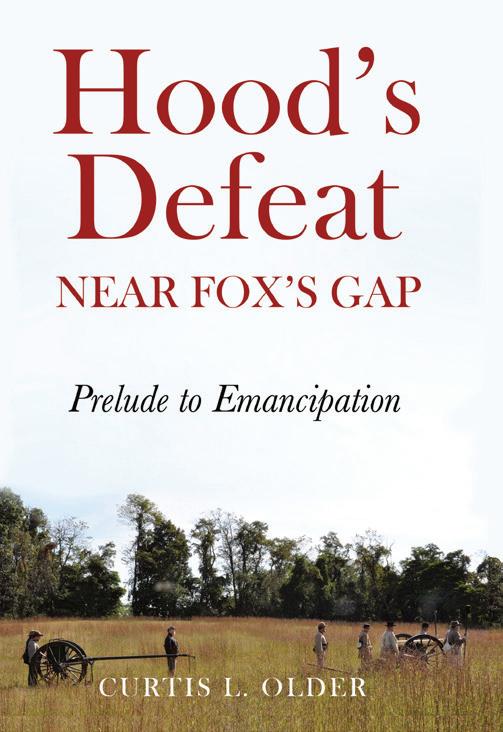
35
35
September 2023
CivilWarNews.com
CivilWarNews.com
as an Audible Audiobook, ebook and hardcover on Amazon
Available
General Johnston – A Controversial General
The Civil Wars of General Joseph E. Johnston, Confederate States Army: Volume I: Virginia and Mississippi, 1861–1863.
By Richard M. McMurry. Illustrations, notes, index. Savas Beatie, www.savasbeatie. com. 334 pp., hardbound, 2023, $34.95.
Comprehensive reference book on Artillery of Antietam
stain on his honor and reputation. Nothing seemed to matter more to Johnston than these personal attributes, apparently even more than the Southern cause. Matters between the two men only worsened and adversely affected the Confederate war effort.
Johnston was seriously wounded during the Battle of Seven Pines or Fair Oaks on May 31, 1862. Lee succeeded him temporarily in command of the soon designated Army of Northern Virginia. When Johnston returned to duty months later, Davis assigned him overall command between the Appalachian Mountains and the Mississippi River. For Davis and Johnston, this ill-defined command structure resulted in more disputes between them.
Artillery of Antietam: The Union and Confederate Batteries at the Battle of Antietam. By James A. Rosebrock. Published by Antietam Institute, https:// antietaminstitute.org, 442 pages, 2023, hardbound. $44.95.

Reviewed by Peter A. Frandsen
reserve artillery battalions, two other divisions without artillery battalions, and Evans’ Brigade artillery. At Antietam there was a total of some 116 batteries (57 Federal and 59 Confederate); these are covered in detail.
depict artillery units movements over battlefields, in some cases hourly segments. One feature is a range gauge at a map’s bottom that can be used to approximate the unit’s fields of fire. There are no other illustrations.
According to the author, Dr. Richard M. McMurry, Joseph E. Johnston was “the central military figure in the history of the Southern Confederacy” (p. xiii). The author’s judgment in this and other matters is both thoughtprovoking and debatable.
Dr. McMurry has been decades studying Johnston, one of the Civil War’s most controversial generals. In this first of two volumes, Dr. McMurry examines the relationships between whom he calls “Jeff, Bob, and Joe,” Jefferson Davis, Robert E. Lee, and Johnston. Most of the author’s focus is upon the difficult and critical relationship between Davis and Johnston, a pair of inordinately proud and sensitive men.
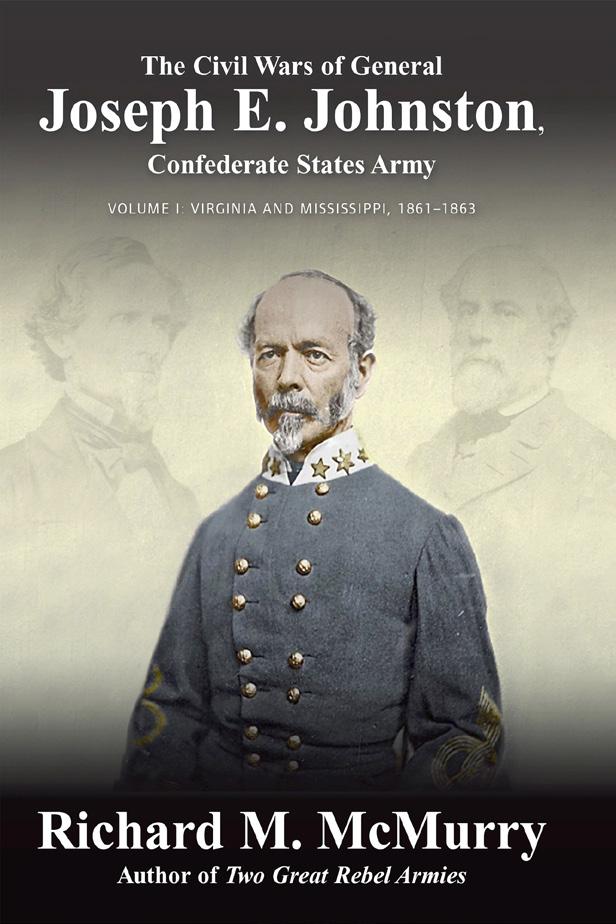
The genesis of the dispute and increasing bitterness between the president and a senior general occurred in the fall of 1861. Davis placed Johnston fourth on a list of officers to be assigned the rank of a full general. Johnston protested at once, arguing that he outranked all of them in the antebellum army as its Quartermaster General while the other officers were colonels. Davis maintained, however, that the colonels with a line rank were senior to Johnston with his staff rank. As a line officer, the Virginian held the rank of lieutenant colonel.
Johnston never forgave the Confederate president for this
McMurry’s description of the deteriorating relationship between Davis and Johnston is richly detailed, forthrightly argued, and based on compelling evidence. The flaws in each man deepened the festering wound between them and undoubtedly contributed to the July 1863 losses of Vicksburg and Port Hudson. The author’s examination of this period forms a central and significant section of the book. He criticizes all the key figures involved for failing to maintain Confederate control of a key portion of the Mississippi River and to prevent Union capture of the two towns.
The author’s assessment of the Davis-Johnston feud and its impact on Confederate fortunes will assuredly stir debate. He argues, for instance, that the May 16, 1863, engagement at Champion Hill east of Vicksburg, was the “most important battle of the war” (p. 246). While he does not elaborate, he must believe the Confederate defeat sealed Vicksburg’s fate. Among Davis, Johnston, and Lee, only the latter maintains his reputation in Civil War historiography.
This initial volume is arranged in two books, as the author delineates the narrative. The book follows a chronological order but is basically a series of essays. While Dr. McMurry’s conclusions will garner responses, they are learned and judicious. His book merits attention by historians and students of the four-year conflict.
Jeffry D. Wert is the author of the award winning book, The Heart of Hell: The Soldiers’ Struggle for Spotsylvania’s Bloody Angle.
The early American Civil War battles showed the severe deficiencies of an antiquated and diluted “democratic” field artillery organization. The Army of Northern Virginia began to organize and concentrate its limited artillery resources starting in 1862; The Army of the Potomac took longer to appreciate the faults and took more time to reorganize and move command and control upwards. The battle of Antietam in September 1862 is the first major battle where command of American artillery began to be seriously centralized at higher tactical levels since the 1781 Siege of Yorktown. Firepower effectiveness correspondingly increased. Although still evolving, that centralization could be recognized today as emulating modern practices however imperfect and uneven.
This comprehensive referencetype book covers all combat units that owned or controlled artillery participating in the first Maryland campaign, and includes not only Antietam proper, but also the related battle of South Mountain and the short siege of Harpers Ferry. Eighteen chapters cover Federal artillery units: fourteen infantry and one cavalry divisional artillery, the artillery reserve, XII Corps artillery, and the Federal artillery at Harpers Ferry. Seventeen chapters cover Confederate artillery units: seven infantry and one cavalry divisional artillery battalions, six
The focus here is on each artillery unit or controlling parent as part of a whole. It does not have a separate general narrative chapter of the campaign as none is needed or wanted here as there are many other books and articles that can be consulted for general information. Nonetheless, the story of each unit is well placed in both the context of the whole campaign and in specific engagements. The twenty-four Federal and twenty Confederate chapters are devoted to one particular unit. Because of the encyclopedic nature of this reference work, the reader will probably consult it on a unitby-unit basis rather than read it from cover to cover as general history. Each chapter is complete standing alone so there is some redundancy in the text.
The information about each unit is presented in a standardized, orderly, and consistent format throughout, permitting the reader to better locate and assimilate the massive amount of information presented. The format, whether corps, division, brigade, battalion (reflecting the higher control of artillery) or battery, is as follows: introduction, which has officer names and armament of the unit; a short background containing pertinent or interesting facts about the unit’s history and events leading up to the engagement(s); the unit as a part of the overall Maryland campaign; unit details as a specific part of the campaign whether it be Harpers Ferry, South Mountain, or Antietam proper, or some combination; and finally, a conclusion about the outcome or evaluation of the unit.
The detailed endnotes, are at the end of each chapter, which in this case certainly sets some sort of record for any artillery history book. Adding up the number of endnotes comes to 33 general, 789 Federal, and 667 Confederate for a grand total of 1,489 endnotes. All those sources are organized again in the thirteen-page bibliography using small typeface. The many sources drawn upon encompass primary, official, archival, and published material.
Graphically, there are 28 full page-sized detailed engagement maps by Aaron Holley. They
A full appendix of statistical summaries includes, among other things, the complete text of General Hunt’s prescient order of Sept. 12, 1862, issued just five days before the main battle along Antietam Creek, laying out in depth the tactical employment of field artillery in combat. This seminal order demonstrates unity of command and control and purpose for artillery and is something of a first for American artillery. Up to that time tactical doctrine dissemination was mostly limited to the school, or drill, of the piece.
The first book devoted to artillery at Antietam was Curt Johnson and Richard Anderson 1995 Artillery Hell. That book’s title is aptly taken from the personal observation of Confederate artillery officer S.D. Lee. The heart of that good book was built around the report written in 1940 by Joseph Mills Hanson of the National Park Service to develop the Antietam National Battlefield Site for visitors. The focus was the locating units on the field and the often mixed types of armament used by a single element. The older book is well quoted in this new book and so still stands today.
The author has been a volunteer and Battlefield Guide at Antietam for some 15 years. He currently works with Antietam’s artillery detachment, Battery B, 4th U.S. Artillery. He has put all that service to good use here. The amount of research, organizing, and writing that went into this work is amazing. It hardly needs to be said that this book is essential to any study of the first Maryland invasion and absolutely required for any study of Civil War-era artillery. The modern artillery reenactor will need this book for the history of his battery. The contents of the older Artillery Hell are sufficiently dissimilar so that both should be acquired for study.
Special thanks to the Antietam Institute, Sharpsburg, Md., for assistance with this review.
36 CivilWarNews.com September 2023 36 September 2023 CivilWarNews.com
Reviewed by Jeffry Wert
Peter A. Frandsen is the book reviewer for The Artilleryman magazine for over 20 years.
Confederate “Tories”
True Blue: White Unionists in the Deep South during the Civil War and Reconstruction (Conflicting Worlds: New Dimensions of the American Civil War). By Clayton J. Butler. Bibliography, notes, index, photographs, map, 248 pp., 2022. Louisiana State University Press, https://lsupress. org, hardback. $45.
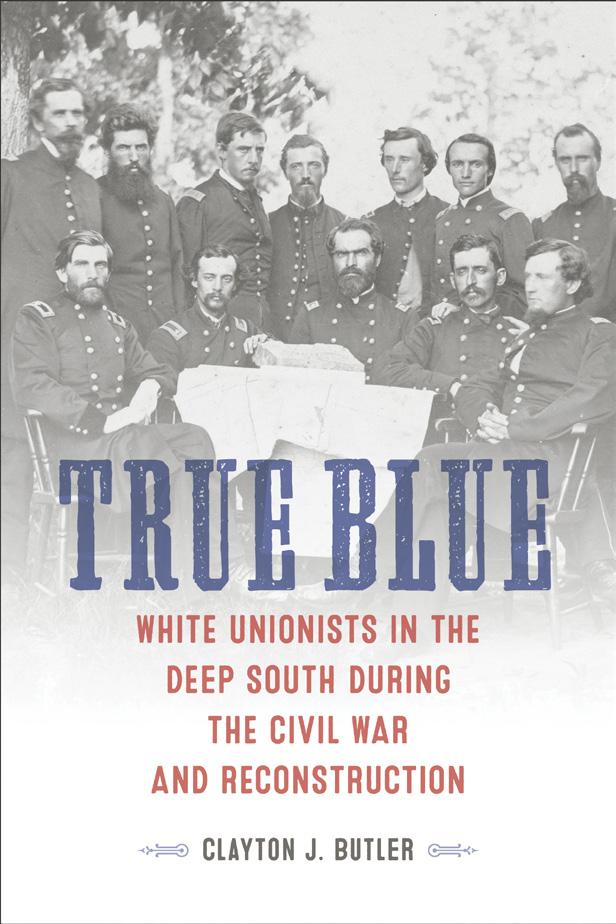 Reviewed
Reviewed
by
Salvatore Cilella
the transition members of each “Tory” regiment fared during the war and their fates after the war. Although Confederate Tories were a minority, the story of those in the Deep South has never been told or appreciated as well.
It undoubtedly all started with Jubal Early and his founding of the “Lost Cause” myth. It was moved along seamlessly by the Daughters of the Confederacy, and probably culminated in the Civil War Centennial “Celebration”/ “Commemoration” in 1961–1965. I write of the notion of two, principled, monolithic armies, “Billy Yank” and “Johnny Reb” (ably aided by Bell Irvin Wiley) facing off against each other in solidarity as brothers in arms. The Centennial only fueled the monolithic myth.
Thankfully, recent Civil War scholarship has persuasively pushed back against the grain and offered solid and nuanced insights into the realities of the conflict— north and south. In his new book, True Blue: White Unionists in the Deep South During the Civil War and Reconstruction, Clayton J. Butler has admirably exposed the myth of Southern solidarity. As the title indicates, Butler follows the Confederate Tories well into Reconstruction. The difference is that much more has been written about Unionism in the border states and the upper south. Butler takes on Unionism in the deep south. He devotes one chapter apiece to monitor the First Louisiana Cavalry, the First Alabama Cavalry, Bradford’s Battalion, and the Massacre at Fort Pillow (1864), and one each to Presidential reconstruction of 1865-67 and Congressional Reconstruction of 1867–1877. In a tightly constructed argument and narrative, Butler lays bare
The First Louisiana Cavalry was formed in 1861 of primarily foreign born or northern born immigrants to New Orleans. They were rejected as traitors to the Confederate government primarily because of their nonAmerican origins. Nearly 50% were foreign born, Cuba, Mexico, Spain, Portugal, Germany, France, and several other European countries were represented in the regiment. (p 42). Until the arrival of Benjamin Butler’s command, the regiment was hunted by Confederates spurred on by their government’s conscription act of 1862. To the men of the 1st Louisiana, staying with the Union made more sense than the alternative. They viewed the new government as illegitimate and in conflict with the constitution and Union.
The 1st Alabama however, was made up of white, native-born Alabamians when it was formed in late 1862. Confederate forces no longer had the rationale they were fighting against foreign born fighters but “neighbors.”
Confederate general Samuel Ferguson attacked the regiment under Colonel George Spencer and later remarked how strange it was; “In the very center of the Confederacy” were “men wearing the enemy’s uniform, killed—as some were—within a half mile of their own houses.” (67).
Although they were roundly beaten, the First Alabama Cavalry suffered much less than Major William Bradford’s 13th Tennessee cavalry or “Bradford’s Battalion” at Fort Pillow. Although the narrative of the Massacre at the fort has focused correctly on the slaughter of US Colored Troops, 277 of the 585 white Unionists were killed and 202 taken prisoner. (104) As the author points out, it is not his intention to minimize the losses of the USCT, but to balance the historical record. He attributes Nathan Bedford Forrest’s vicious assault on both troops to “perceived race betrayal.” (105)
What is most remarkable in Butler’s last two chapters is the documentation of the complete reversal of white Unionists in the Presidential Reconstruction and its follow-on, Congressional Reconstruction. Always in the minority, the “tory” regiments reveled in the Union victory, but
quickly succumbed to the “lost cause” onslaught, joining their defeated Confederate neighbors to win the peace for the South. From the start, white Unionists were first and foremost, for the Union. But racial animosity trumped loyalty as emancipation was not part of the original bargain. In the new president, Andrew Johnson, a white loyalist from Tennessee, they saw a chance to return to the old days, the status quo, antebellum. The feeling was mutual. The Lincoln administration, and later Johnson’s, viewed Southern Unionists as foundational to eventual reconciliation and reconstruction. It was not to be.
First Louisiana Cavalry’s founder James Madison Wells was a prime example of southern unionism’s tortured history. Wells owned 95 slaves and saw secession as a slippery slope to emancipation. After the war, Johnson installed him as Louisiana’s reconstruction governor. He survived two turbulent years until Military Governor of the Gulf District, Philip Sheridan removed him in 1867 for incompetence. (141) Locally, the social, economic, racial, and political realities pushed Unionists back into the “redemption” fold. As Butler so eloquently points out, “faced with a choice between freedmen and former rebels,” they “could either ally themselves to the revanchist regime, leave their homes, or resign themselves to silence and political impotence.” (129). Most capitulated to the reality on the ground.
This powerful book is a much-needed balance to our understanding of the nuances and intricacies of both regions of the country between 1861 and 1877. Butler has combined meticulous research, clear expository writing, and authoritative documentation to present a lucid explanation of a period in American History that demands more understanding.
Salvatore Cilella is the retired CEO of the Atlanta History Center. He is the author of Upton’s Regulars, (Univ. of Kansas Press, 2009). He has edited The Selected Correspondence of General Emory Upton, 2 Volumes. (Univ. of Tennessee Press, 2017).
A recipient of the 2019 Founder’s Award, American Civil War Museum. He has edited “Till Death do us Part,” the love letters of Emory and Emily Upton documenting their brief and tragic two-year marriage (Univ. of Oklahoma Press, 2020) and the Memoirs of Dewitt Clinton Beckwith, of Upton’s Regulars, (McFarland Publications, 2023).
The Unconventional Jeff Davis, Plus Others
The Civil War Political Tradition: The Portraits of Those Who Formed it. By Paul D. Escott, University of Virginia Press, www.upress.virginia.edu. 2023, paperback. $35.
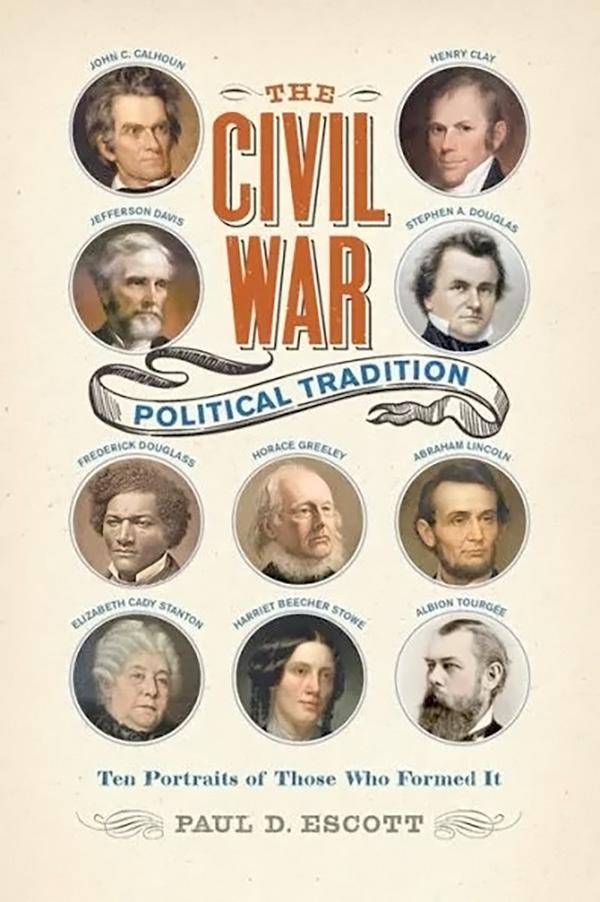
Reviewed by Stephen Davis
I can’t figure out why he chose to write on Albion Tourgee, the Reconstruction activist. Robert E. Lee or Ulysses S. Grant might have been a more understandable inclusion, even if a little over-familiar.
Throughout Escott’s narrative is its implicit understanding that slavery was a problem which America’s ablest political leaders could not solve. Henry Clay’s idea was to free the slaves and deport them to Africa; others, including Abraham Lincoln, agreed. The author’s disparagement of these advocates as “devoted to white supremacy and intent on ridding the nation of unwanted Black people” is not helpful.
Group biographies provide variety, invite curiosity as to the author’s choice of subjects and, when they hail from a specific historical era, serve as an interpretation of the times. Paul Escott’s collection of essays on ten famous Americans of the Civil War era does all this, and more.
Here they are: Henry Clay, John C. Calhoun, Harriet Beecher Stowe, Frederick Douglass, Stephen A. Douglas, Jefferson Davis, Abraham Lincoln, Horace Greeley, Albion Tourgee, and Elizabeth Cady Stanton.
Among the influential American statesmen of the prewar era were, of course, the Great Triumvirate: Calhoun, Clay, and Webster. Calhoun’s evolution from “fervent, committed nationalist” in the 1820s to fierce advocate of Southern rights forms one of Escott’s best chapters. Clay is hailed as a gifted compromiser, but (oddly) Webster is given no chapter. Instead, Escott focuses on Elizabeth Cady Stanton and Harriet Beecher Stowe. Female participation in a book like this is merited, but for the life of me
One reads a book like this for interesting takes on important figures. One of them is Escott’s view of Jefferson Davis, “a shockingly unconventional southern leader.” As Confederate president he built a strong government, but Escott’s conclusion that he “did more to encourage the sectional enmity and divisive stereotypes that have lasted to our present day” is deliberately provocative. In contrast is the author’s fawning view of Lincoln, including such assertions that he labored “for an outcome in the long-term that honored the ideals of the Declaration of Independence.” Moreover, Escott’s exaltation of Lincoln as working toward America “liberating itself from the evils of racism and white supremacy,” ignores the fact that racism was not even a word in the nineteenth century, and that “white supremacy” was so intimately ingrained in American culture that most citizens didn’t even talk about it. I just wish historians would remember the times of which they’re writing, their times, not ours.
Steve Davis, of Cumming, Georgia, has finished another book: The National Tribune Remembers the Atlanta Campaign. It’ll be published next year by Savas Beatie.
37 September 2023 37 September 2023 CivilWarNews.com CivilWarNews.com
Subscribe or Renew Online at CivilWarNews.com
Partnerships provide visitors to Civil War Trail sites with significant upgrades
Two of Strasburg’s Civil War Trails sites received significant upgrades late last month. The new stories dovetail with the Historic Downtown Walking Trail and two hikes associated with Signal Knob. The project will bring new travelers to Strasburg and encourage them to stay longer as they lace up to take a historic hike.

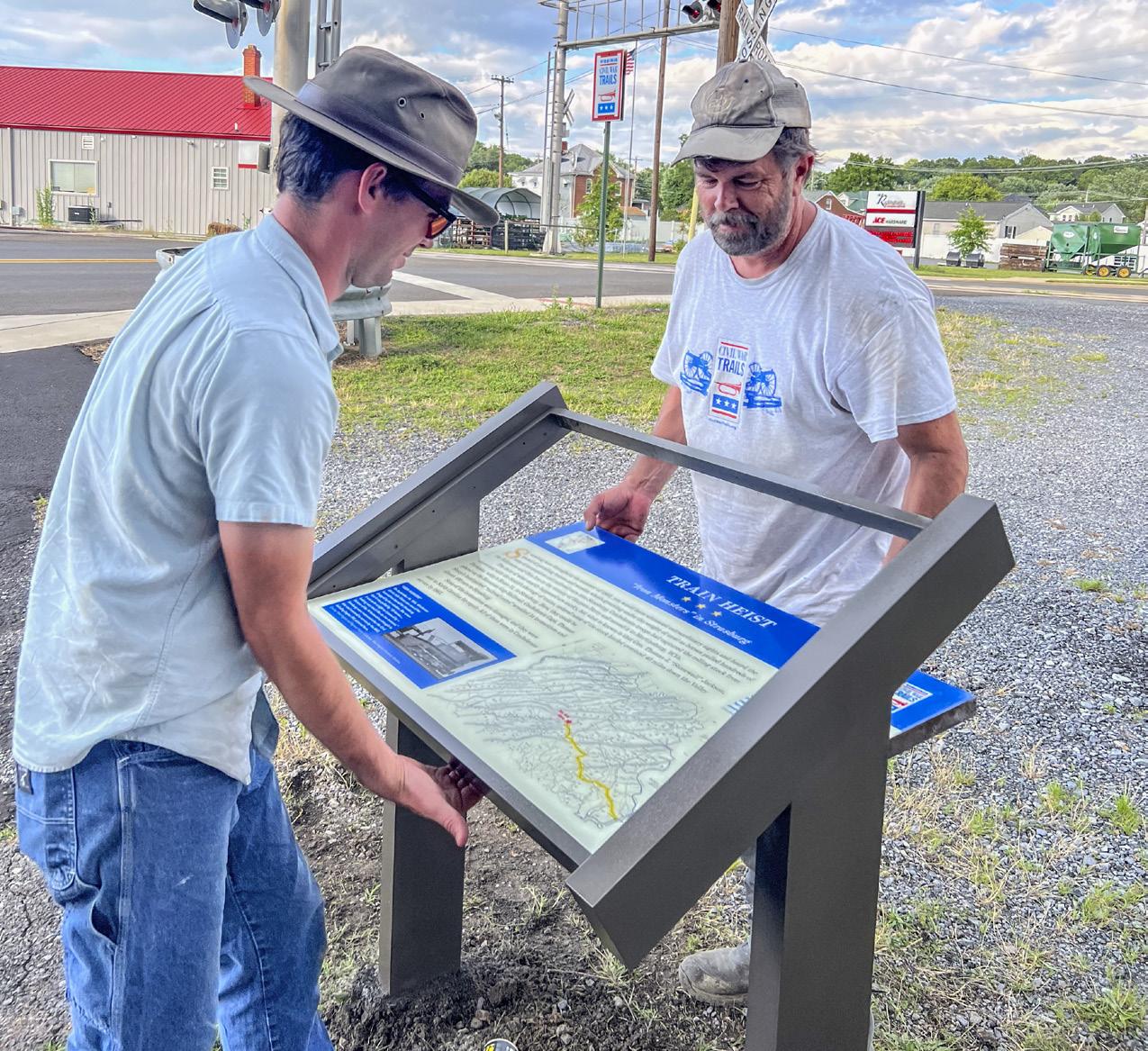
The project resulted from work between Shenandoah County Tourism and Economic Development, The Town of Strasburg, Shenandoah County

Library, and Virginia Civil War Trails, Inc. The two new signs are located at the Strasburg Museum at 440 E. King Street and the Strasburg Town Park at 295 Park Rd., off E. Queen Street. Olivia Hilton, Director of Strategic Initiatives for the Town of Strasburg, said, “These new installations enhance our storytelling, complement the Historic Downtown Walking Trail, and reflect our vibrant community! We invite you to come Discover the Different Sides of Strasburg!”
Each Civil War Trails site is networked with over 1,400 other sites across six states and is marketed internationally by state, regional, and municipal tourism offices. The signs, while
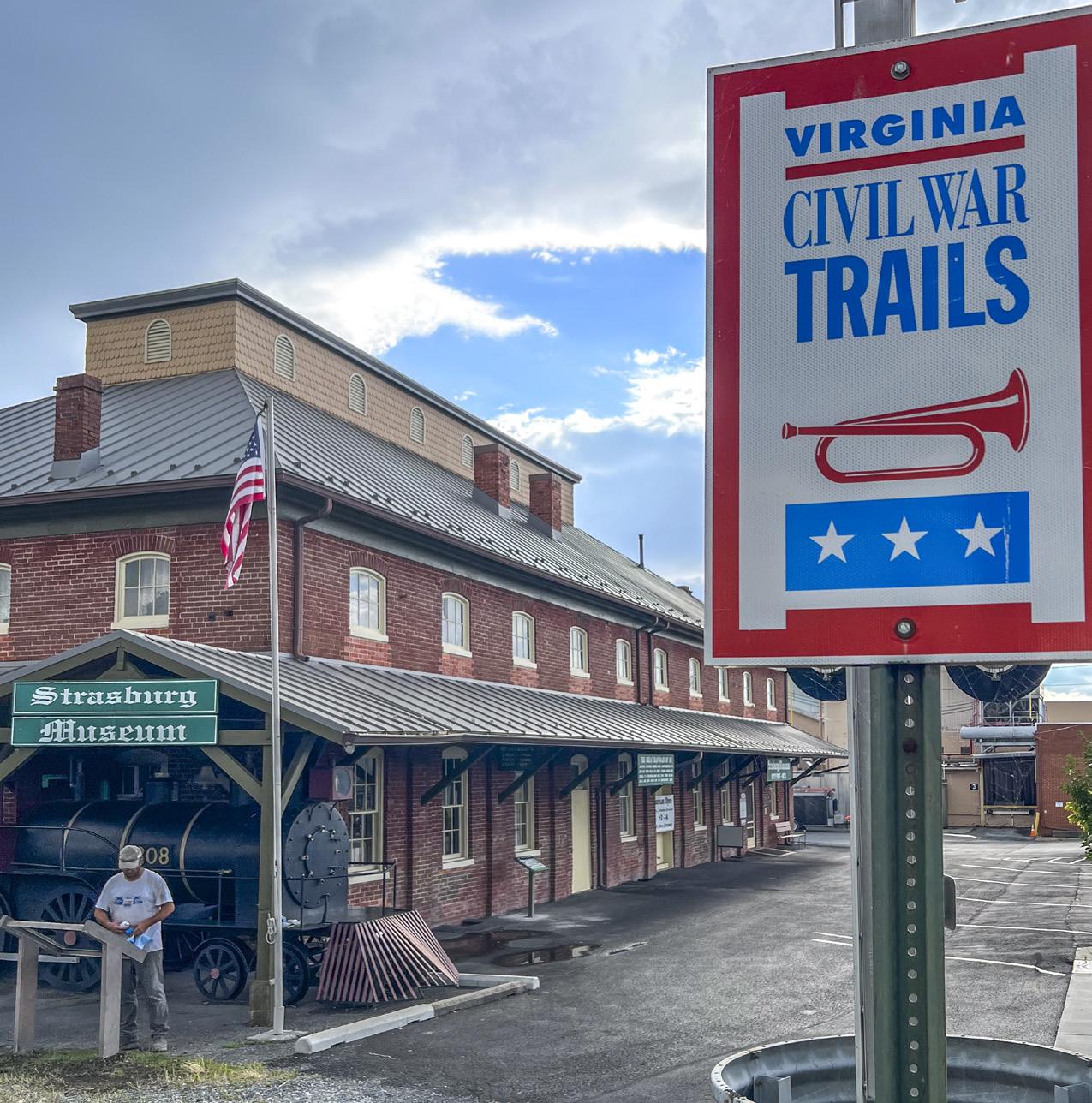


educational, are part of a much larger economic development mission. Brenda Black, Tourism Development Manager for Shenandoah County, said, “Tourists who visit Civil War trail markers are likely to spend money on various goods and services in the local area. They may stay in hotels, dine at local restaurants, shop at local stores, and use other tourism-related services. This increased spending can positively impact local businesses and the overall economy.”
The Strasburg Museum is the first stop along the Historic Downtown Walking Trail. The 1.6-mile-long trail winds through the beautiful town as one explores each of the ten sites. An excellent resource for families or older travelers, one will get a slice of local history alongside great restaurants, shops, and more. For more off-road yet leisurely strolls, the new Civil War Trails site at Strasburg Park is located along the Riverwalk trail. This crushed gravel path follows the North Fork of the Shenandoah River for approximately one mile.
For the more adventurous, the new Signal Knob Civil War Trails sign offers directions to the Signal Knob trailhead. This 10.5-mile loop is strenuous but offers unparalleled views of the Shenandoah Valley as one stands in the footsteps of Civil War soldiers who used the same vantage point to spy on the opposing army. So, lace up your boots, and bring your most adventurous travel partner to explore these historic hikes. For more information about visiting Strasburg or taking a historic hike, contact the Strasburg Visitor Center at 540-465-5884. While visiting, snap a #signselfie with the two new #civilwartrails signs. For more information, VisitShenandoahCounty.com.
38 CivilWarNews.com September 2023 38 September 2023 CivilWarNews.com 19th CENTURY LIVING HISTORY! James Country MERCANTILE 111 N. Main Liberty, MO 64068 816-781-9473 • FAX 816-781-1470 www.jamescountry.com Ladies – Gentlemen Civilian – Military • Books • Buttons • Fabrics • Music • Patterns • Weapons Mens, Ladies and Children’s • Civilian Clothing • Military Clothing • Military Accessories • Accoutrements Everything needed by the Living Historian! Our Clothing is 100% American Made! The home of HOMESPUN PATTERNS©
Jason Shaffer, Operations Manager for Civil War Trails installs the confirmatory directional sign for the new Signal Knob stop in Strasburg Municipal Park.
The Strasburg Museum is located 440 E. King Street and is the location of the second new Civil War Trails sign in town, and also the start of their downtown walking trail.
Chris Brown (left), Assistant Director of Civil War Trails and Jason Shaffer lift the new sign at the Museum into place.
Jason Shaffer squares up the new sign for Signal Knob which not only tells the story of the strategic location but helps visitors navigate to the trailhead which will put them in the footsteps of Union and Confederate observers. All photos courtesy of Civil War Trails, Inc.
Sept. 16, Virginia. Walking Tour
Shenandoah University’s McCormick Civil War Institute in partnership with the Fort Collier Civil War Center will offer a tour with Prof. Jonathan A. Noyalas, The Scene as I Remember It”: Reflections on Experiences at Fort Collier during the Civil War, in observance of the 159th anniversary of the Third Battle of Winchester. The tour, which will begin at 9:30 a.m. and last approximately seventy-five minutes, will take place at Fort Collier, 922 Martinsburg Pike, Winchester, Virginia. Event is free and open to the public. No pre-registration required. Questions: jnoyalas01@su.edu or 540665-4501.
Sept. 23, Illinois. Civil War & Military Extravaganza
Zurko Promotions presents The National Civil War Collectors Fall Show and Sale which will be held at the DuPage County Fairgrounds, 2015 W. Manchester, Wheaton, Ill. Hours: 9 a.m. to 4 p.m. Admission is $10, Early Admission $25. Free parking. For more information visit www. chicagocivilwarshow.com or call Zurko Promotions at 715-526-9769.
Oct. 6-8, Virginia, Annual Conference
Central Virginia Battlefields Trust hosts its 2023 annual conference, “1863: Chancellorsville-The Crossroads of Fire.” This year’s conference features a Friday tour of Moss Neck, Gen. “Stonewall” Jackson’s 1862-63 winter headquarters with historian Frank O’Reilly. That evening the President’s Reception will be at the Sentry Box, one of Fredericksburg’s most historic homes. Saturday features a tour of the Chancellorsville battlefield with historians Chris Mackowski and Kris White. Saturday evening includes a banquet and the annual meeting with a keynote address by Kris White at historic Belmont in Falmouth. Sunday brunch at Stevenson’s Ridge includes a panel discussion about “Chancellorsville as the Prelude to Gettysburg” with historians Sarah Kay Bierle, John Hennessey, Robert Lee Hodge, Scott Walker, and others. The weekend registration is $260 per person. More information and online registration are available at: https://www.cvbt.org/ cvbt-annual-conference.
Oct. 6-8, Virginia. Period Firearms Competition
action’ and buried at Laurel Hill Cemetery will follow. sponsored by: The Legion Post 405; MOLLUS; General Meade Society. For information; 215-228-8200, awaski01@gmail.com, 215-423-3930 or www.thelaurelhillcemetery.org.
Nov. 18, Pennsylvania. Remembrance Day in Gettysburg
General Meade & his Generals and the veterans of the Battle of Gettysburg Honor/Dedication Ceremonies during the Remembrance Day Observance. Honoring all commanders and veterans of the Battle. Meet at the General Meade Equestrian Monument at 10 a.m. For information; Jerry McCormick at 215-848-7753 or gedwinmc@msn.com.
Nov. 18-19, Pennsylvania. Civil War Ball
The Eighteenth Annual President’s Remembrance Day Dinner & Ball will once again be held at the Hotel Gettysburg. Music by Fleeting Moments Orchestra, instruction by dance mistress Susan de Guardiola. Period attire is required for both events. Ticket prices include a three-course dinner each evening. For information, www.remembrancedayball. com or call John Newbold at 717-420-5145 for full details.
Nov. 18, Virginia. Civil War Show
In conjunction with the Central Virginia Civil War Collectors Association, Bullet and Shell is proud to present the 42nd Annual Central Virginia Military Antique Show (formally Mike Kent’s Capital of the Confederacy Civil War Show). This year, the show is moving to a new location at Meadow Event Park, 13191 Dawn Blvd, in Doswell, Va. The show will host vendors and displays of American military history from the Revolutionary War through WWII. Bring your relics for appraisal or to sell. Over 300 tables! There will be many historical items to add to your collection. Show hours are 9-5 on Saturday, vendor setup on Friday. Parking is free and admission is only $10/adults with children under 12 free. For more information; www.MilitaryAntiqueShow.com.
Dec. 3-4, Tennessee. Civil War Show and Sale
MK Shows presents the 36th annual Middle Tennessee Civil War Show and Sale at the Williamson County Ag Expo Park, 4215 Long Lane in Franklin. The nation’s largest Civil War show, featuring 750 tables of antique weapons, artifacts and memorabilia from top dealers and collectors around the country and encompassing all eras of military history from the Revolutionary War through World War II. Appraisers are always on hand to help you identify and value your military collectibles at no cost. Hours are 9-5 on Sat., 9-3 on Sun. Free Parking. Admission is only $10/ adults and children under 12 are free. For information; www.MKShows.com or Mike@MKShows.com.
Dec. 31, Pennsylvania. Annual General Meade Birthday Celebration
This year will mark the 208th annual anniversary of the birth of General George G. Meade. The General Meade Society of Philadelphia will celebrate his birthday at Historic Laurel Hill Cemetery, 3822 Ridge Ave. at noon. A champagne toast and reception will follow the program. For information; 215-228-8200 Laurel Hill Cemetery https://www.historicalpublicationsllc.com/site/eventlistings.html for all 2023 events.
The North-South Skirmish Association
148th National Competition near Winchester. Over 3,000 uniformed competitors in 200 member units compete in live-fire matches with muskets, carbines, revolvers, mortars and cannon plus costume competitions and historical lectures. The largest Civil War livefire event in the country. Free admission, large sutler area, and food service. For more information visit the N-SSA web site: www.n-ssa.org.
Oct. 21-22, Virginia.
Reenactment
The 159th Anniversary Reenactment of the Battle of Cedar Creek recreating the last major battle in the Shenandoah Valley will be held the weekend of Oct. 21-22 at 8437 Valley Pike in Middletown, Va. See cavalry, artillery, and infantry soldiers in action and in camp. Battle scenarios, music, symposia, and medical, military, and civilian demonstrations are scheduled each day. Fundraising raffles, period merchants, and food vendors onsite. Don’t miss the Evening Candlelight Tour Program. 1-day, 2-day, and discount options available! Children 6 and under are free! For more information; 540-8692064, info@ccbf.us or www.ccbf.us.
Nov. 4, Virginia. Seminar & Tour
Shenandoah University’s McCormick Civil War Institute annual fall seminar and tour with Prof. Jonathan A. Noyalas, “Breaking the Shenandoah Valley’s Gibraltar: Battle and Reunion at Fisher’s Hill.” $25 registration fee covers morning lecture at Shenandoah University (1460 University Drive, Winchester, VA), lunch at SU, and vehicle caravan of sites. Event begins at 10:30 a.m. and concludes at 4:30 p.m. To register visit www.su.edu/mcwi.
Questions: jnoyalas01@su.edu or 540-665-4501.
Nov. 10, Pennsylvania. US Marine Corps Birthday Observance
Join us at the Laurel Hill Cemetery, 3822 Ridge Ave, in Philadelphia at 11 a.m. at the grave of General Jacob Zeilin, 7th Commandant of the Marine Corps during the Civil War. A special ‘Veterans’ Day tour of heroes ‘killed in
39 September 2023 39 September 2023 CivilWarNews.com CivilWarNews.com
Before making plans to attend any event contact the event host.
1,000’s of Civil War Treasures! Plus! Revolutionary War • Spanish-American War Indian Wars • Mountain Men • Bowie Knife Collector Arms • Fur Traders • World Wars I & II Civil War & Military Show 9 - 4 / $10 • Early Buyer’s 8am / $25 • Free Parking September 23 2023 • Fall Show • Saturday Publishers/Authors Send your book(s) for review to: Civil War News 2800 Scenic Drive, Suite 4 PMB 304 Blue Ridge, GA 30513
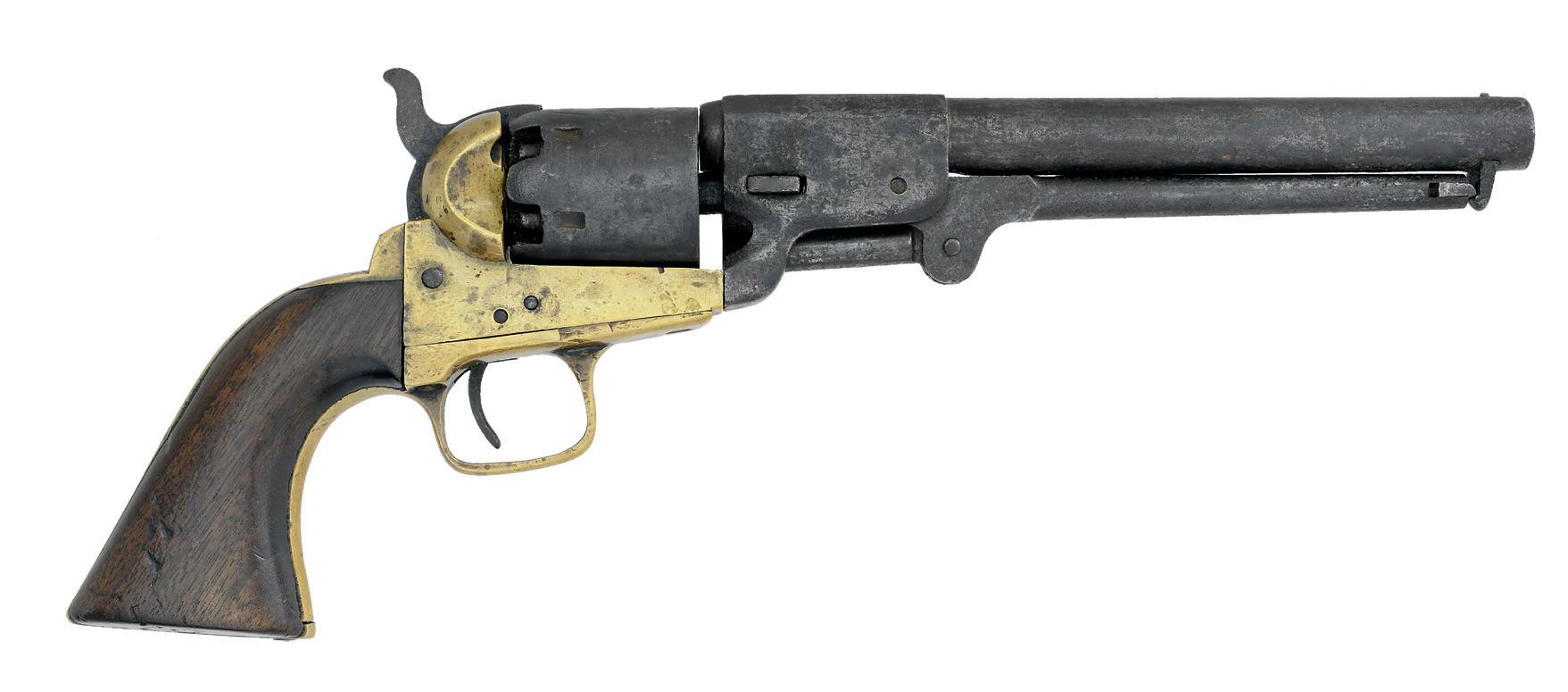







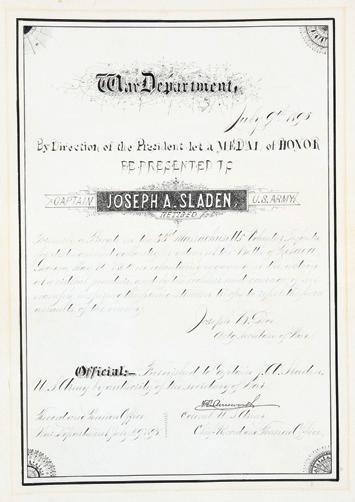
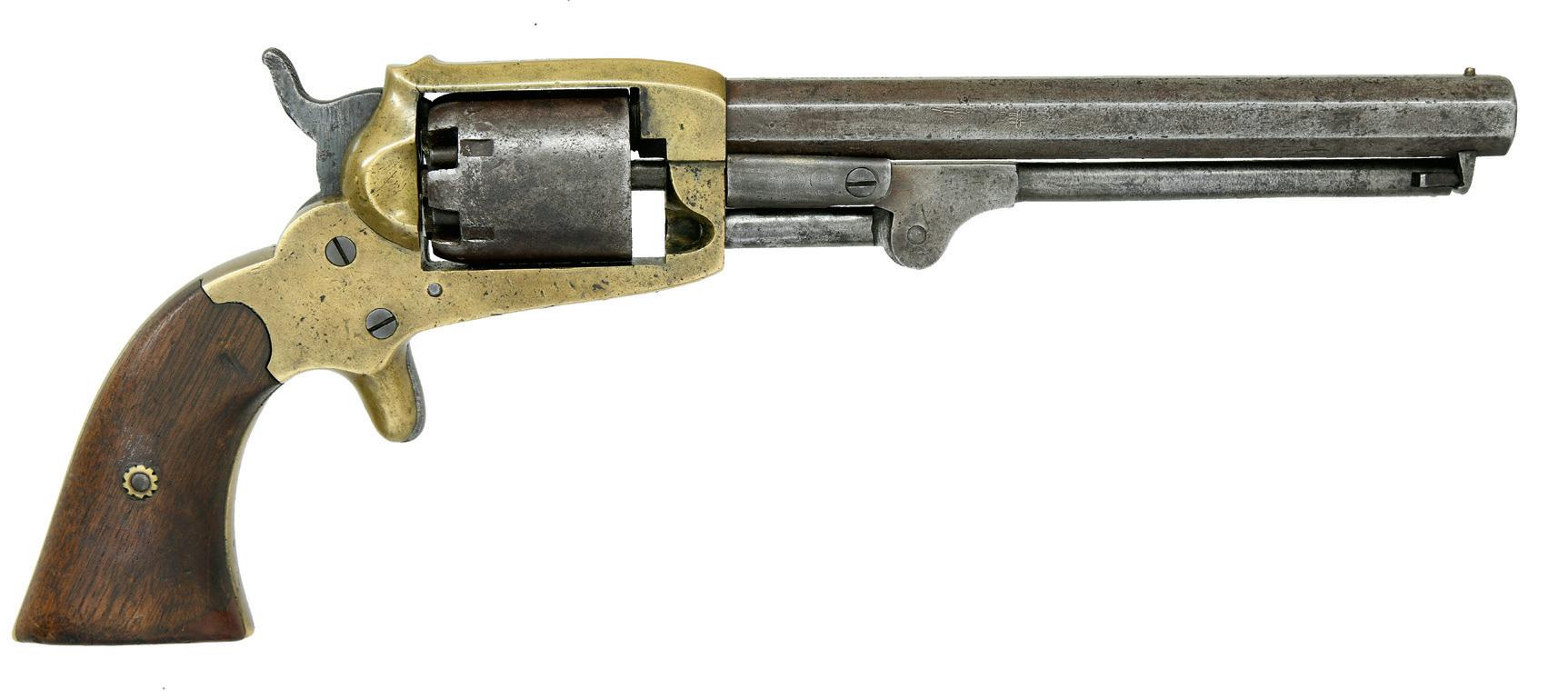
poulinauctions.com | 199 Skowhegan Rd, Fairfield, ME 04937 | Stephen Poulin, ME Lic # 1115 • Reputation - Sterling reputation for honest, straight forward business relationship with both buyers and sellers alike. • The Best Rates In The Industry - The Poulin & Julia family provides the most competitive commission rates in the industry. Including 0% or better seller’s commission on expensive items and valuable collections. • Finest Expertise - We utilize over 250 years of combined professional consultant experience and an additional three-generations of marketing expertise of nearly $1 BILLION in combined total sales by the Poulin & Julia Family. • Unique Auction Description Guarantee - We utilize honest, knowledgeable and detailed descriptions with the most comprehensive guarantee, building the highest level of confidence from bidders and generating the greatest return for consignors. • Presentation - Building interest and enthusiasm from potential bidders is crucial for achieving the maximum value for our consignors. Utilizing the finest detailed photography, catalog design and state of the art auction facility generates the highest level of excitement from potential bidders & the best results for your collectibles. • Additional Poulin & Julia Family Benefits - Fully insured, numerous bidding options available, complimentary consignment pick up for expensive items and valuable collections, massive client base of international and domestic clientele & extremely aggressive marketing campaign. Nearly IN COMBINED TOTAL SALES EXPERIENCE Contact Jim for a free consignment consultation at (207) 742-0007 or email jamesjulia@poulinauctions.com $1 BILLION THE TRADITION CONTINUES... FAMILY REUNION! His expertise and experience in marketing and achieving the best results for high end quality firearms & collectibles will help continue to grow our firm into the leading specialty firearms auctioneer in the world. We are pleased to announce the renewed partnership with the world-famous auctioneer... James D. Julia! 0% Or Better! Seller’s Commission On Expensive Items & Valuable Collections THE POULIN & JULIA FAMILY DIFFERENCE If you are interested in more information about consigning a single item or an entire collection, we would very much like to discuss with you the methods and strategies to generate you, the consignor, the greatest return. Contact James Julia for a free consignment consultation at: or by email: (207) 742-0007 jamesjulia@poulinauctions.com To view additional highlights from our upcoming Fall 2023 Premier, please visit: www.poulinauctions.com ACCEPTING CONSIGNMENTS FALL 2023 PREMIER FIREARMS & MILITARIA AUCTION November 3rd, 4th, & 5th, 2023 | Fairfield ME “As Found” All Original Confederate Griswold Brass Frame Revolver Visit Poulin Auctions On YouTube.com to view a large variety of in-depth videos! High Grade Horstmann Staff & Field Officer Sword Presented In The Field At Hatteras Inlet, NC To Major Daniel Nagle, 48th Pennsylvania “As Found” Thomas, Griswold New Orleans Confederate Artillery Saber Medal Of Honor Recipient Joseph A. Sladen Civil War & Reconstruction Era Archive Incredible Archive Concerning “The Capture Of Cochise” 1872 Fine Massachusetts Surcharged Colt 2nd Model Dragoon Revolver Carried By Prominent Massachusetts General Charles Devens of Worchester, MA Rare & Fine Confederate Cofer Percussion Revolver, Joshua P. Melton, Petersburg Artillery












































 By Tim Talbott
By Tim Talbott





























































































 Reviewed by Salvatore
Reviewed by Salvatore






 Reviewed
Reviewed
















